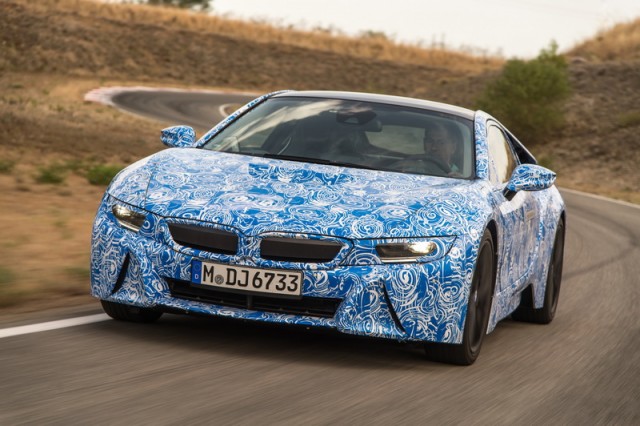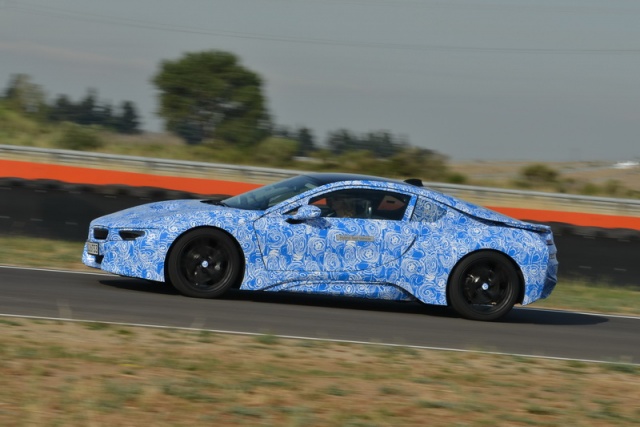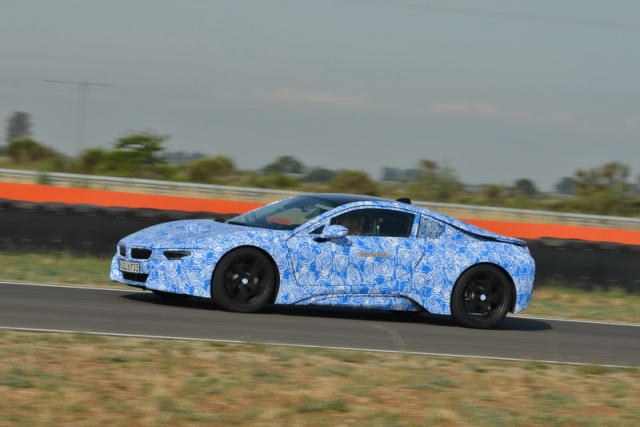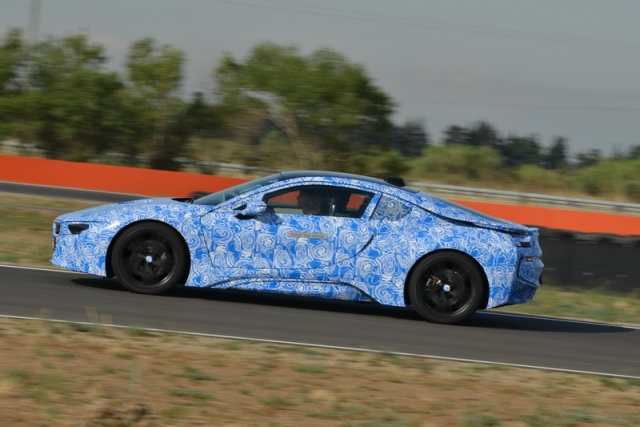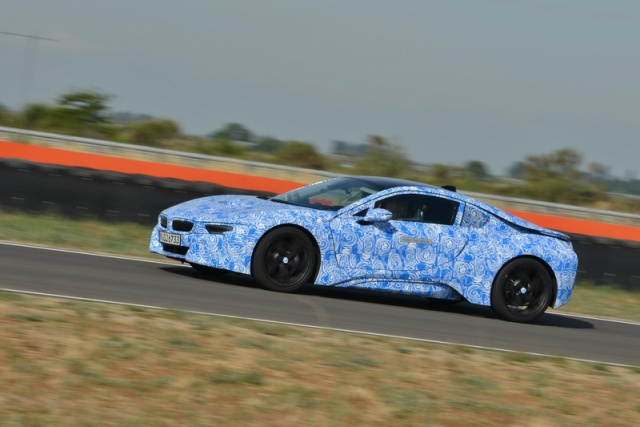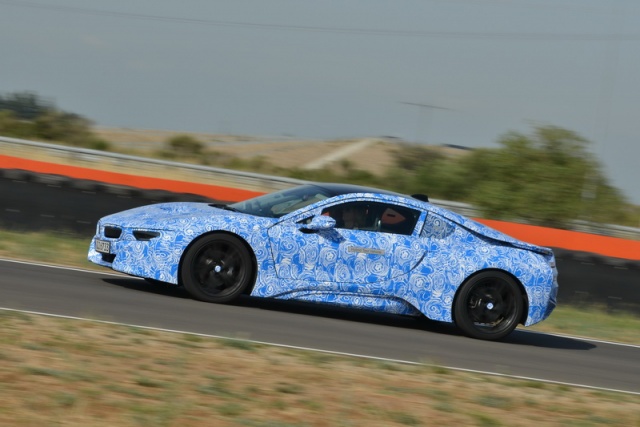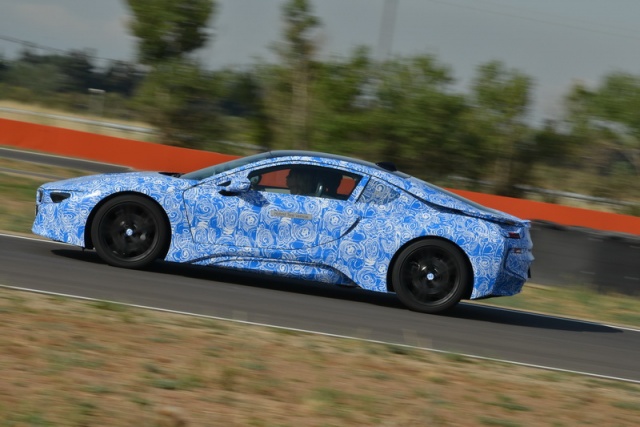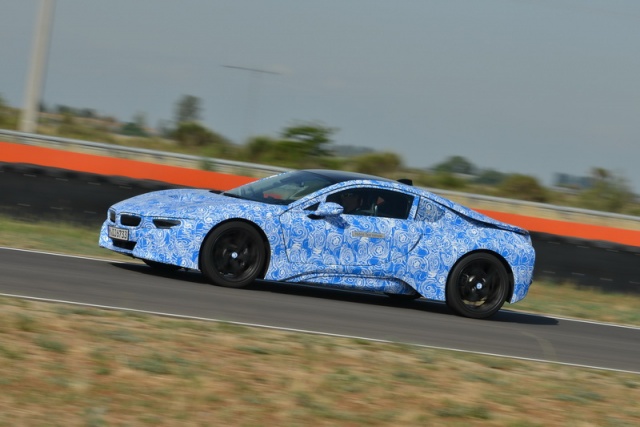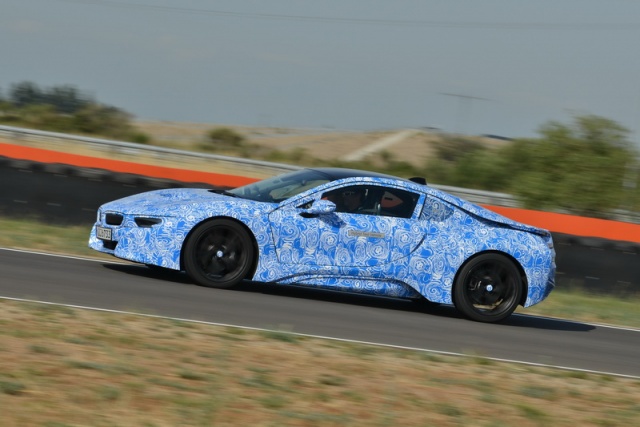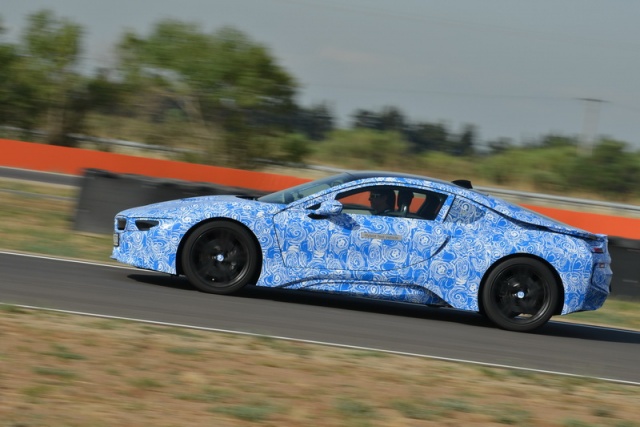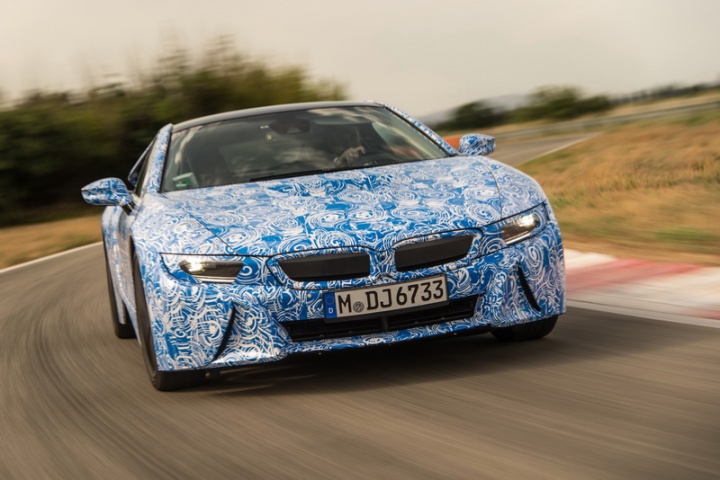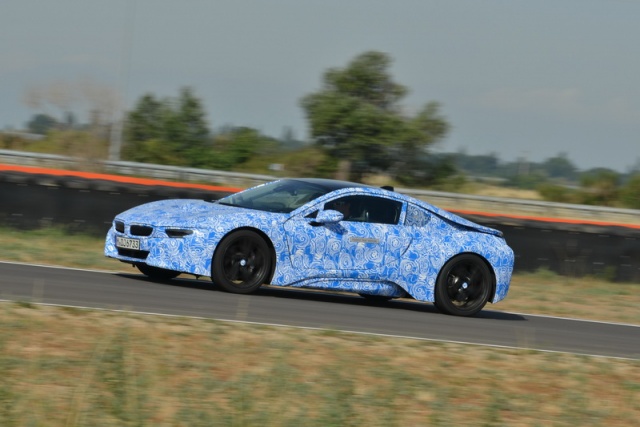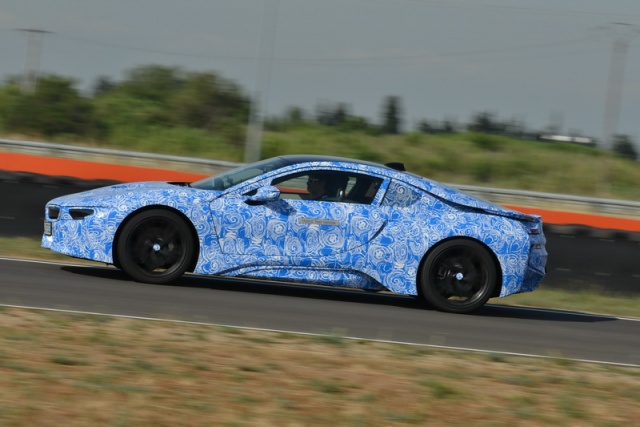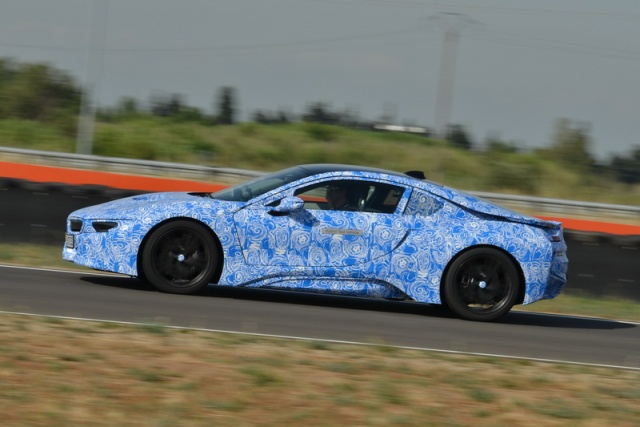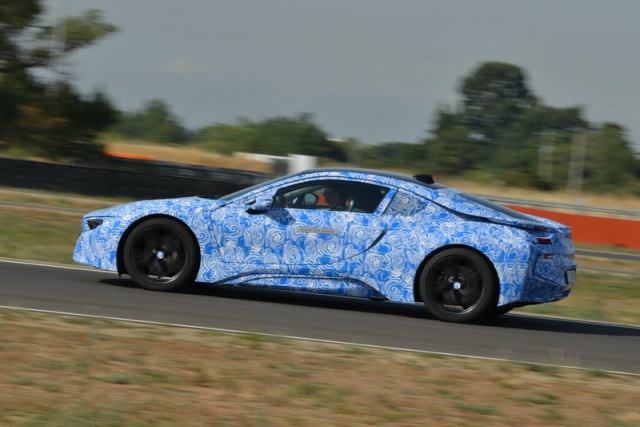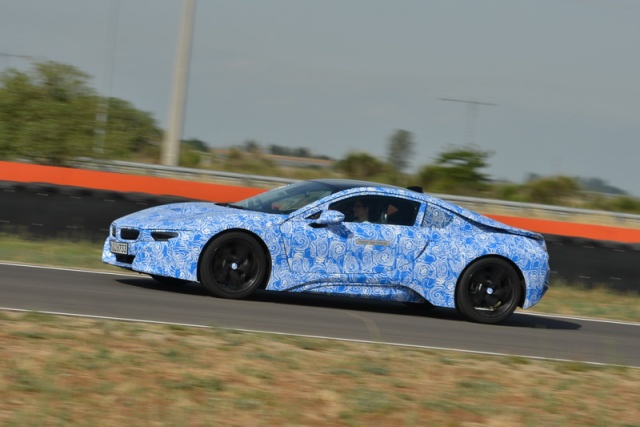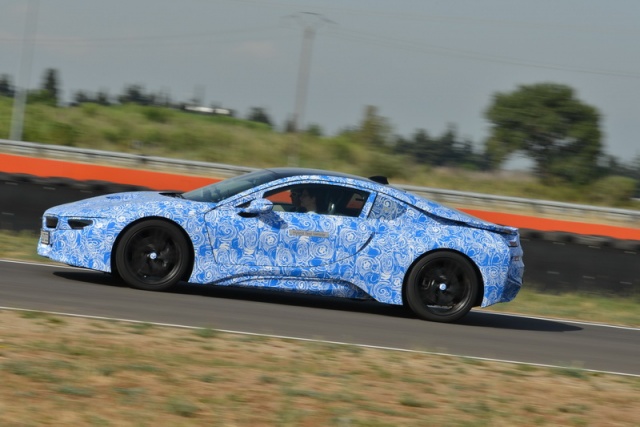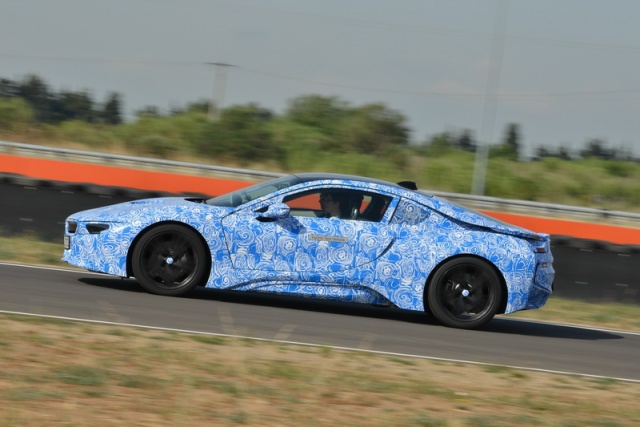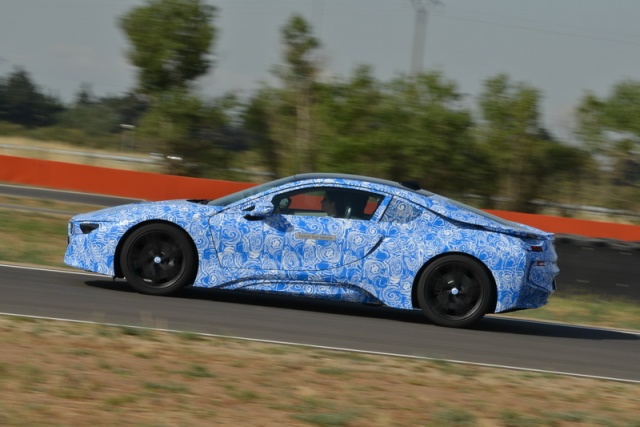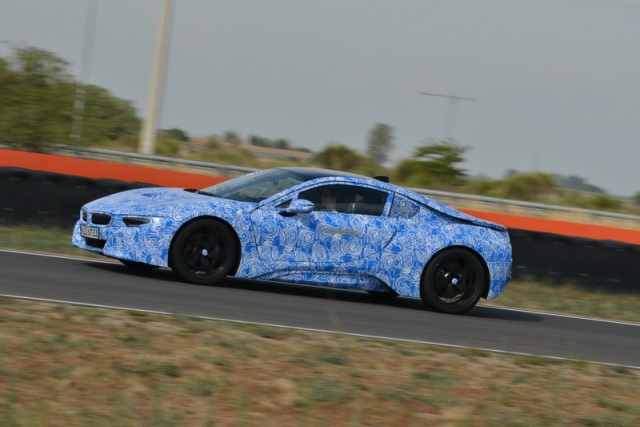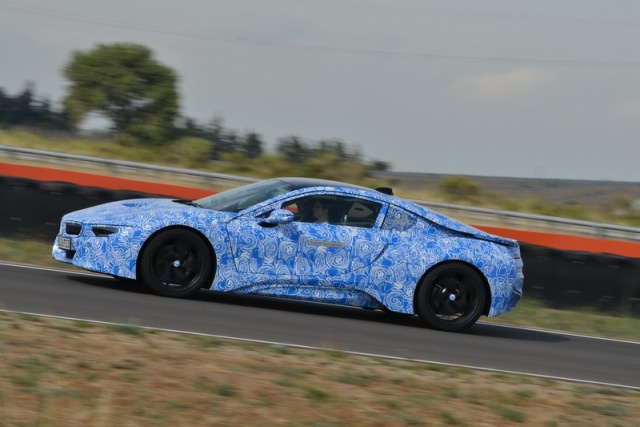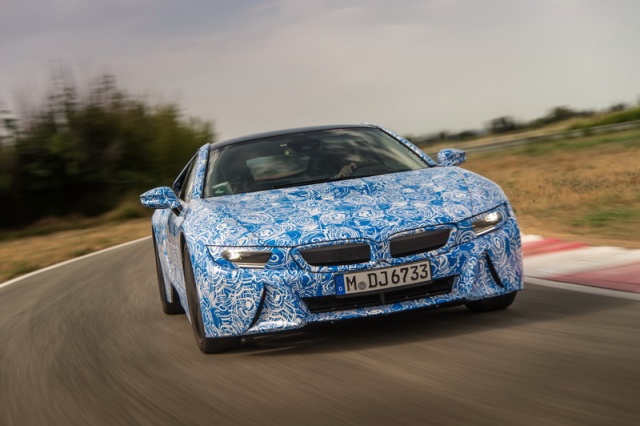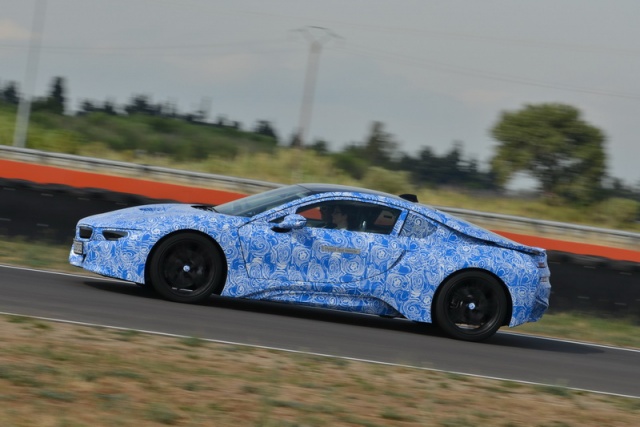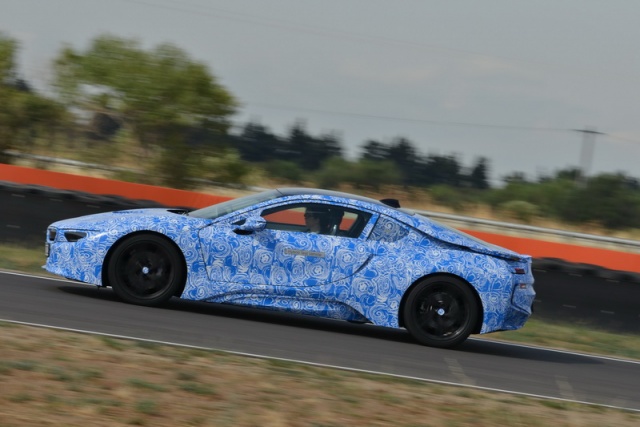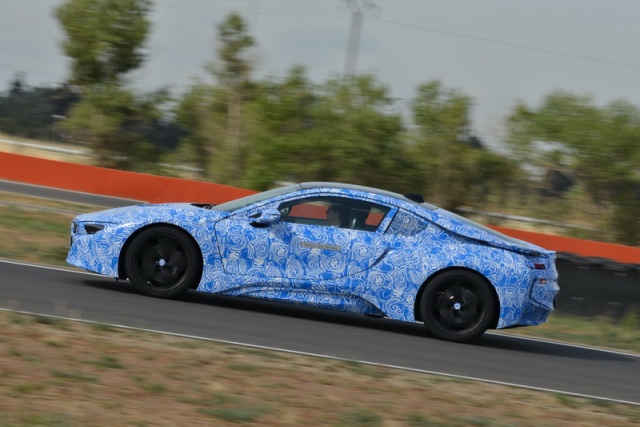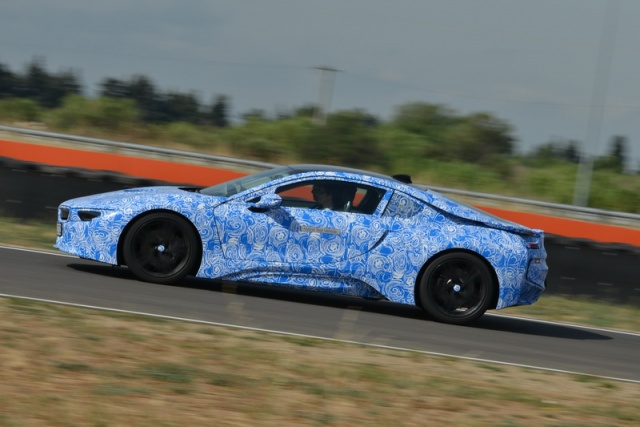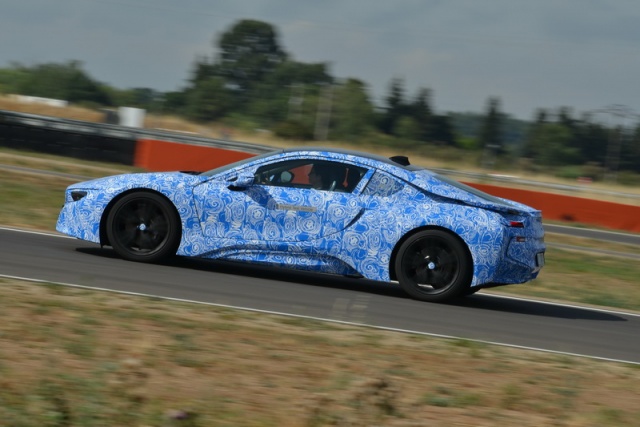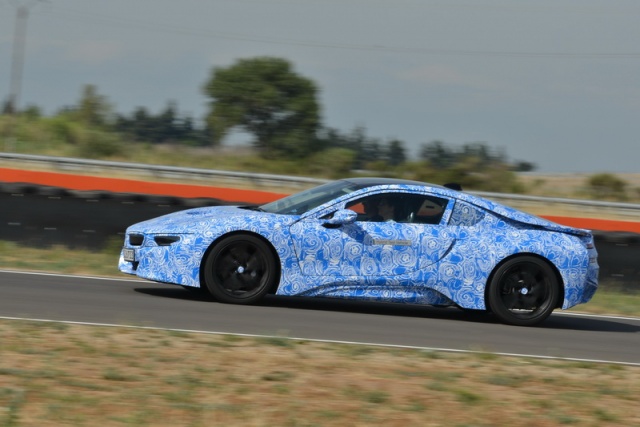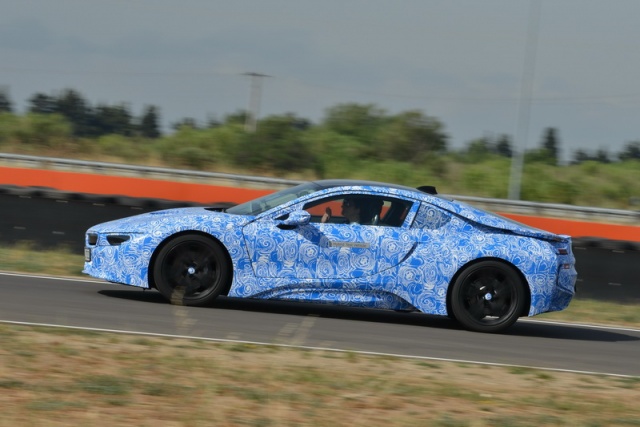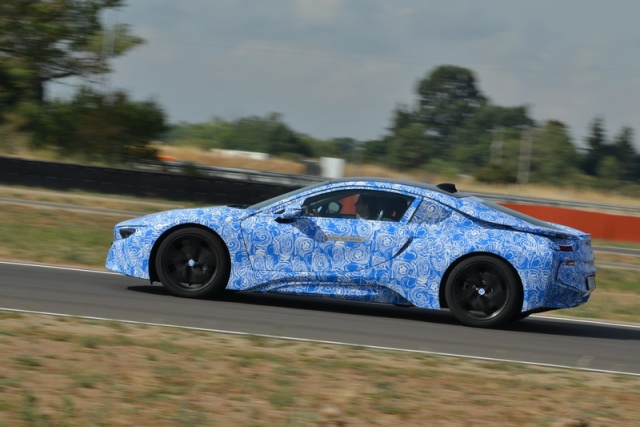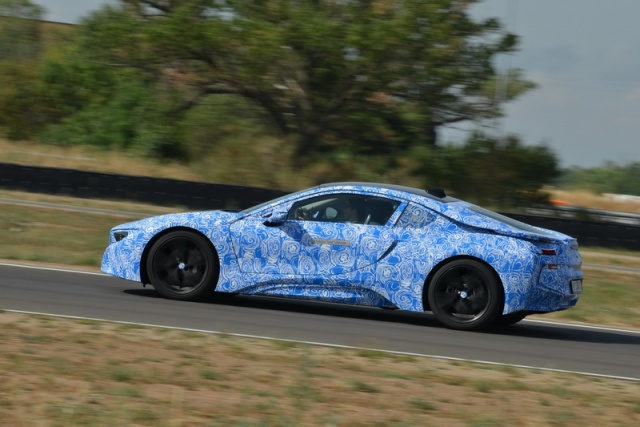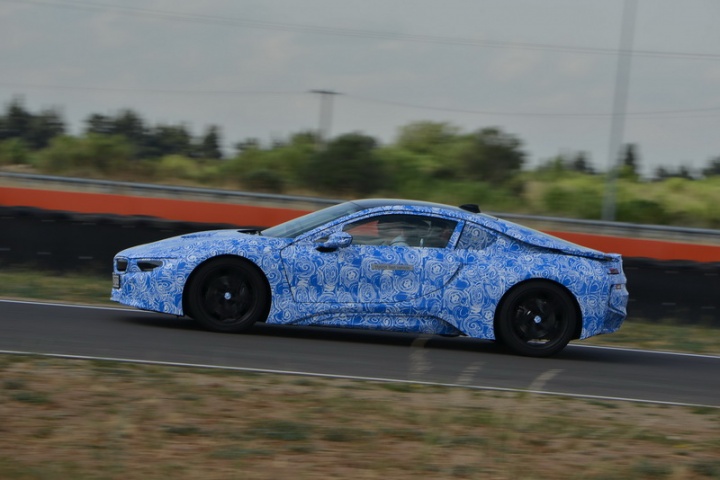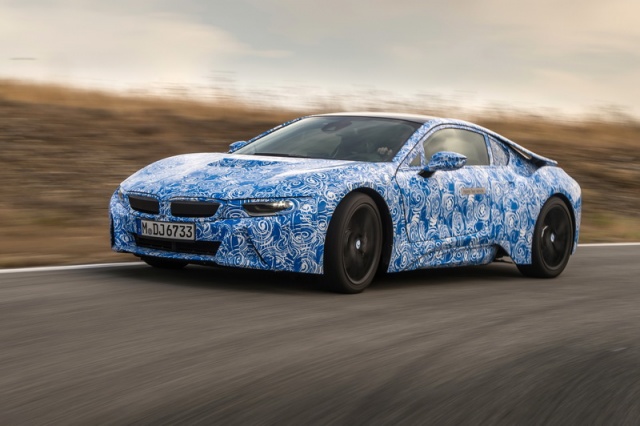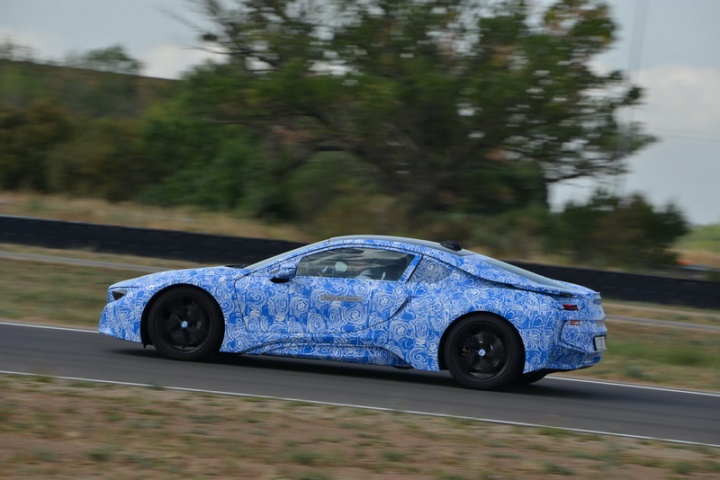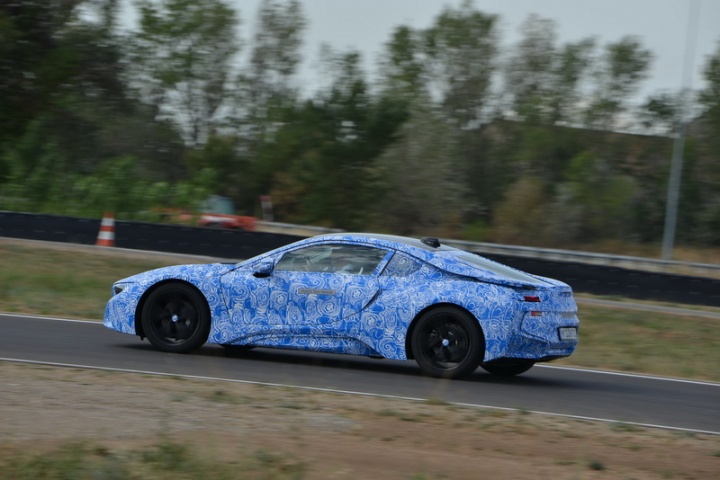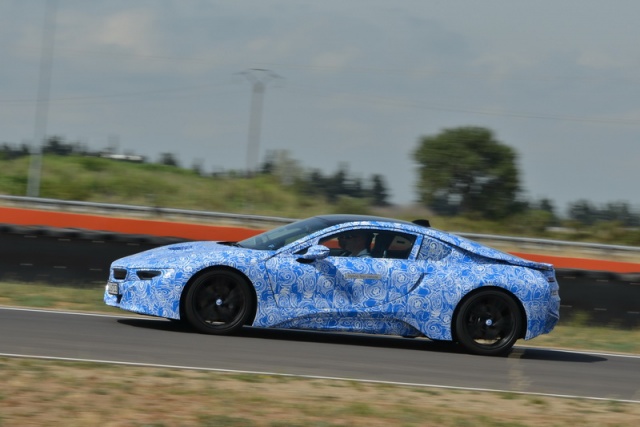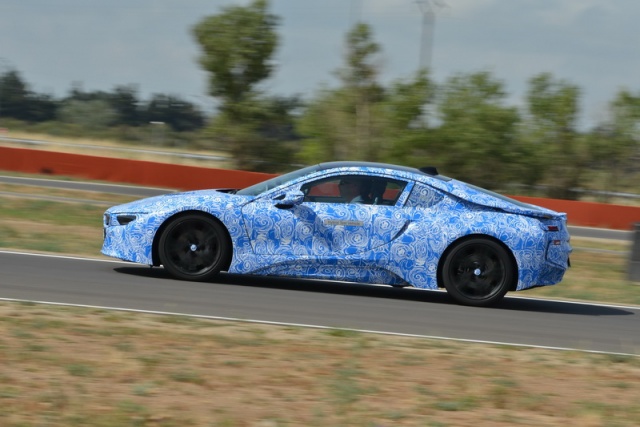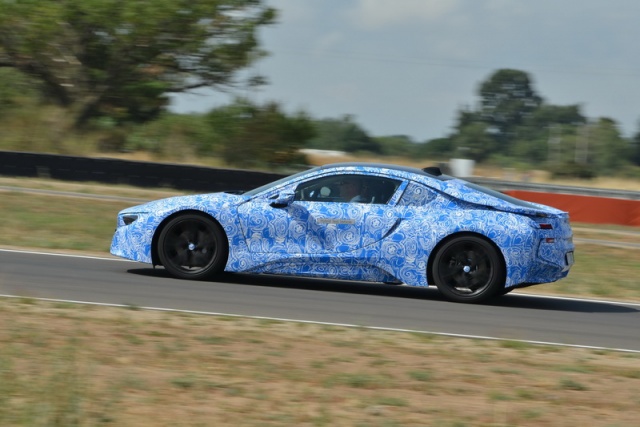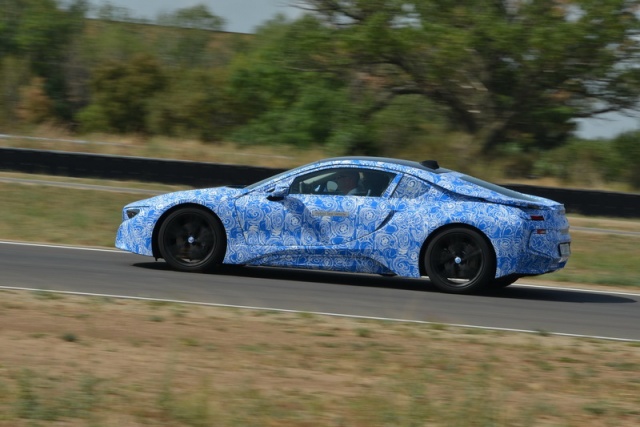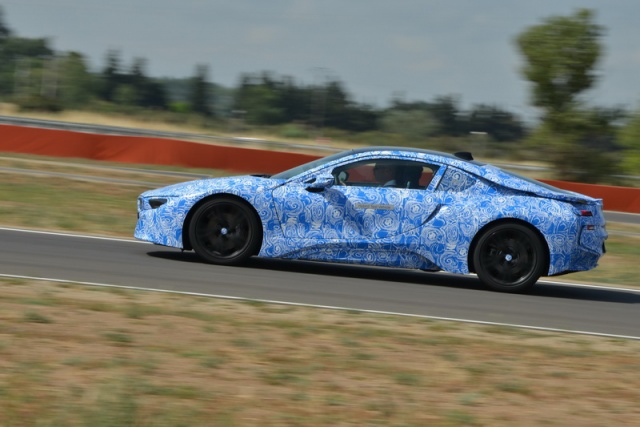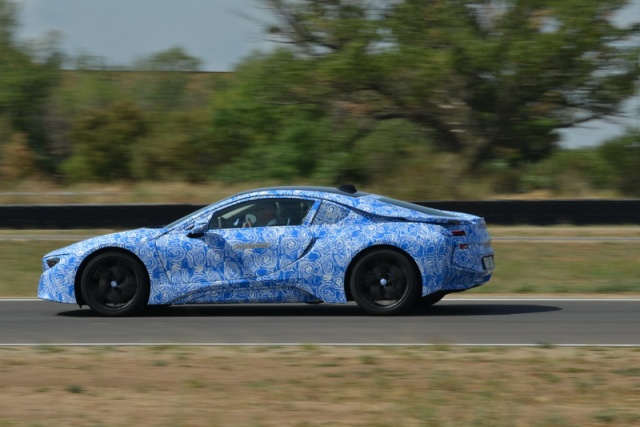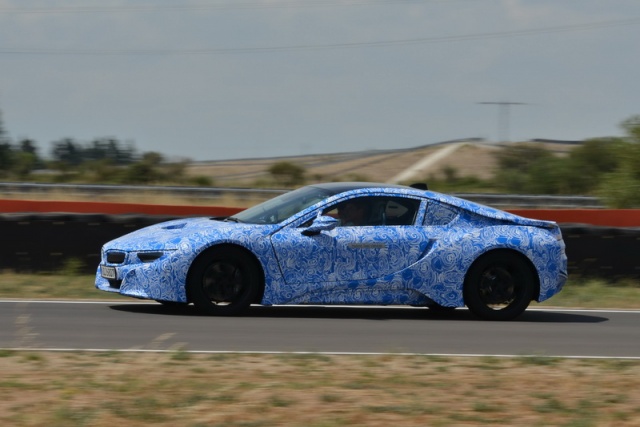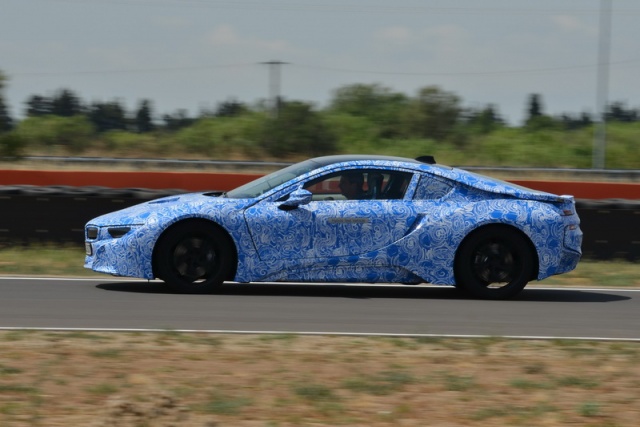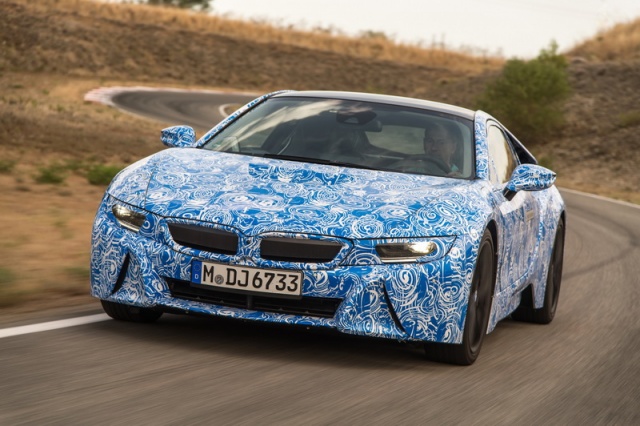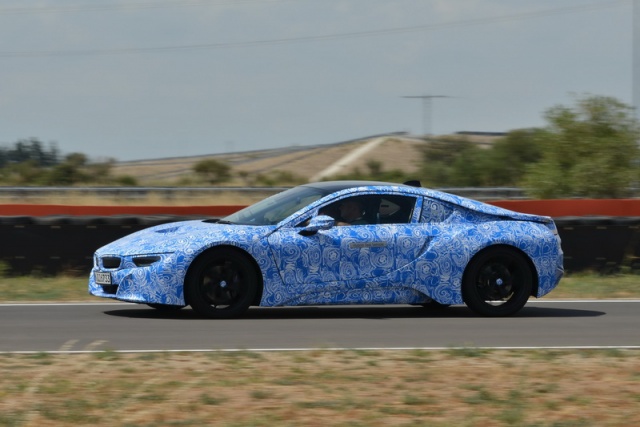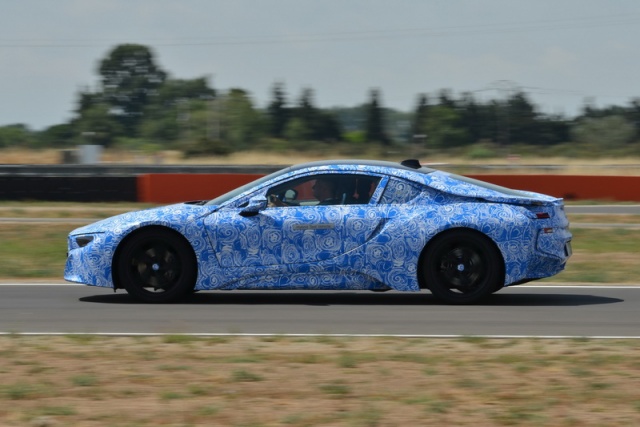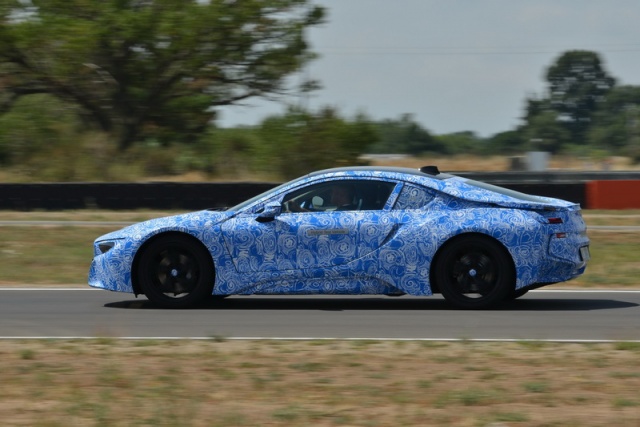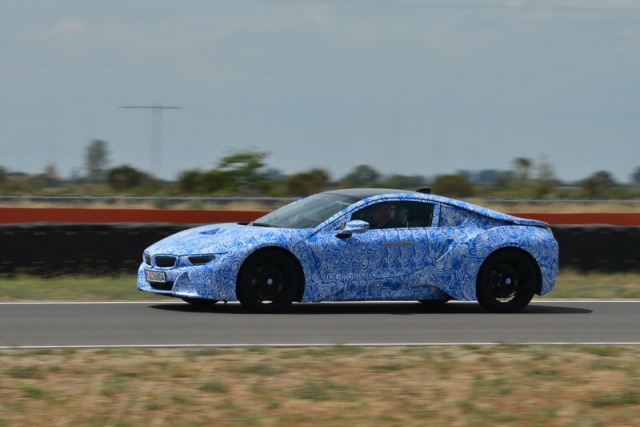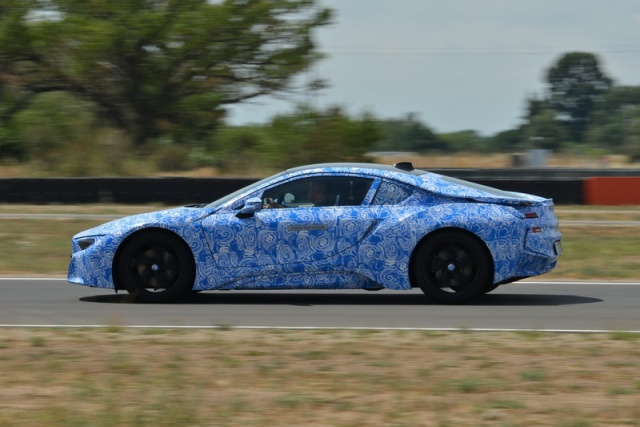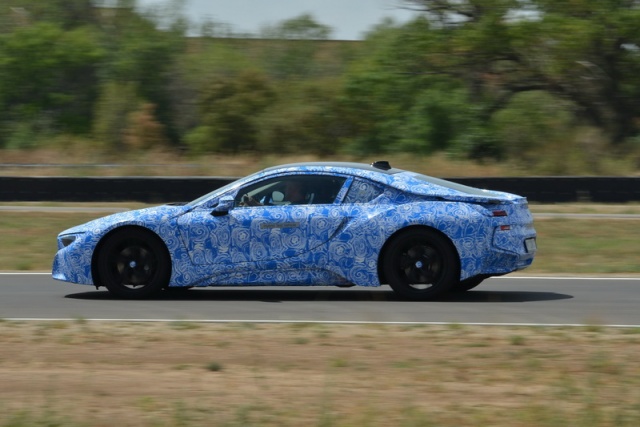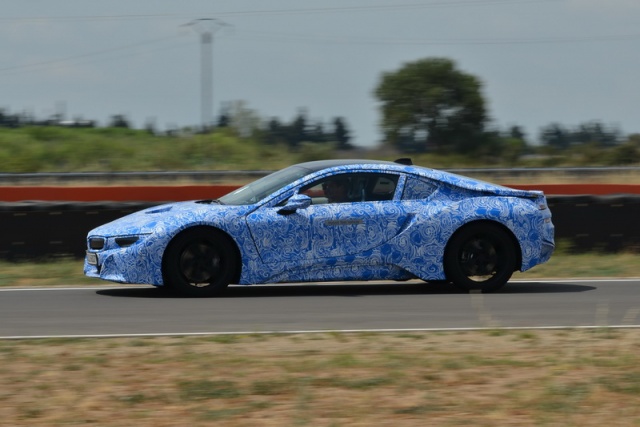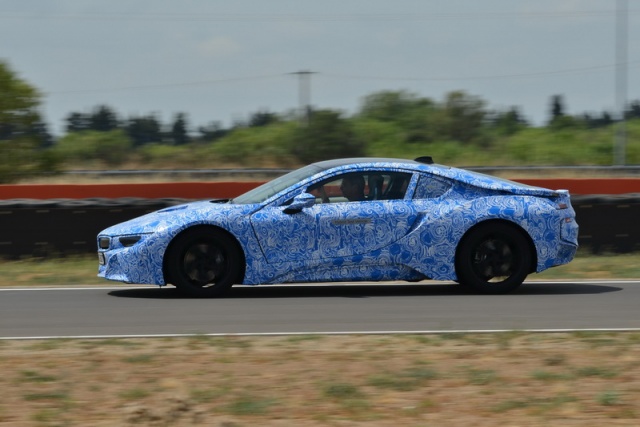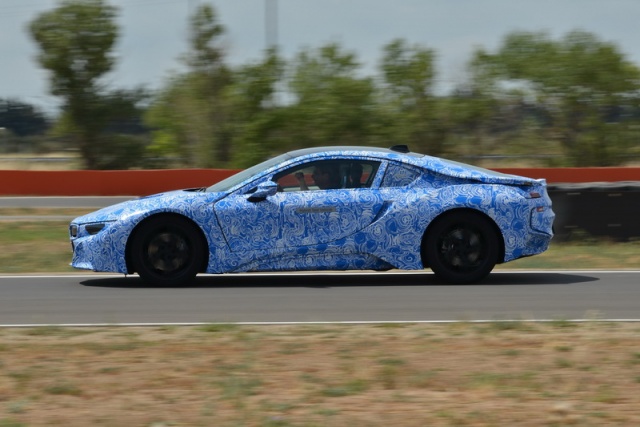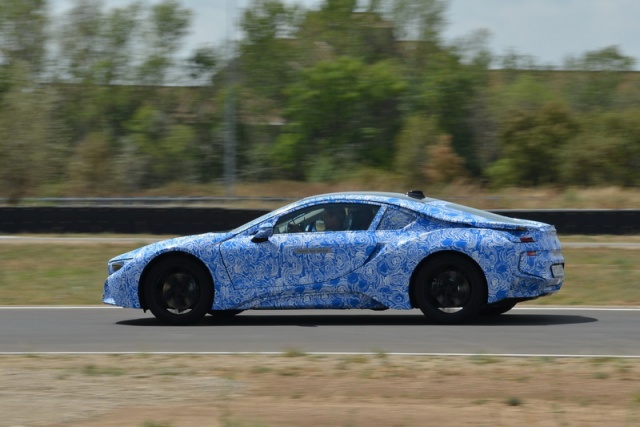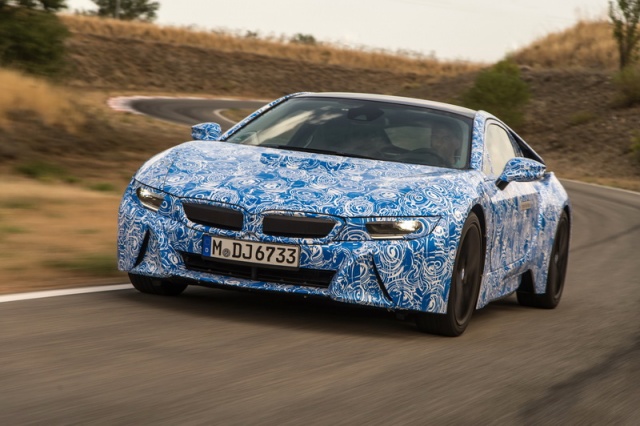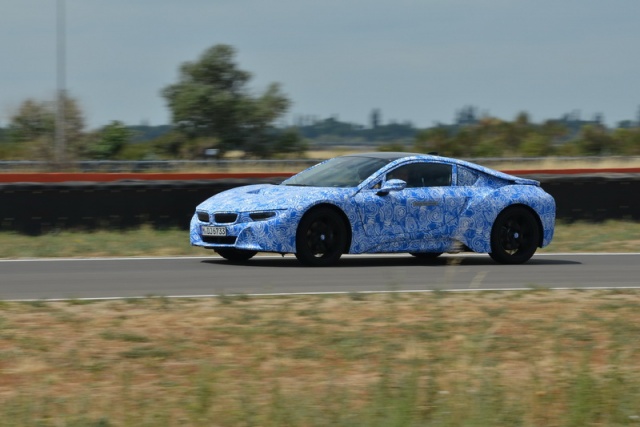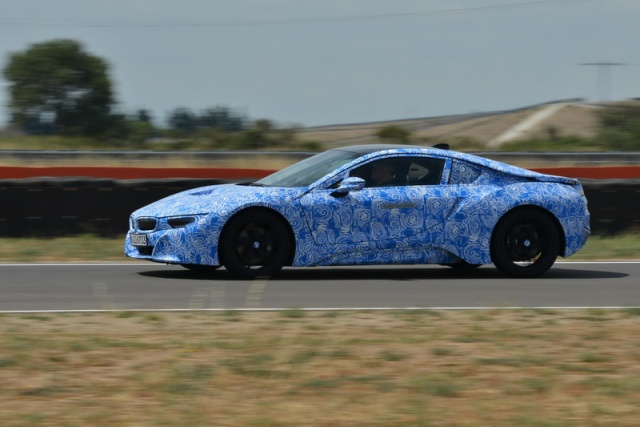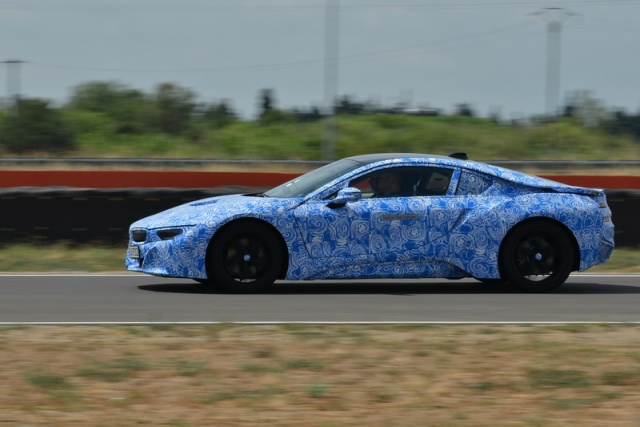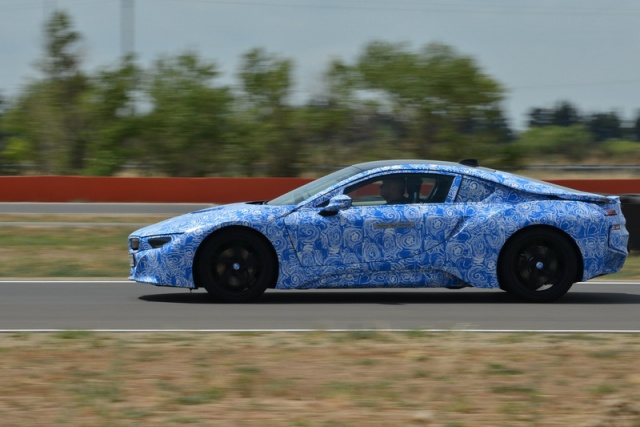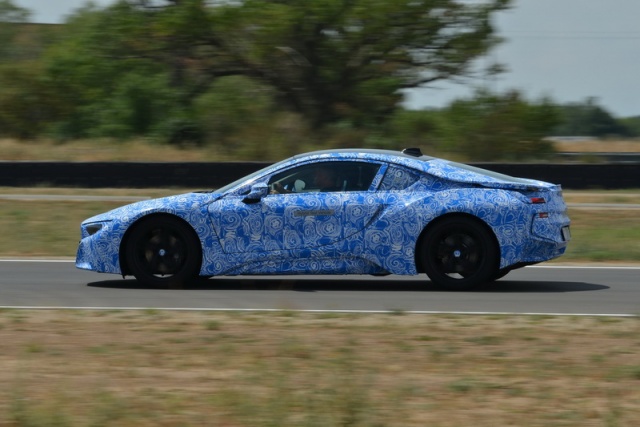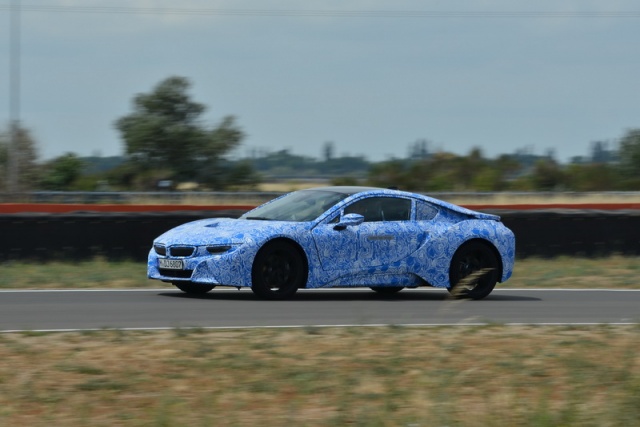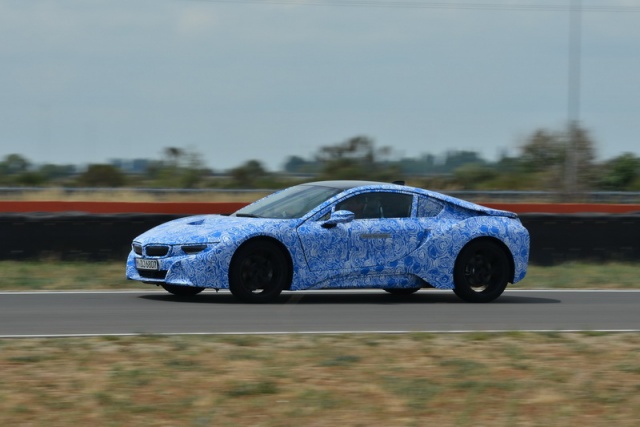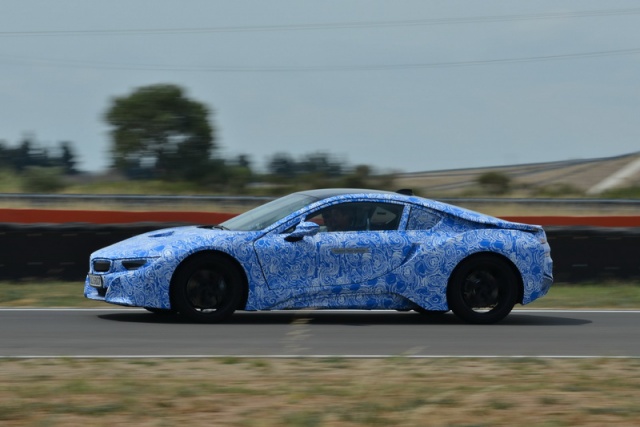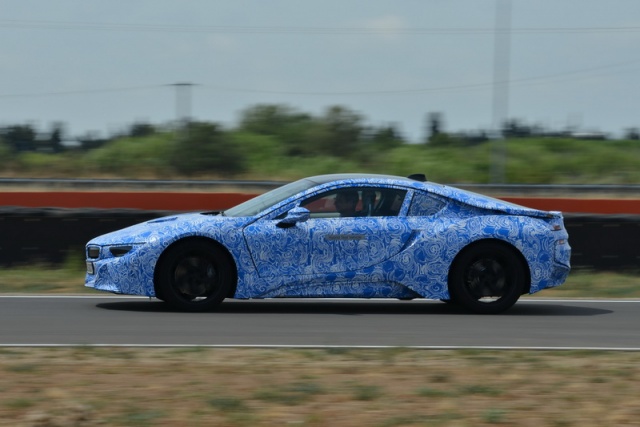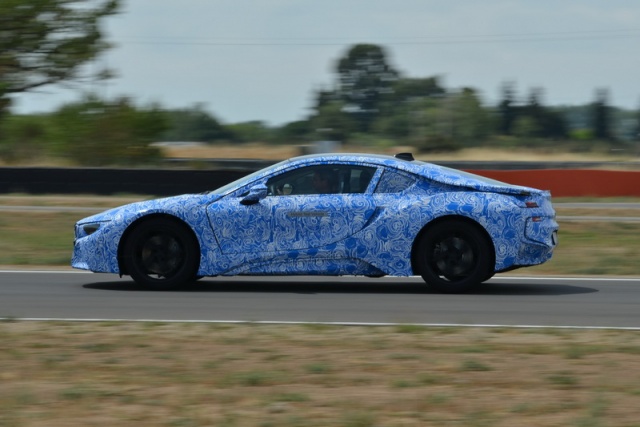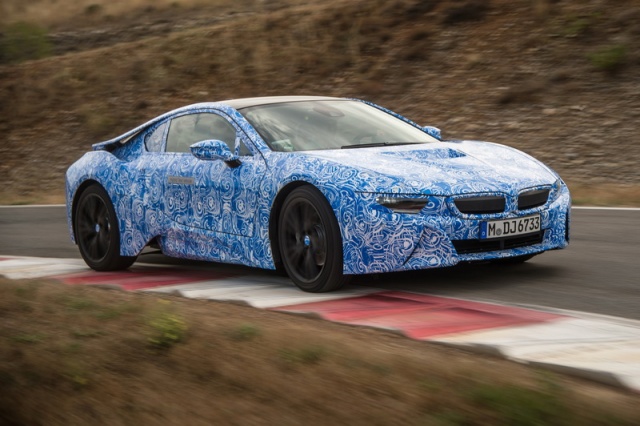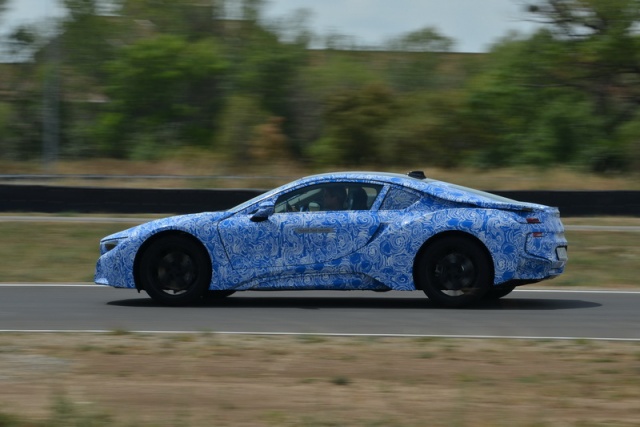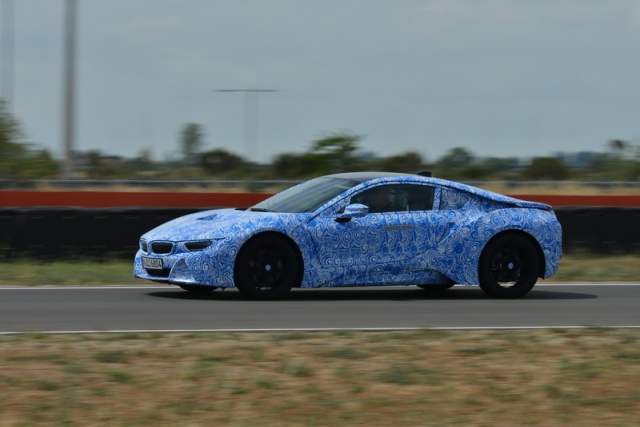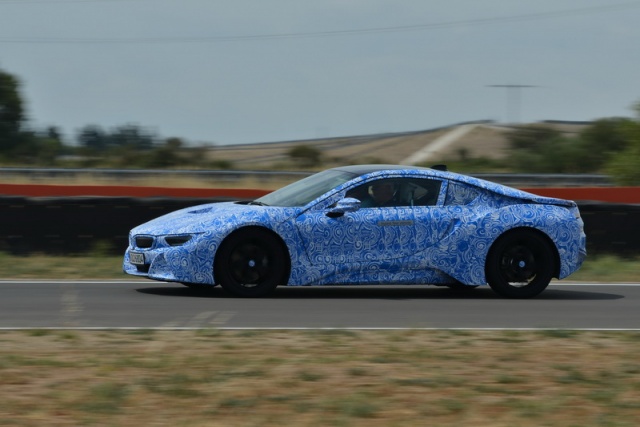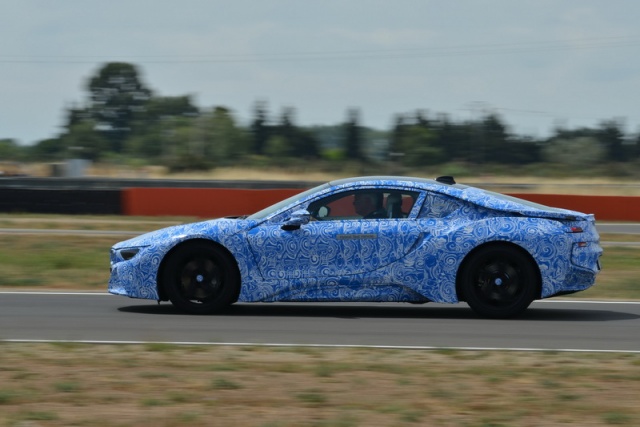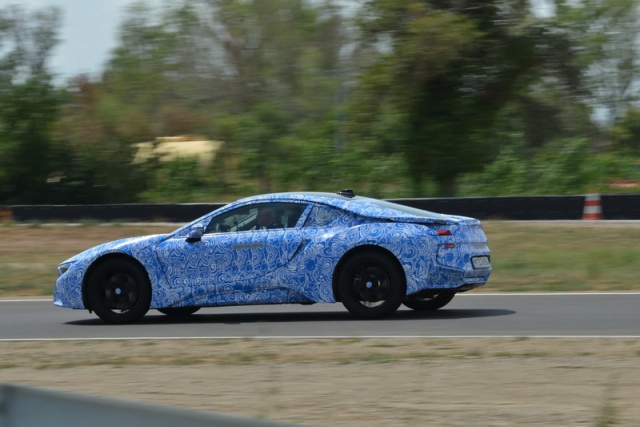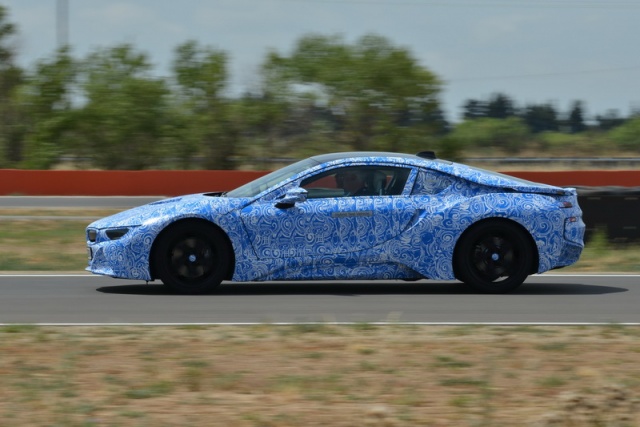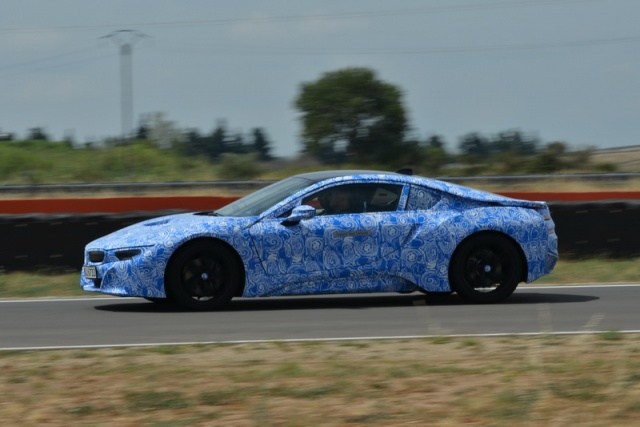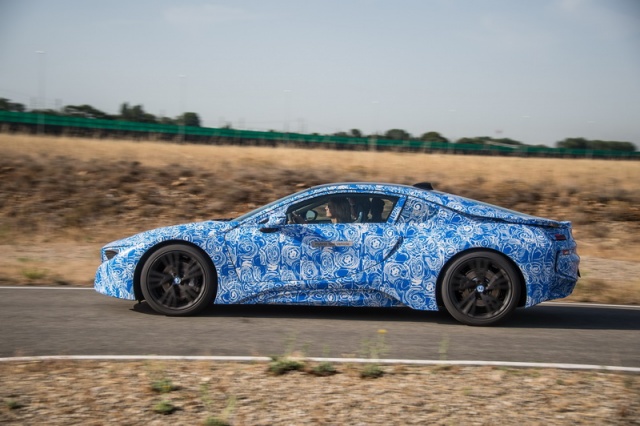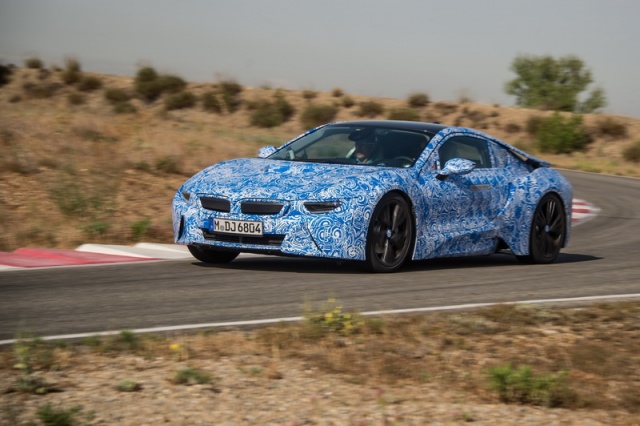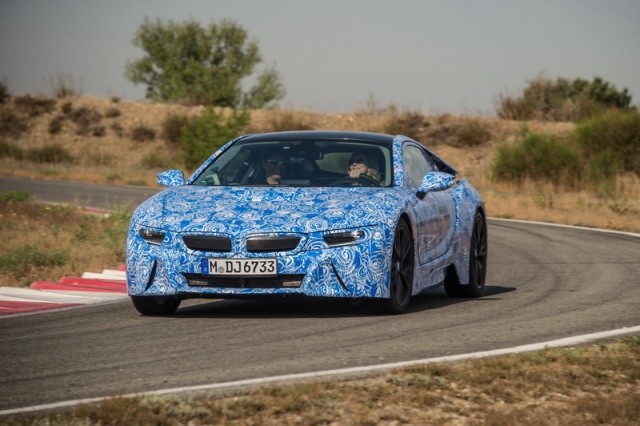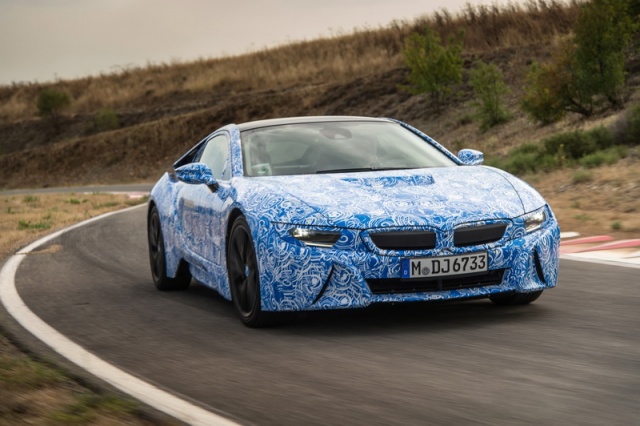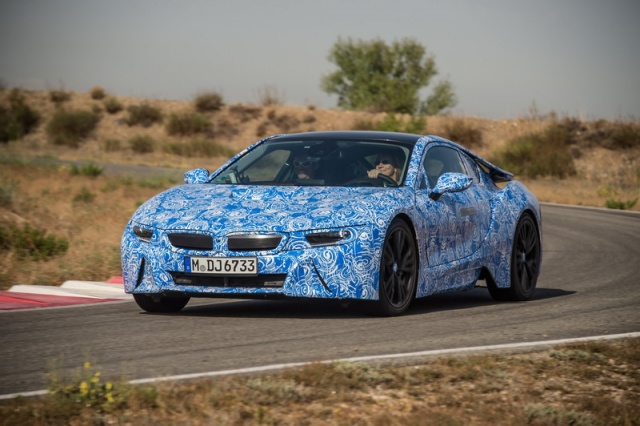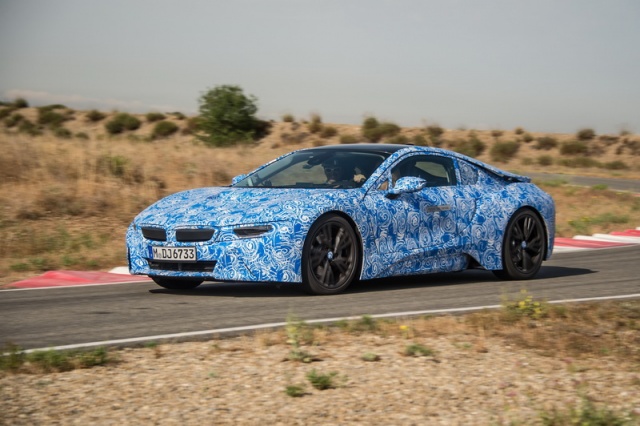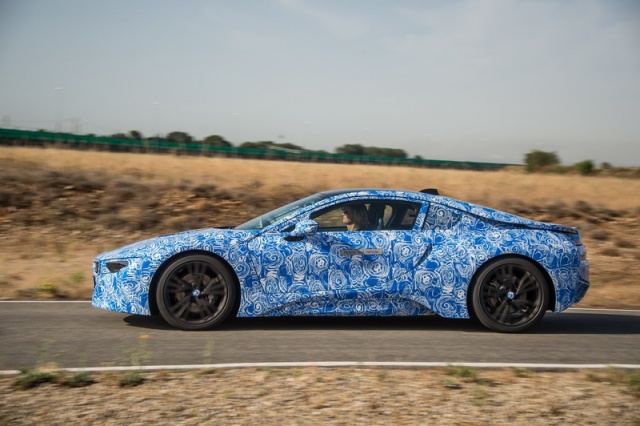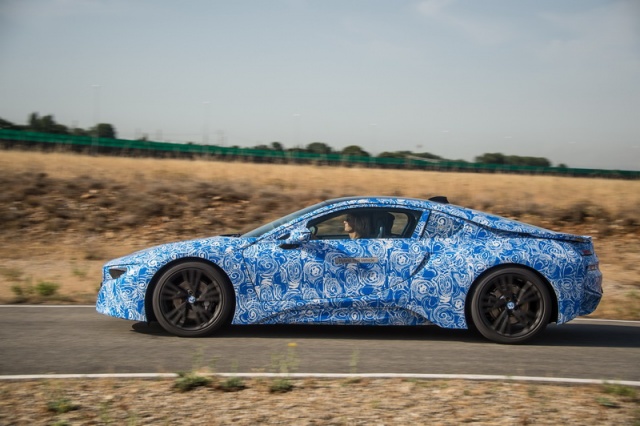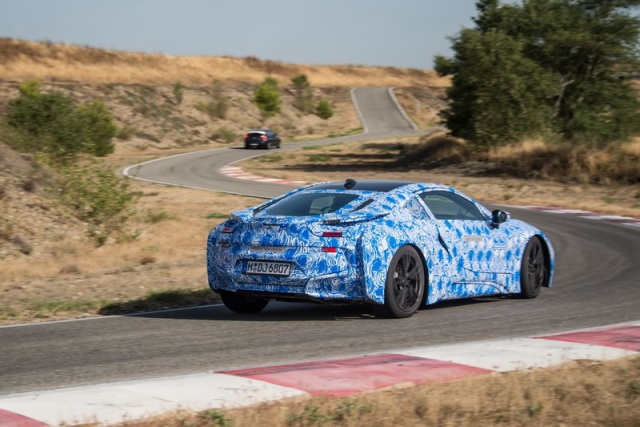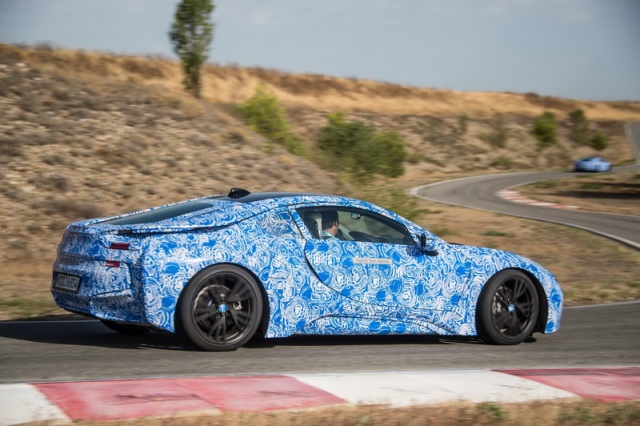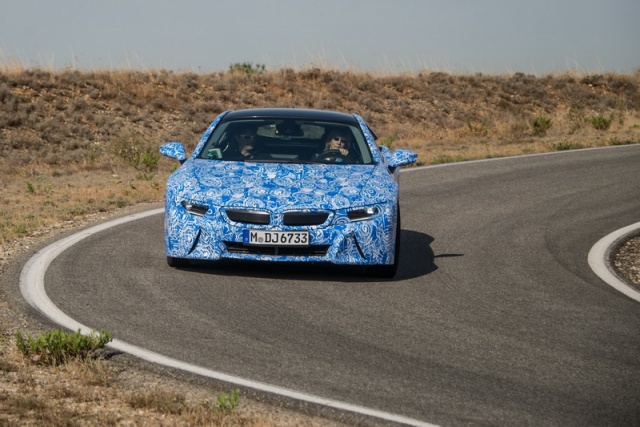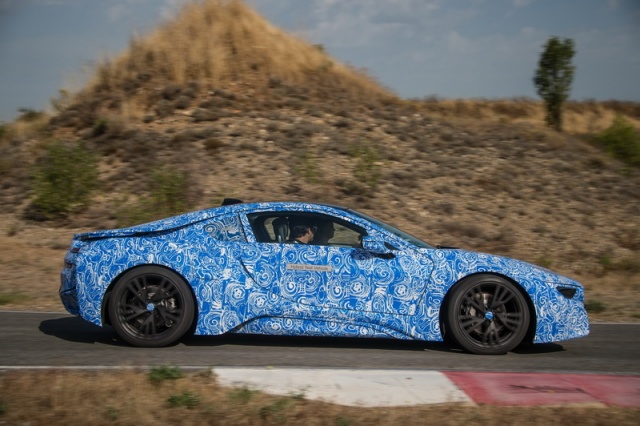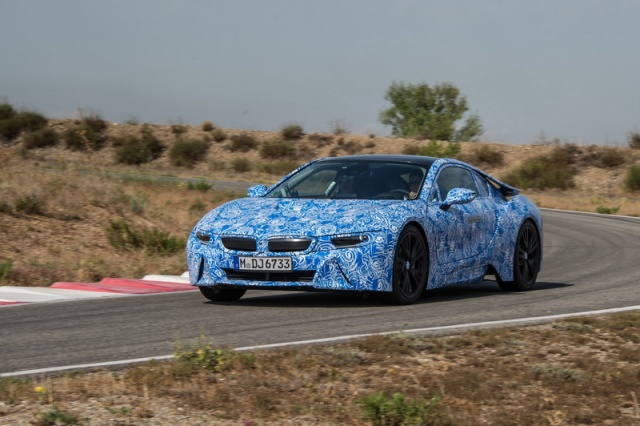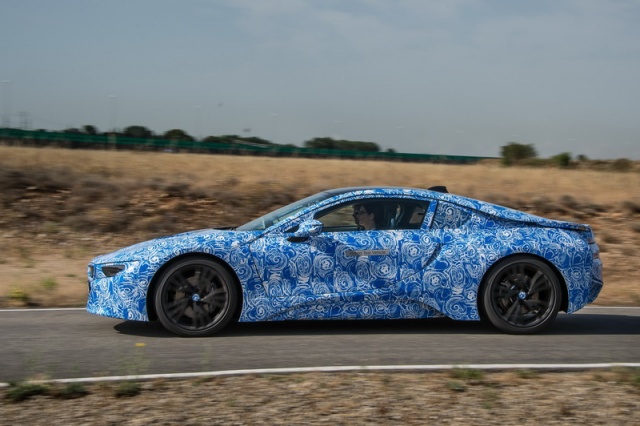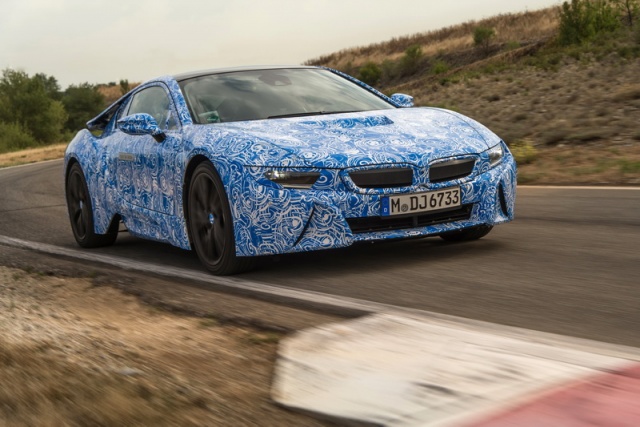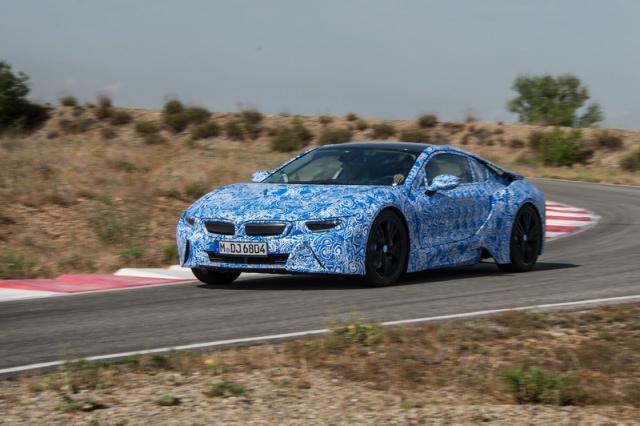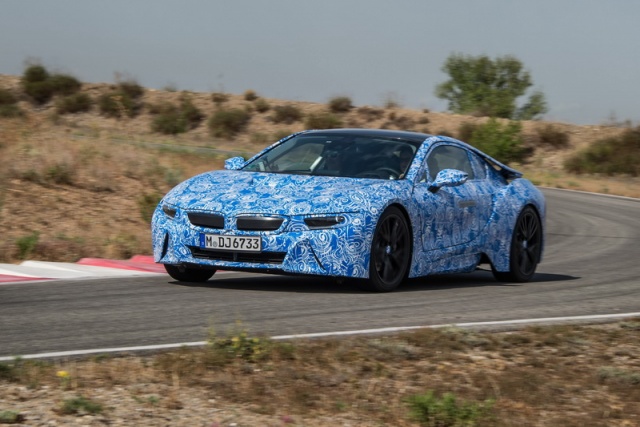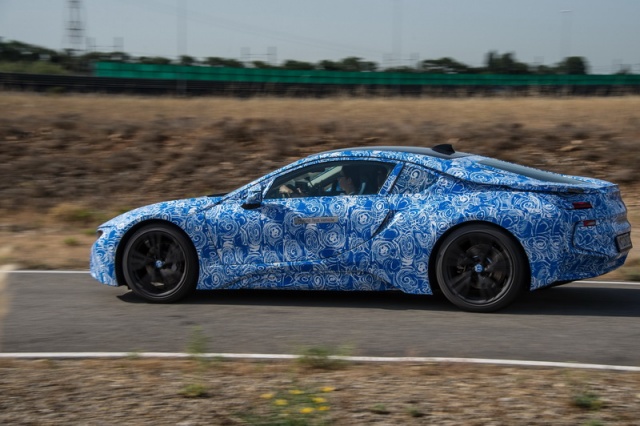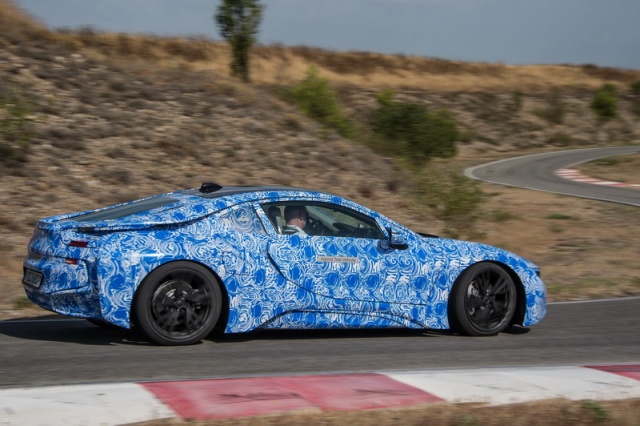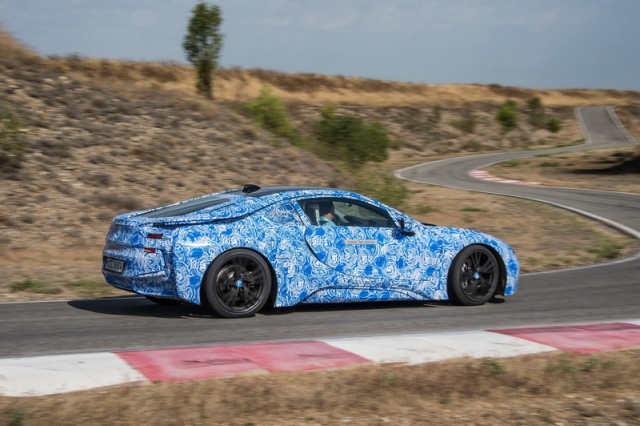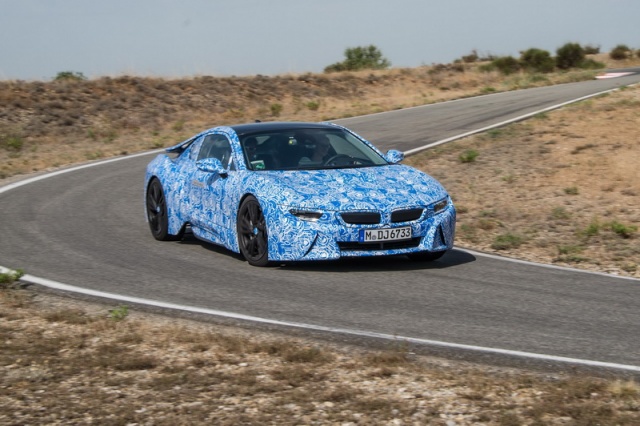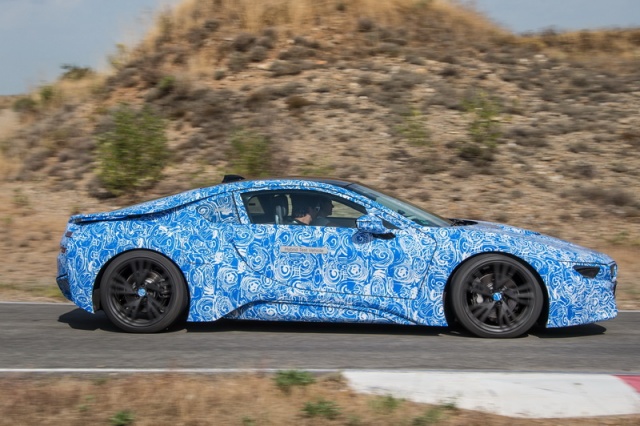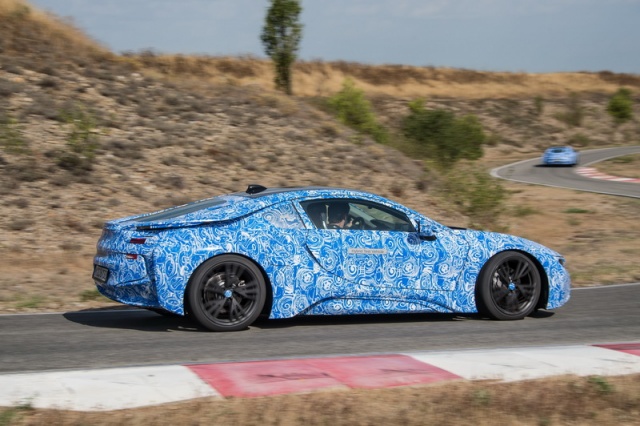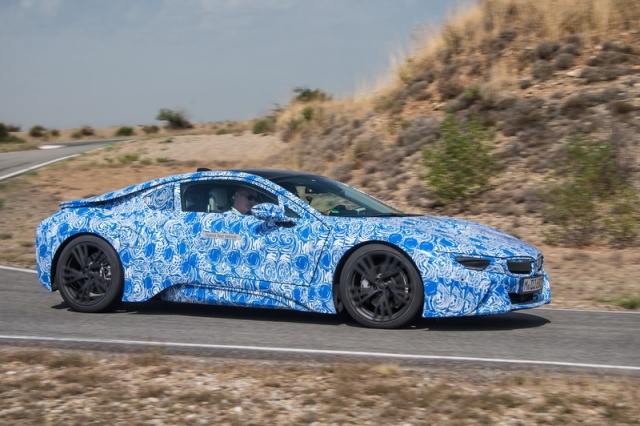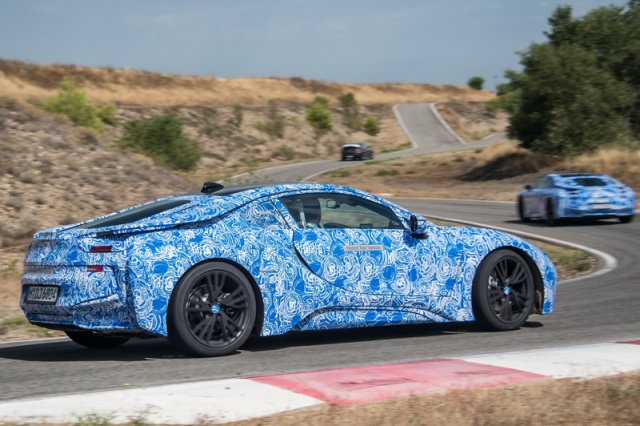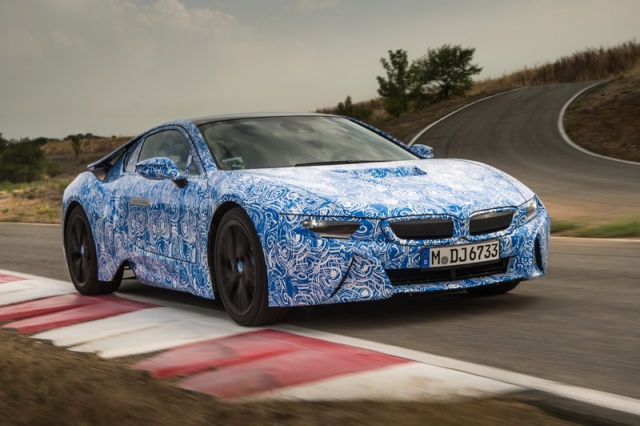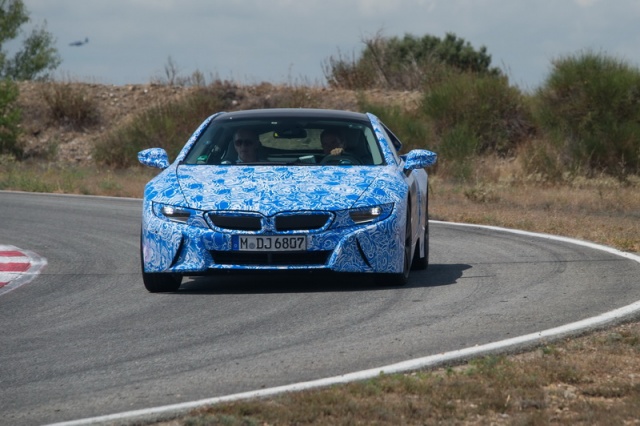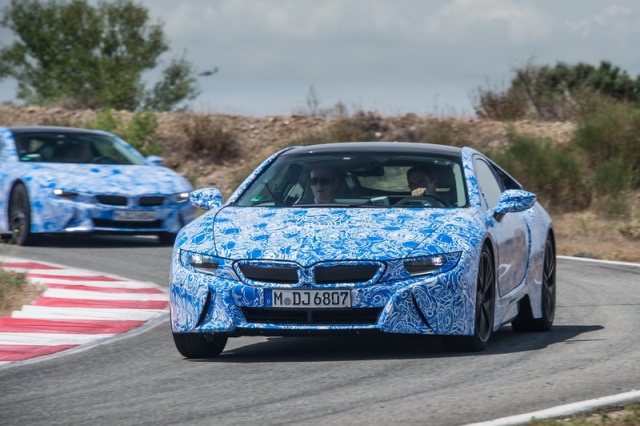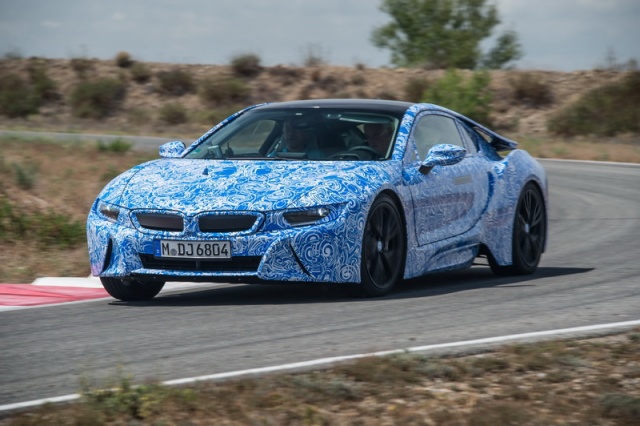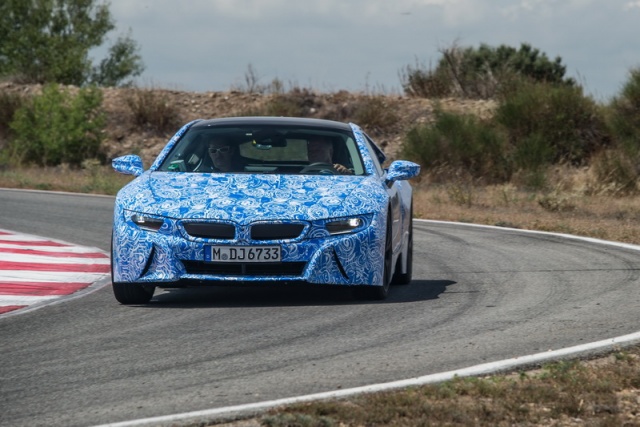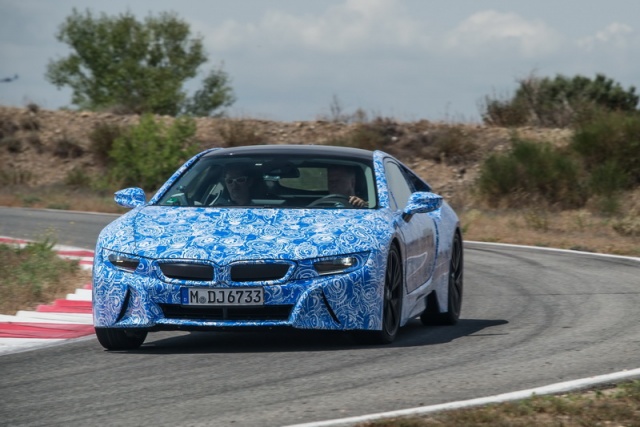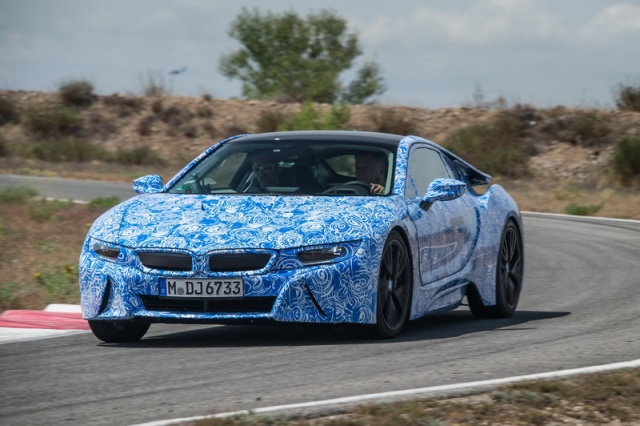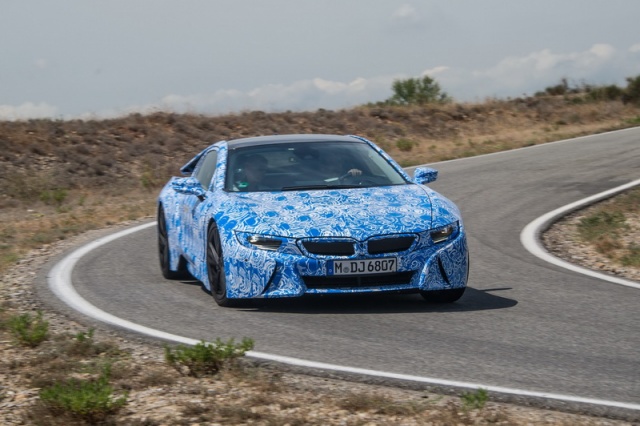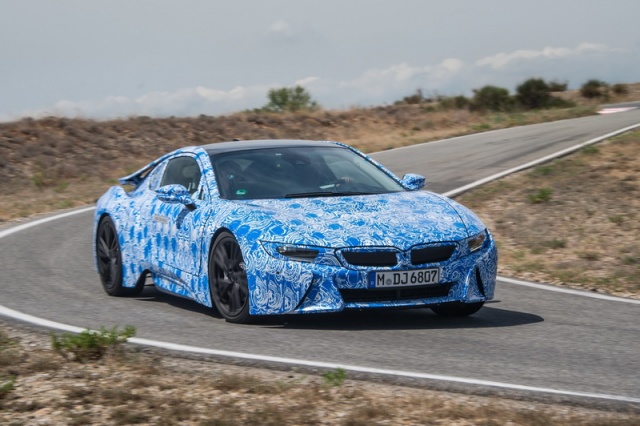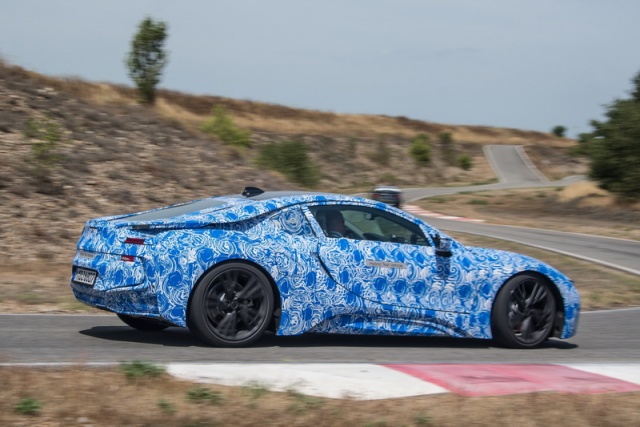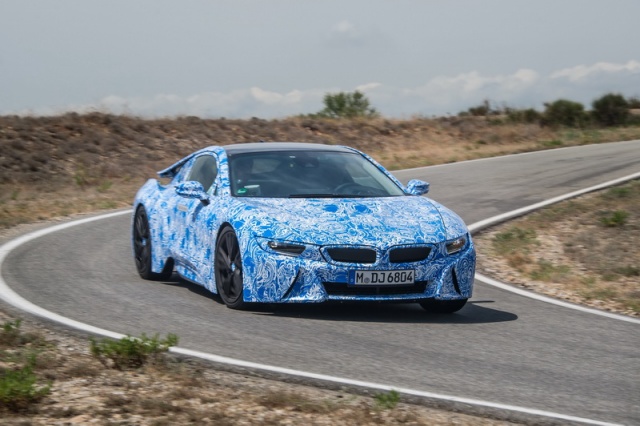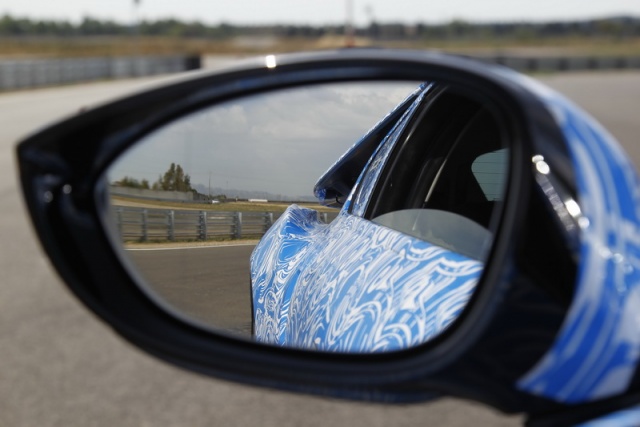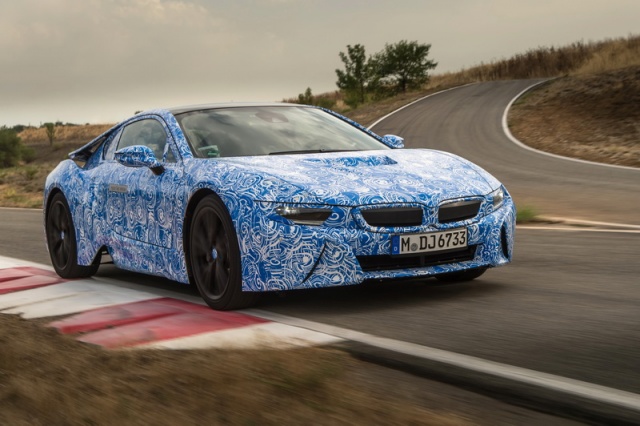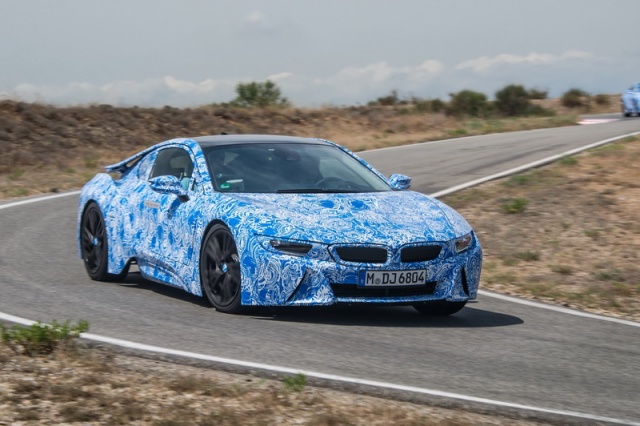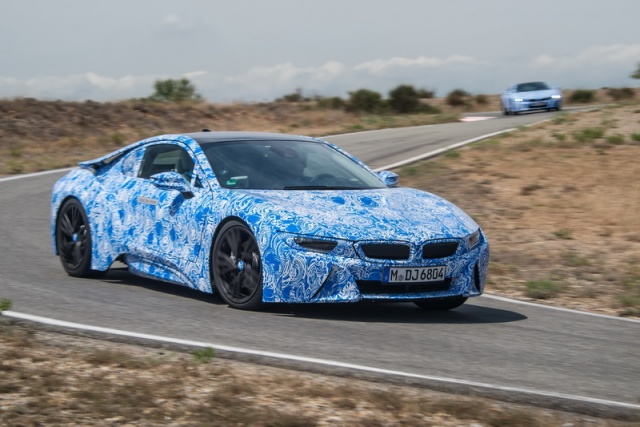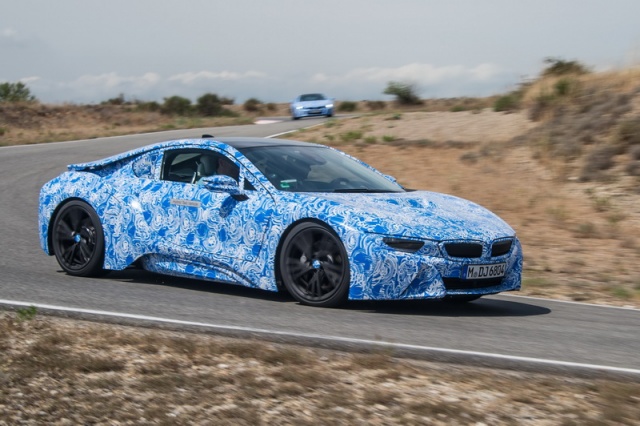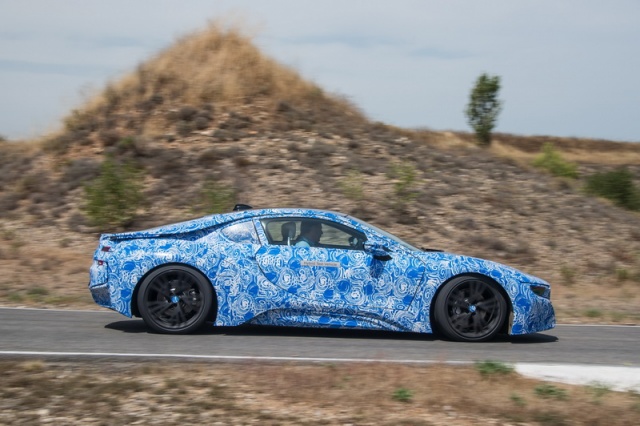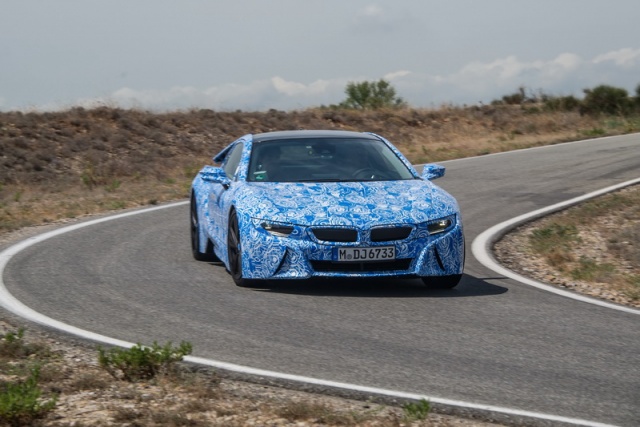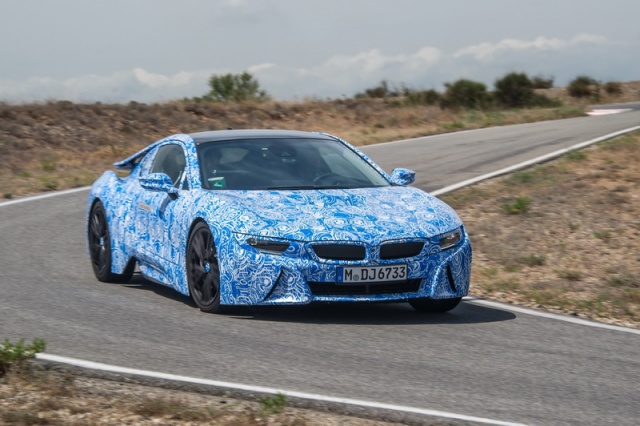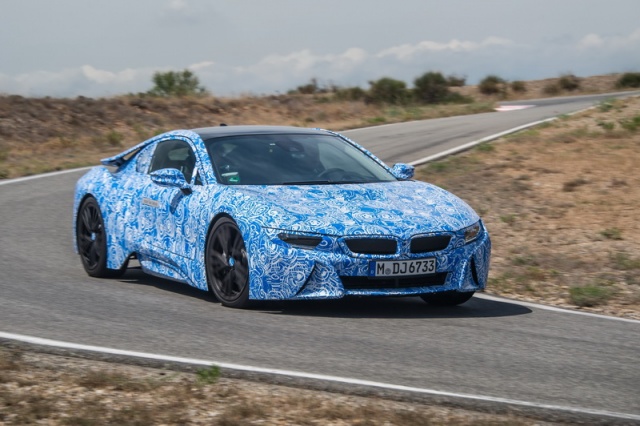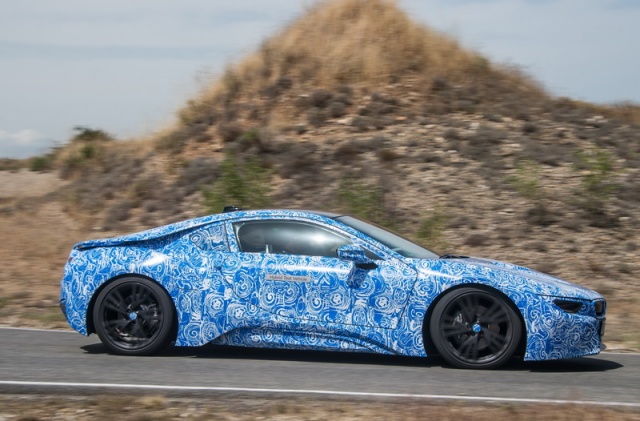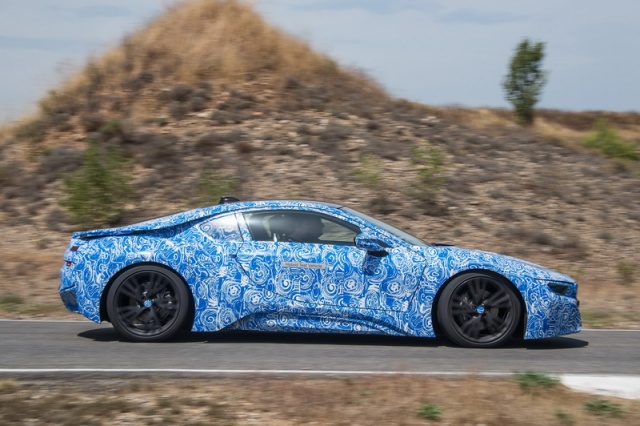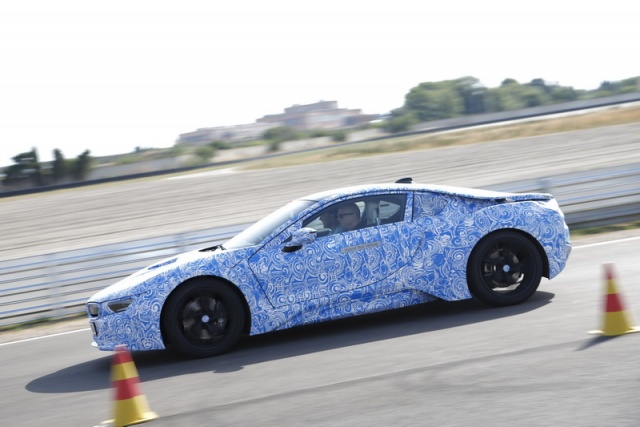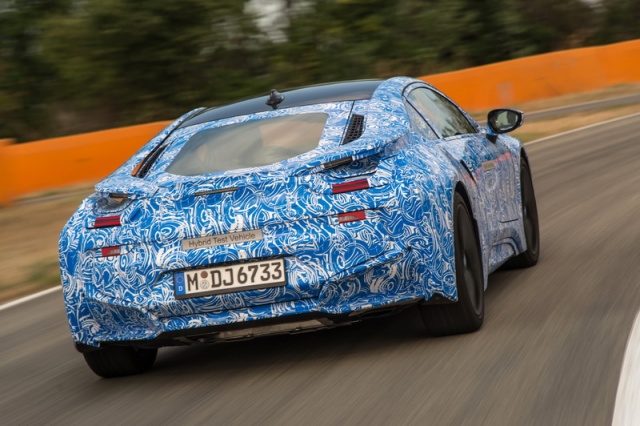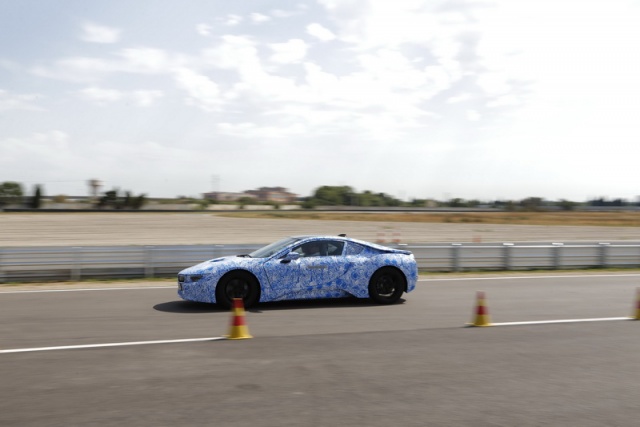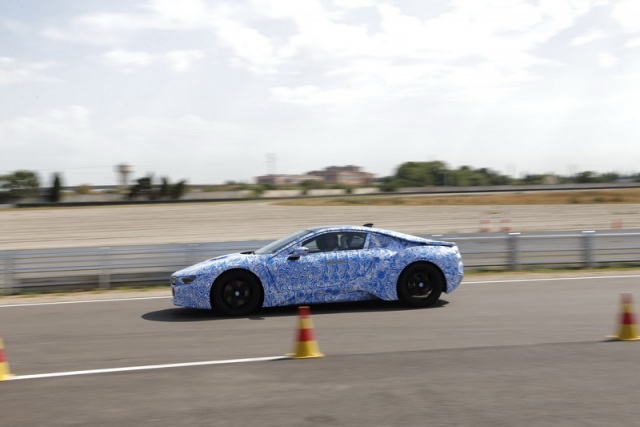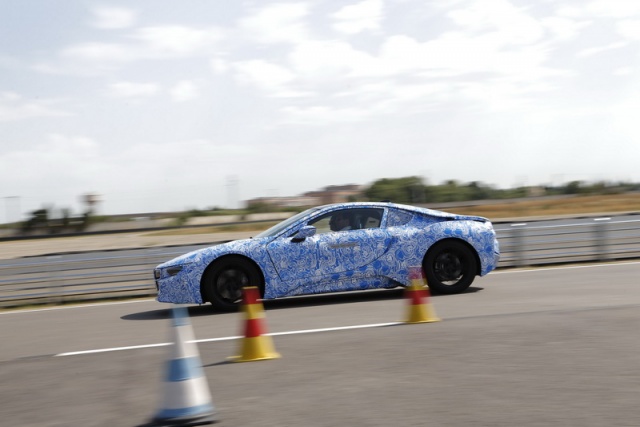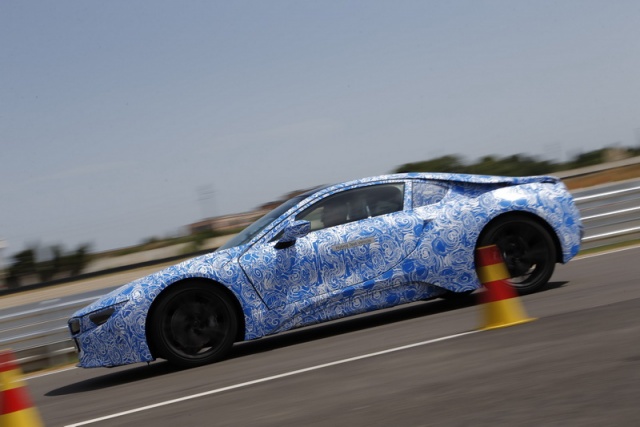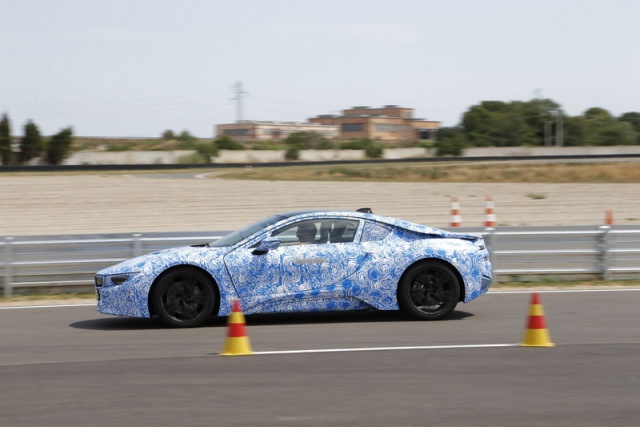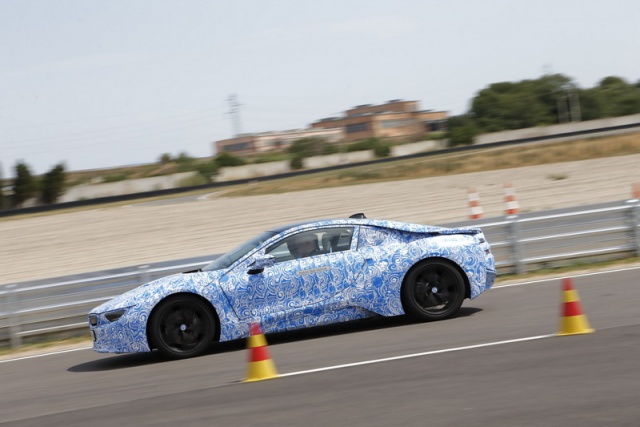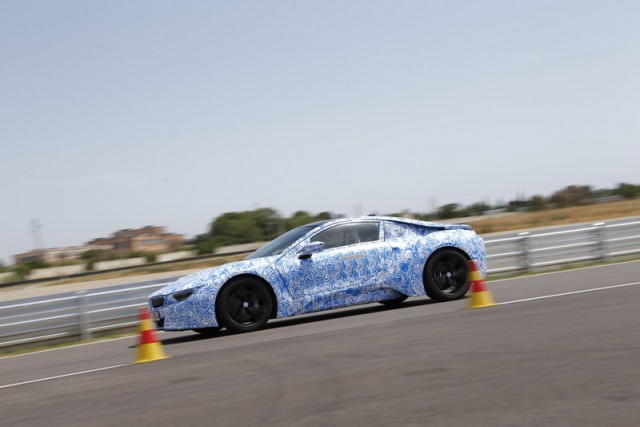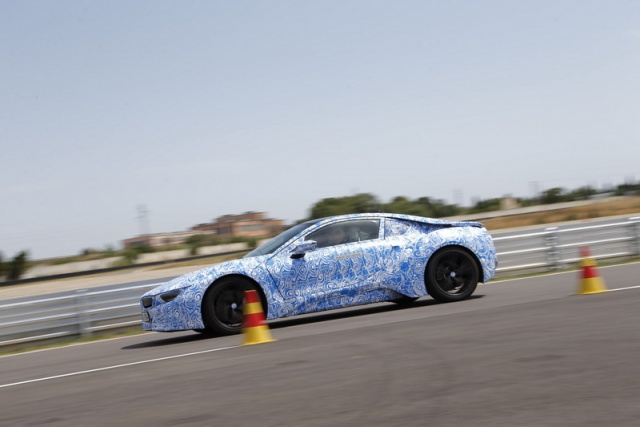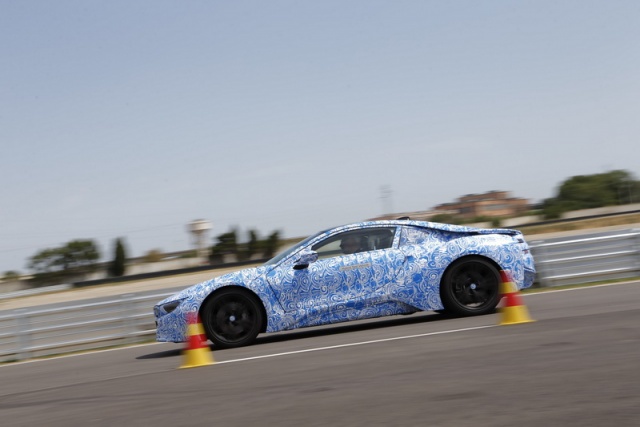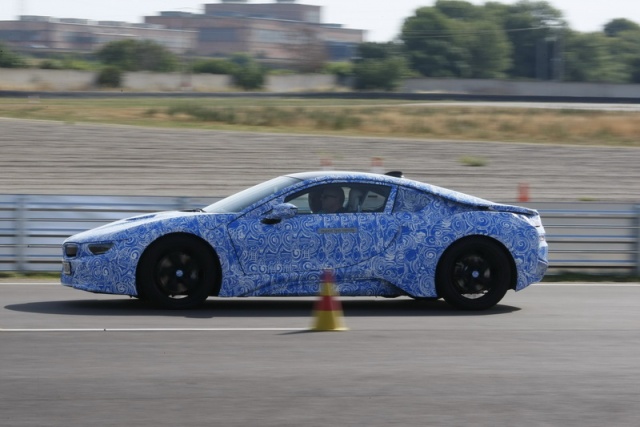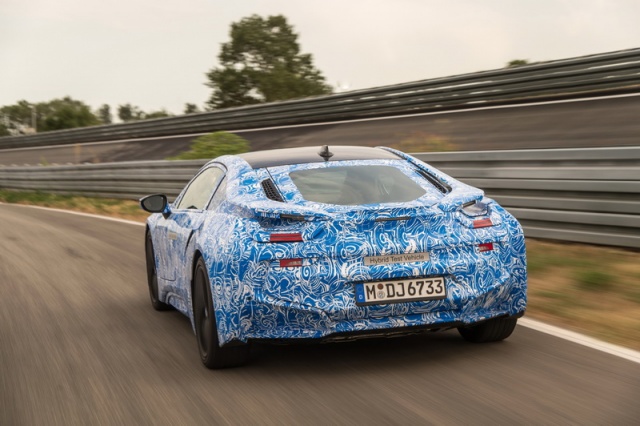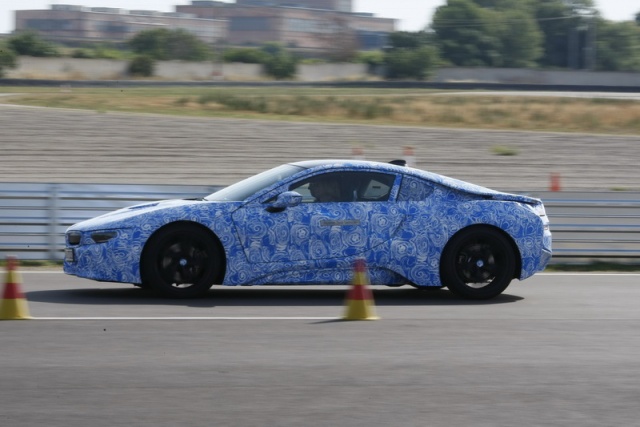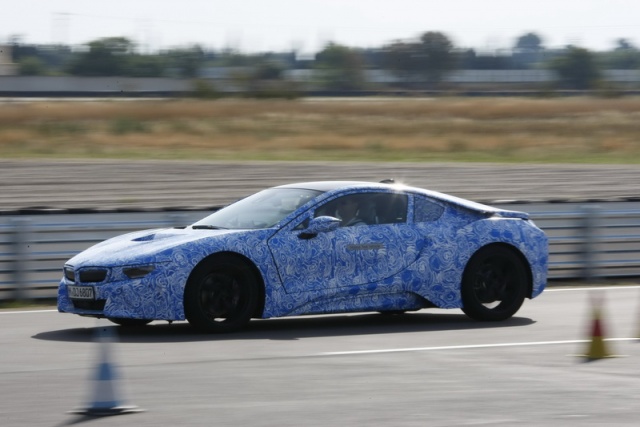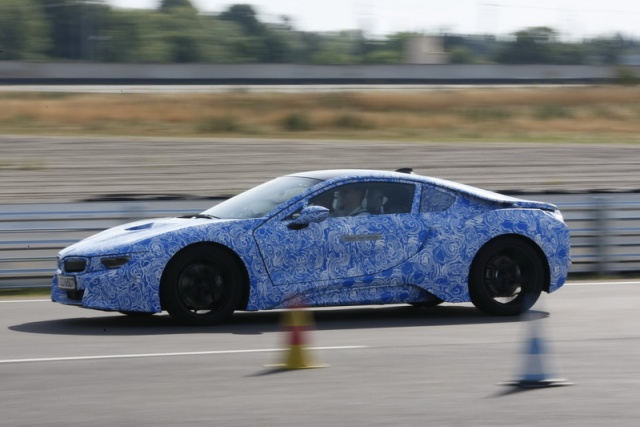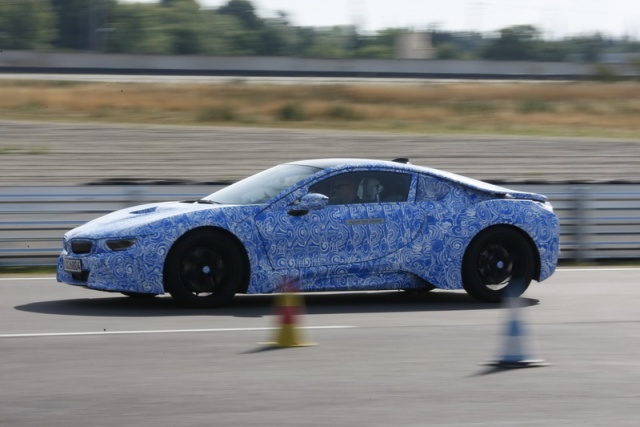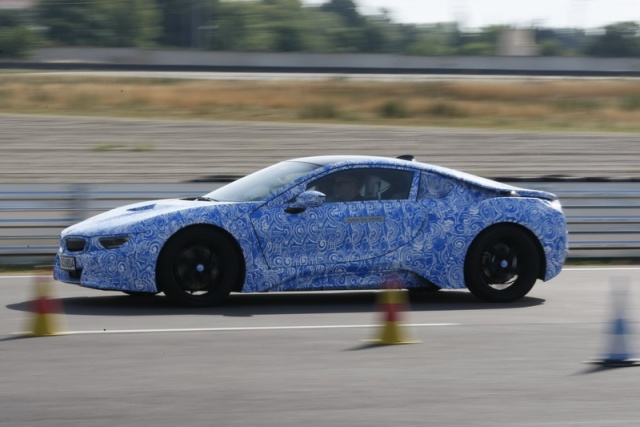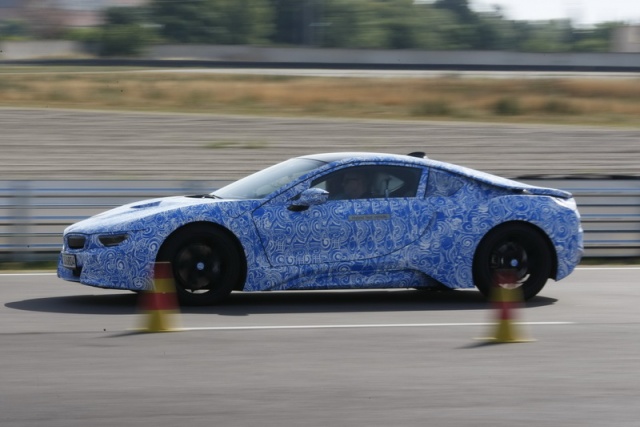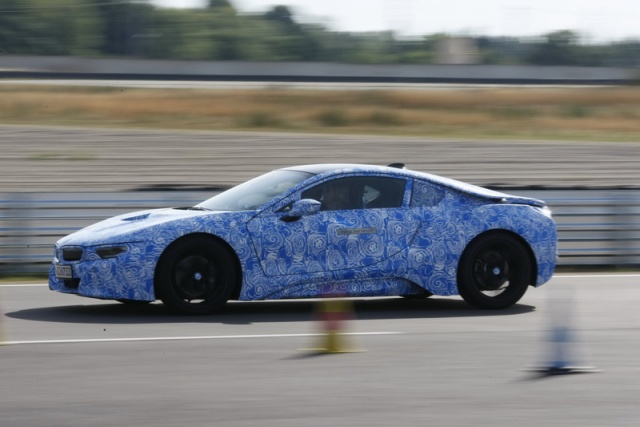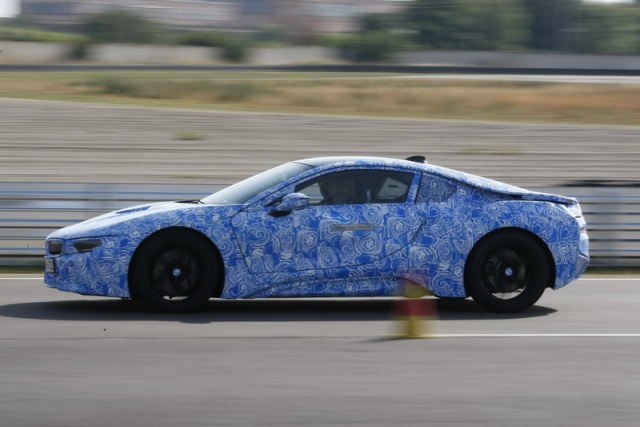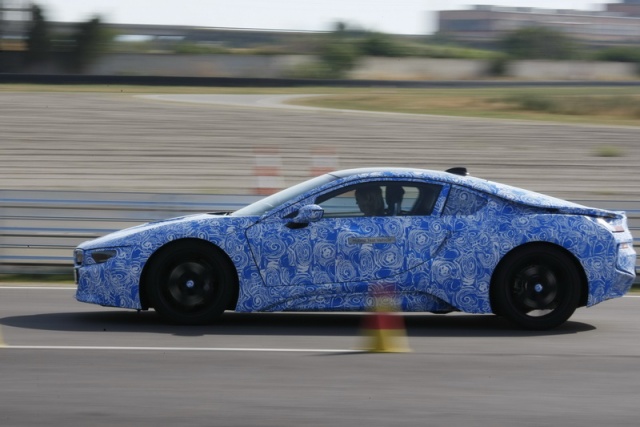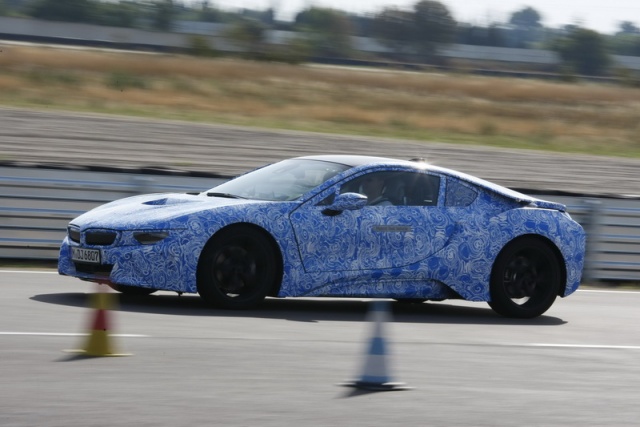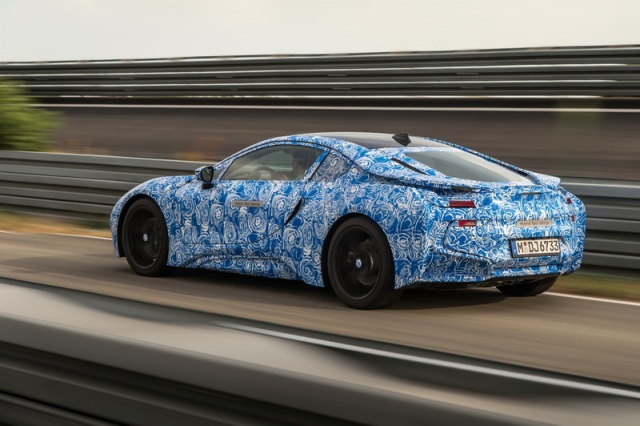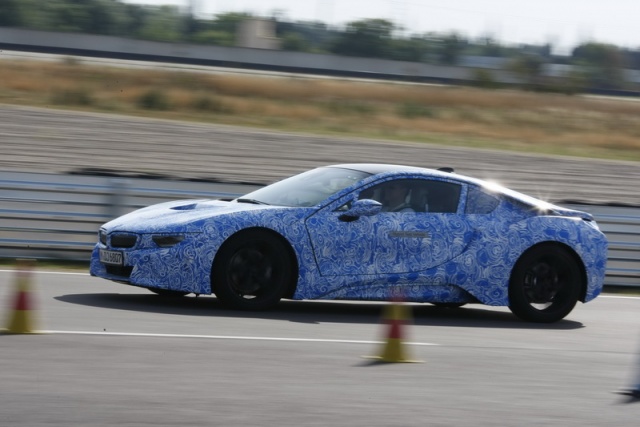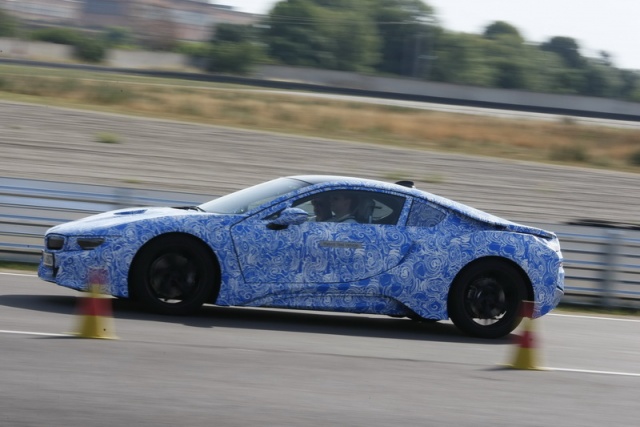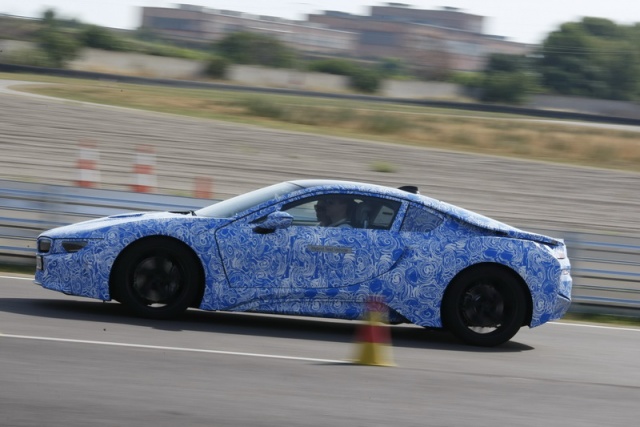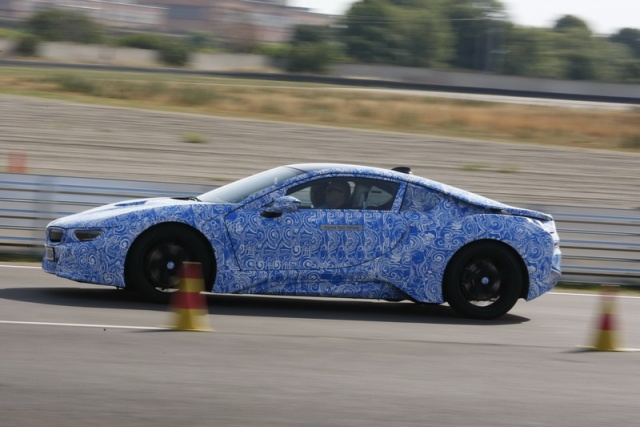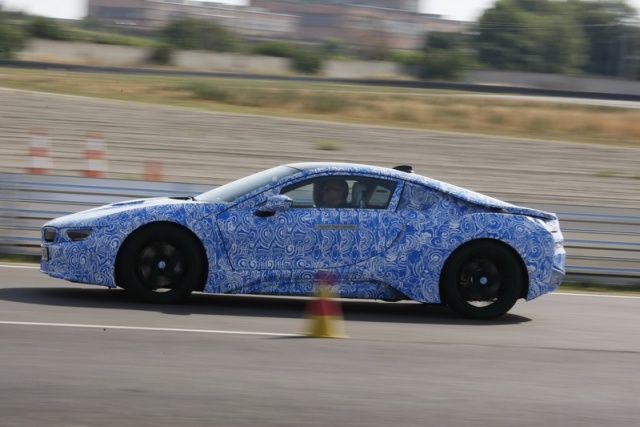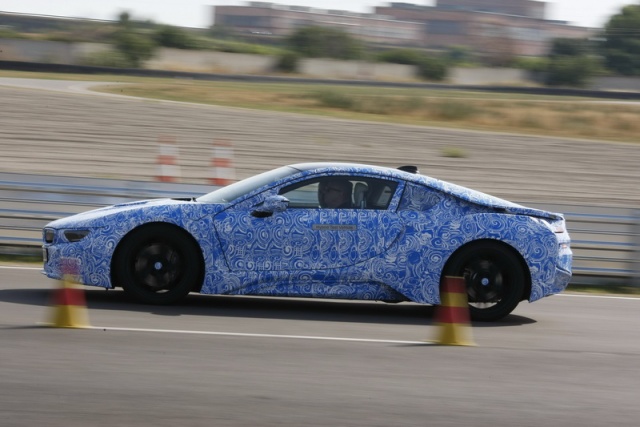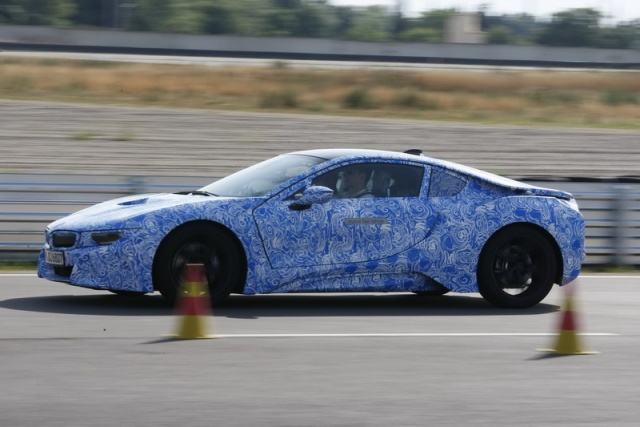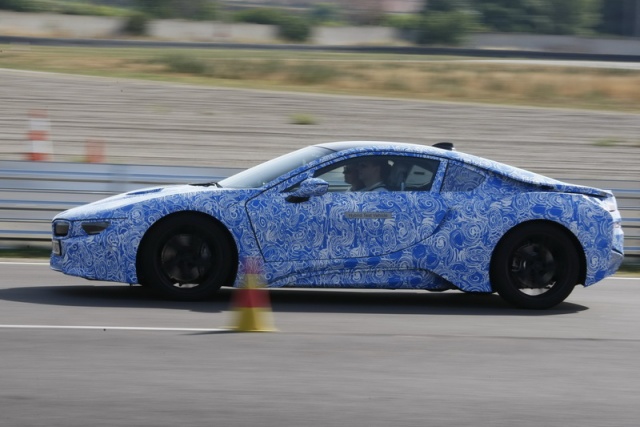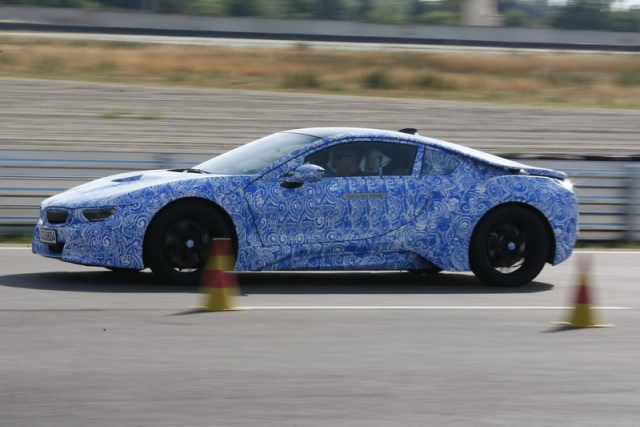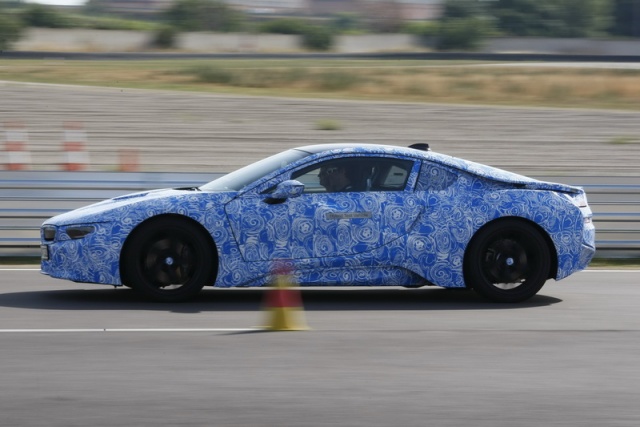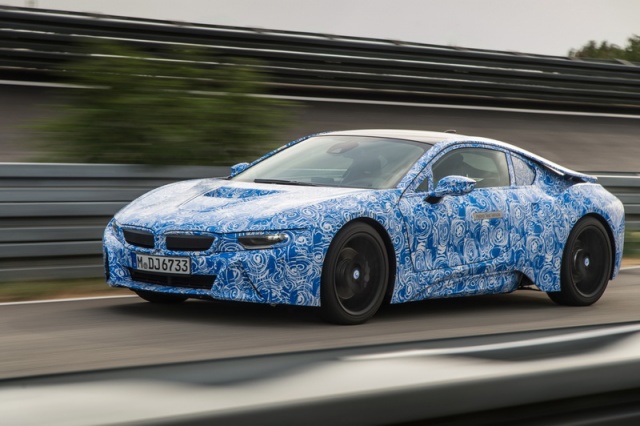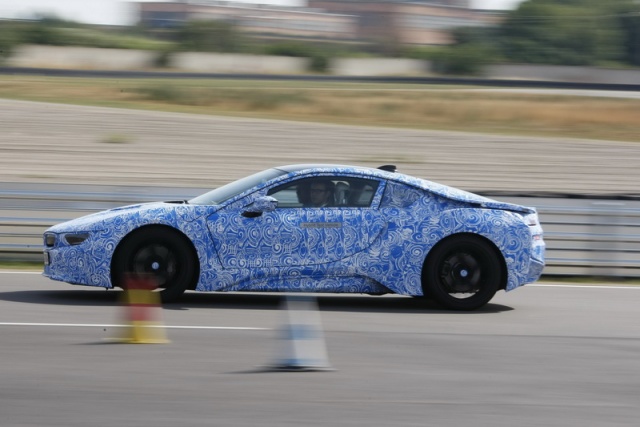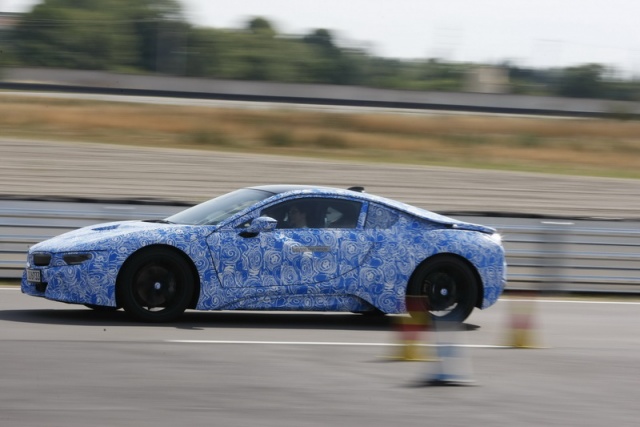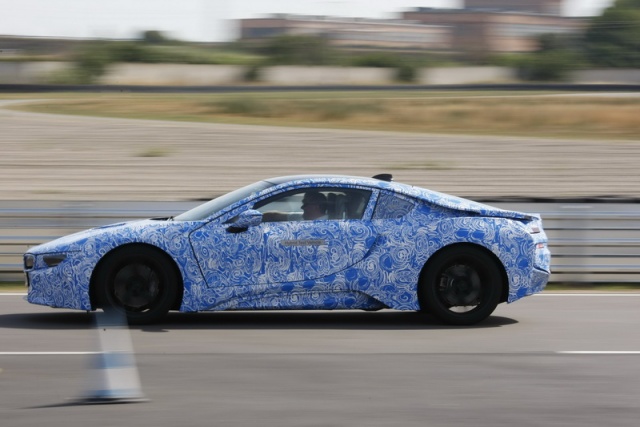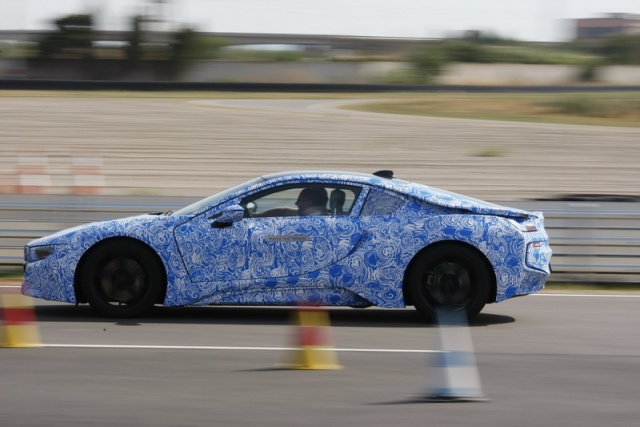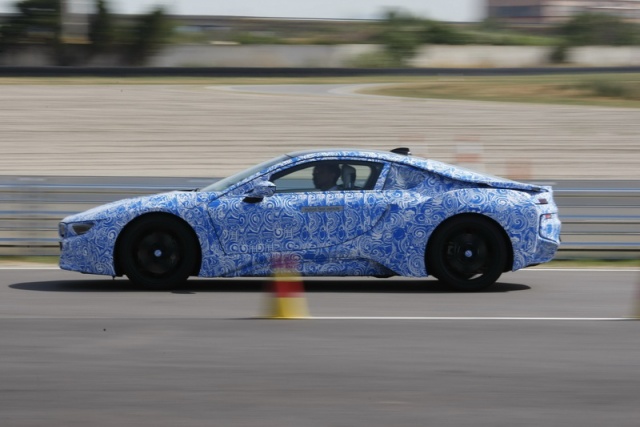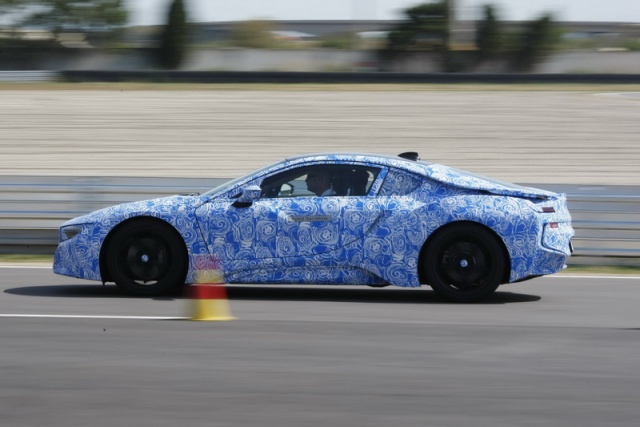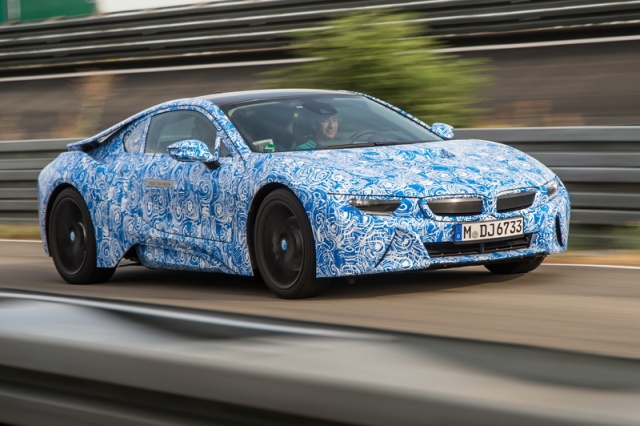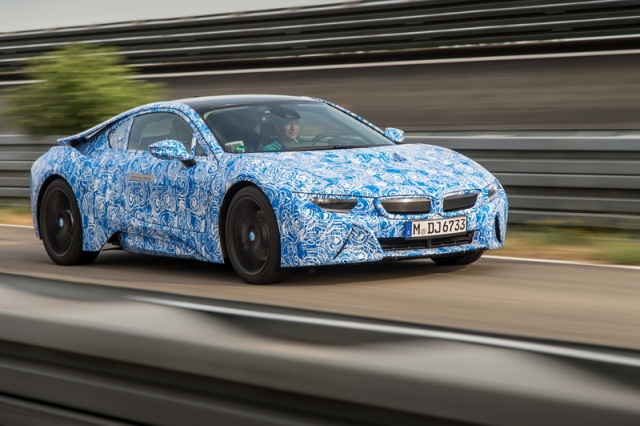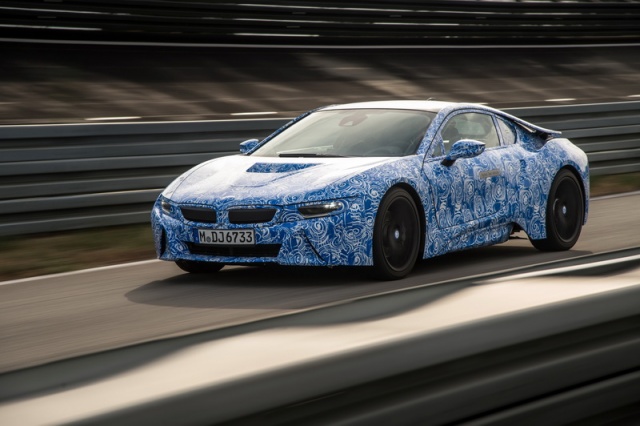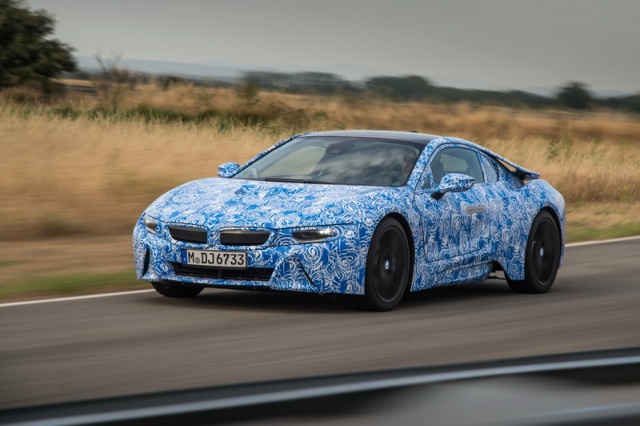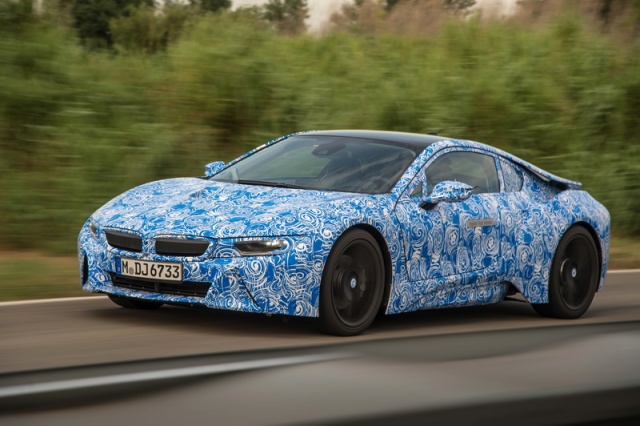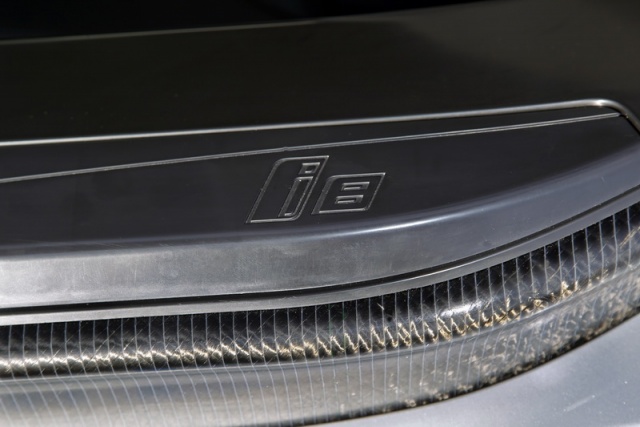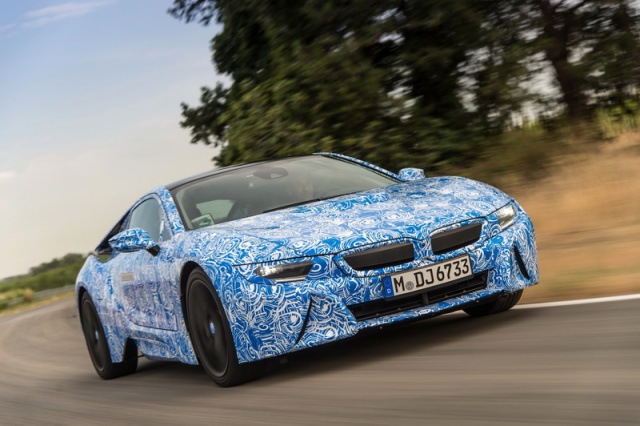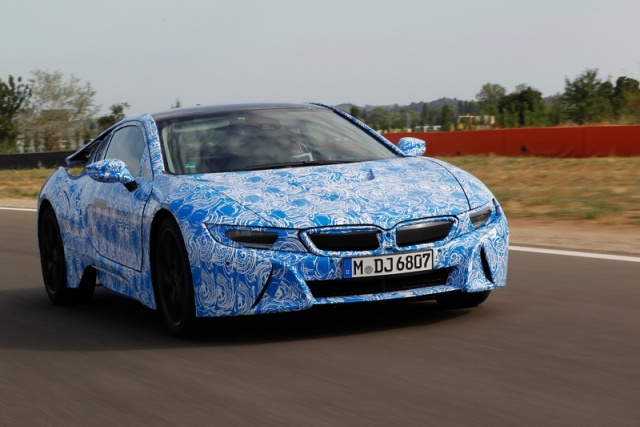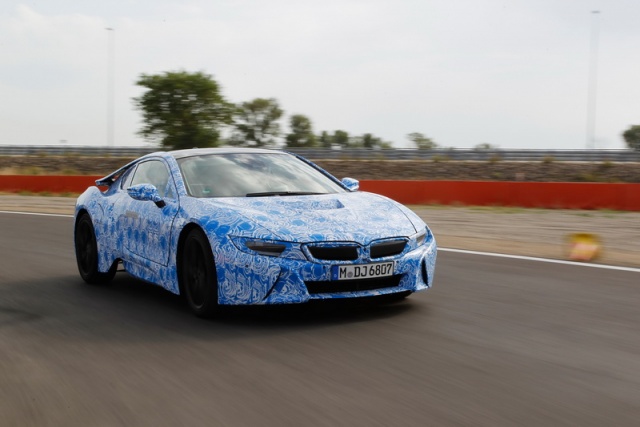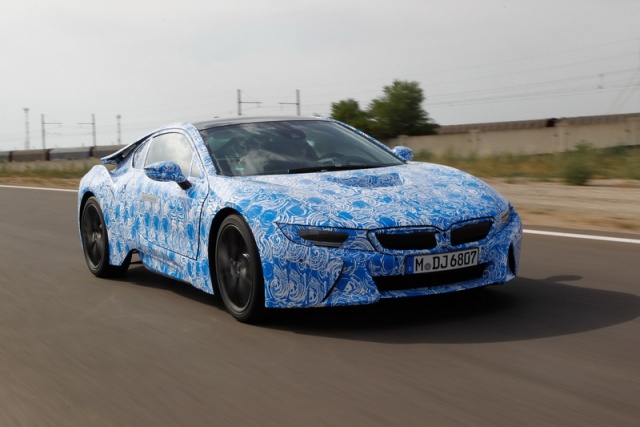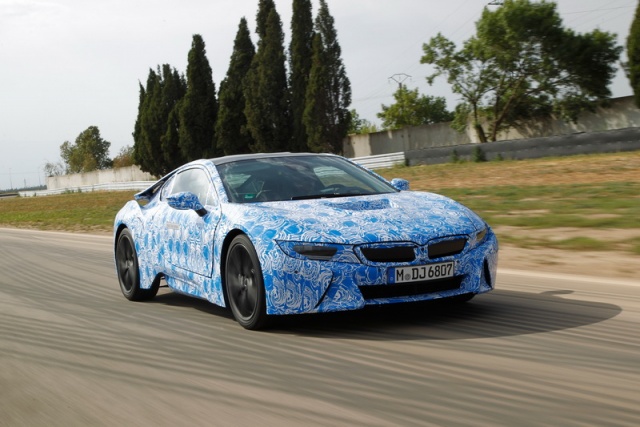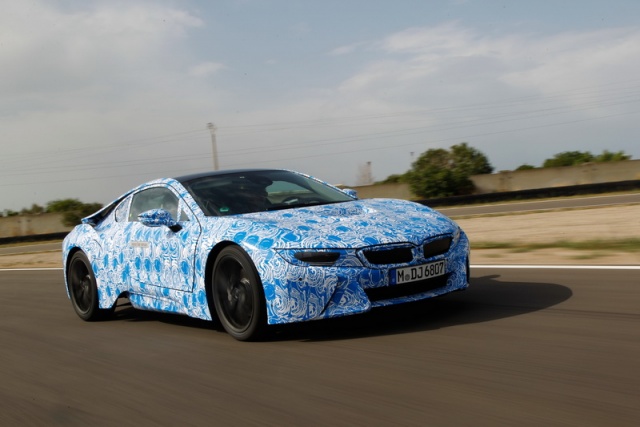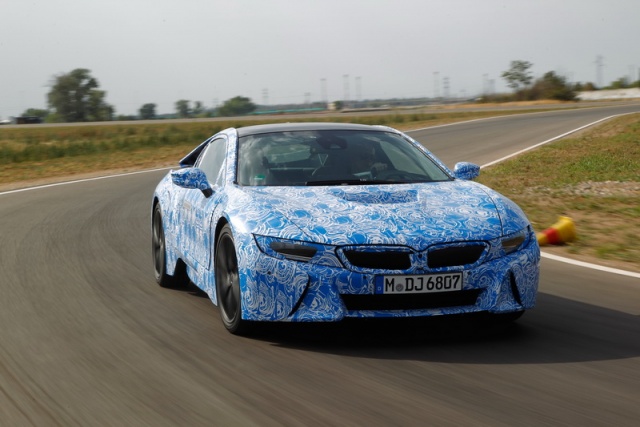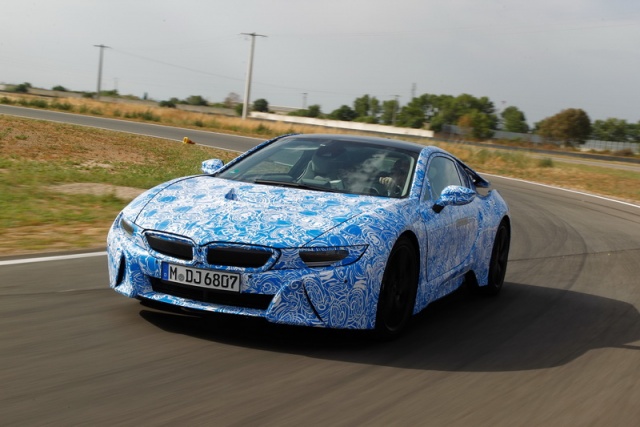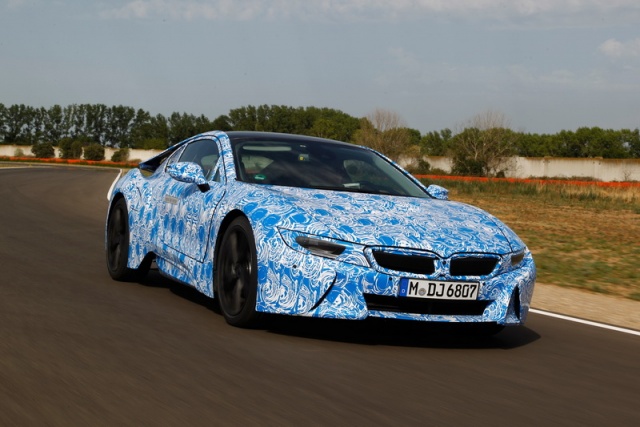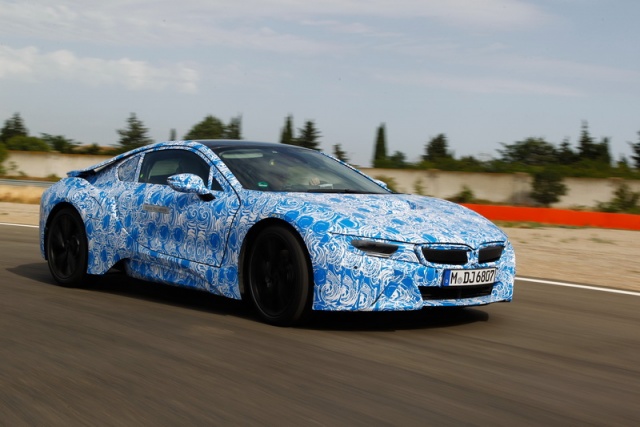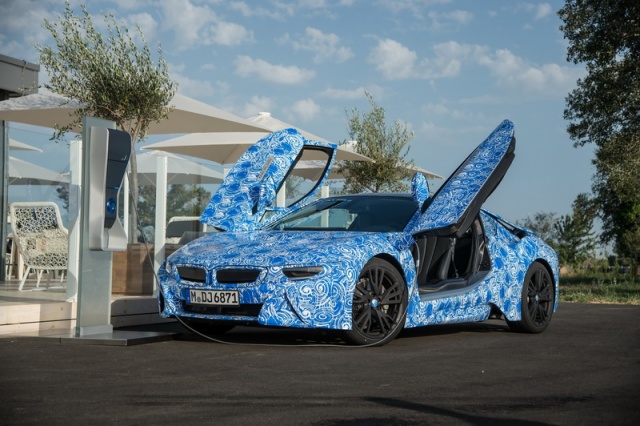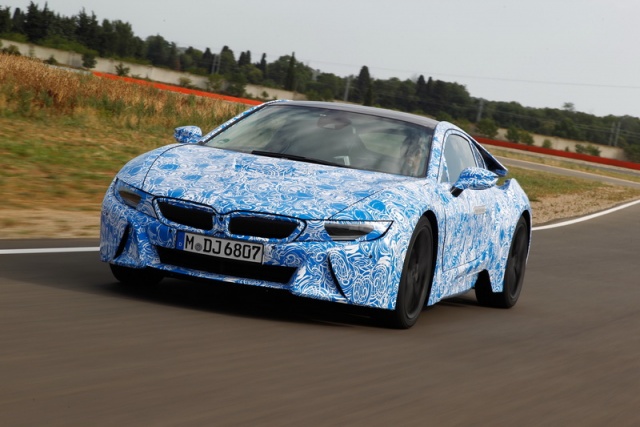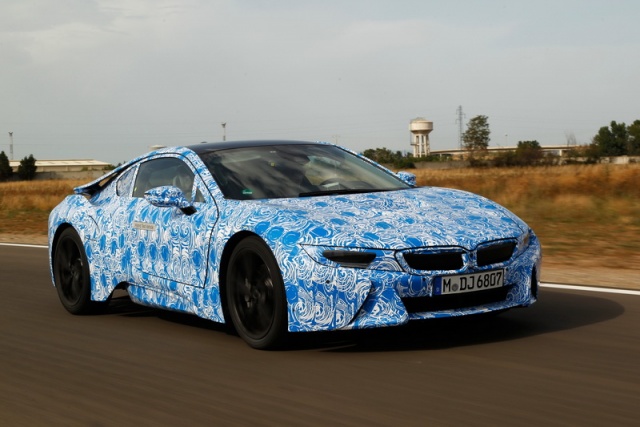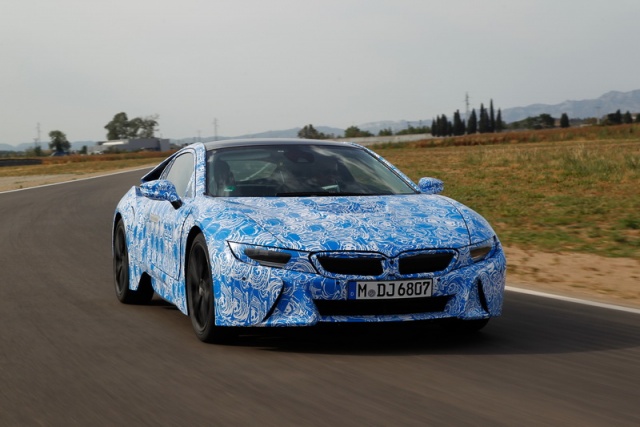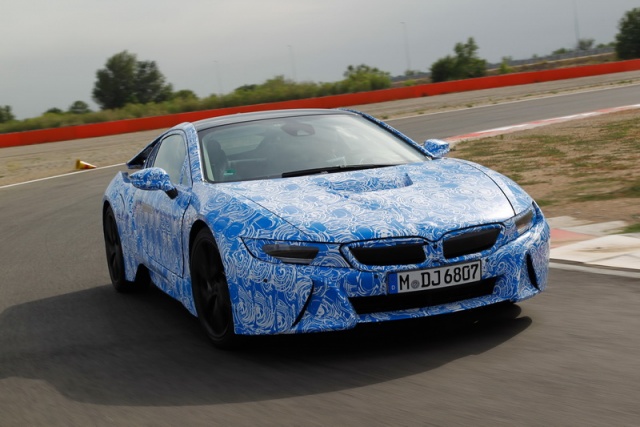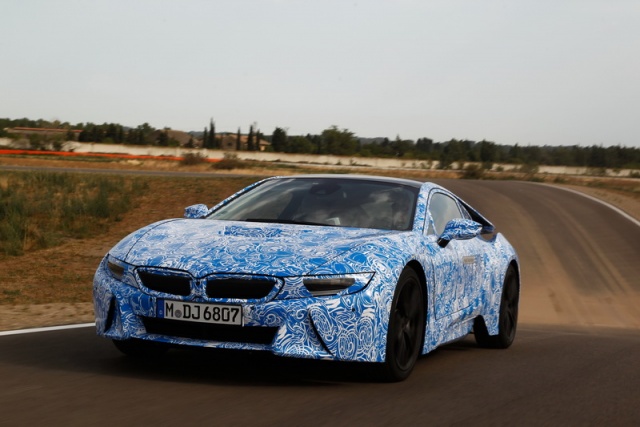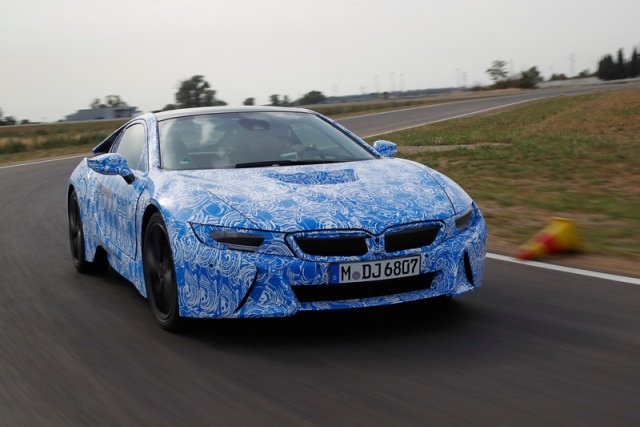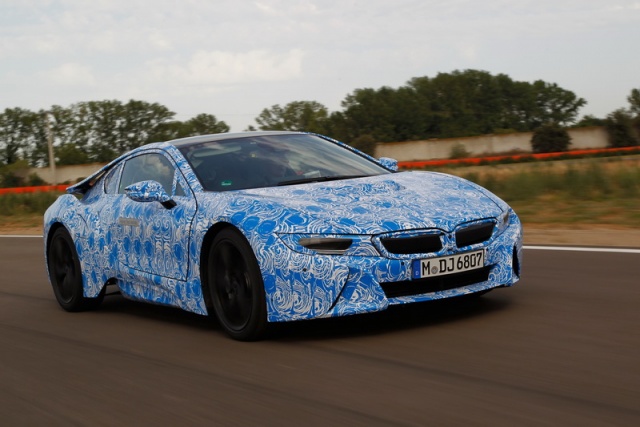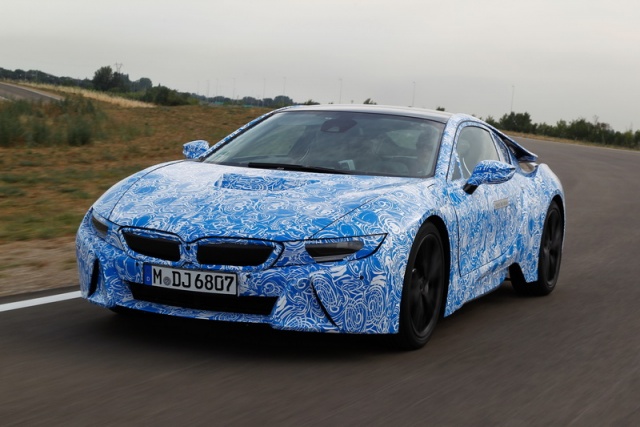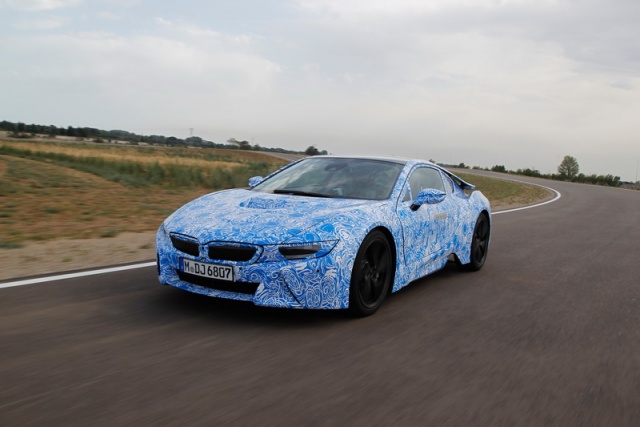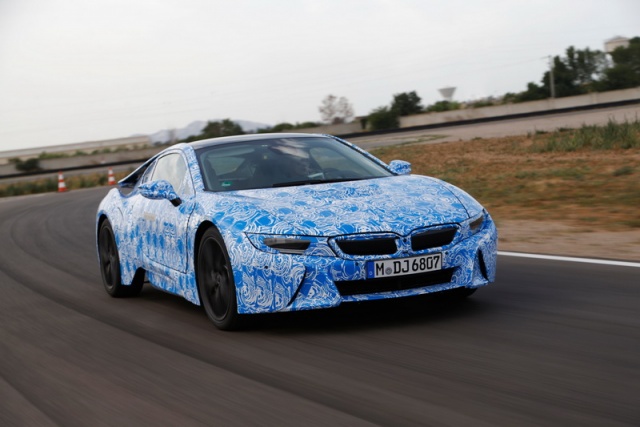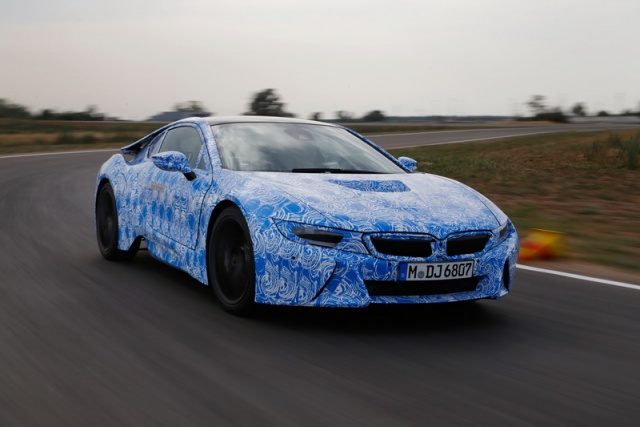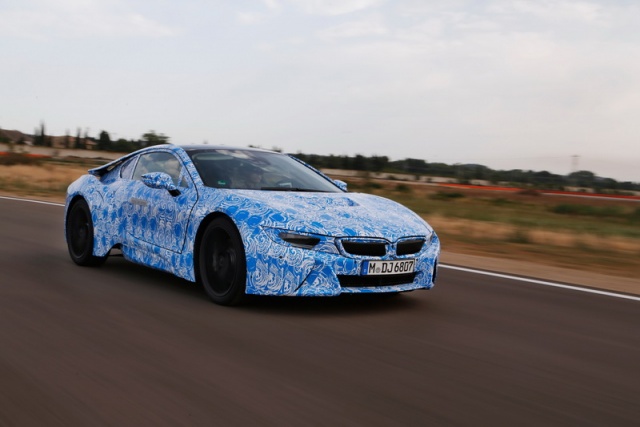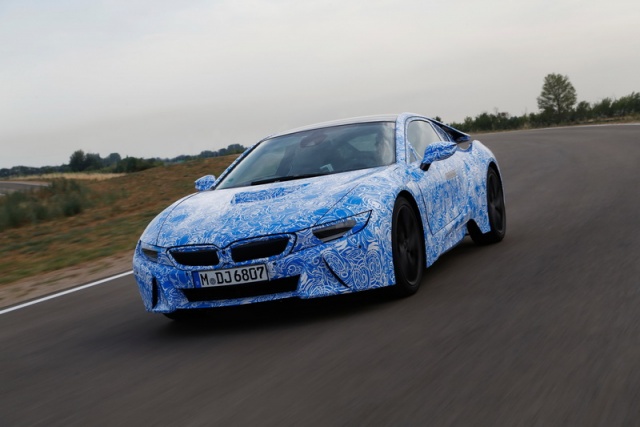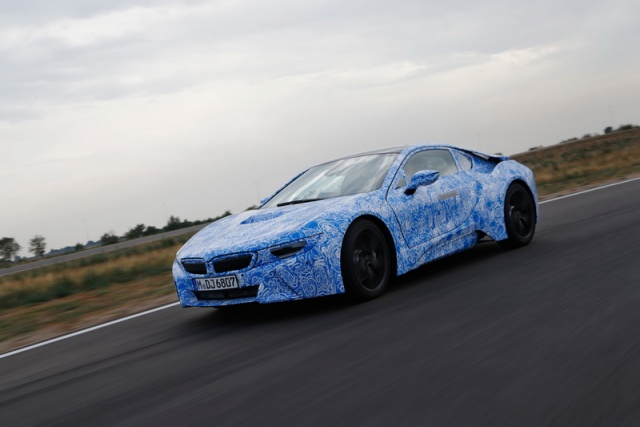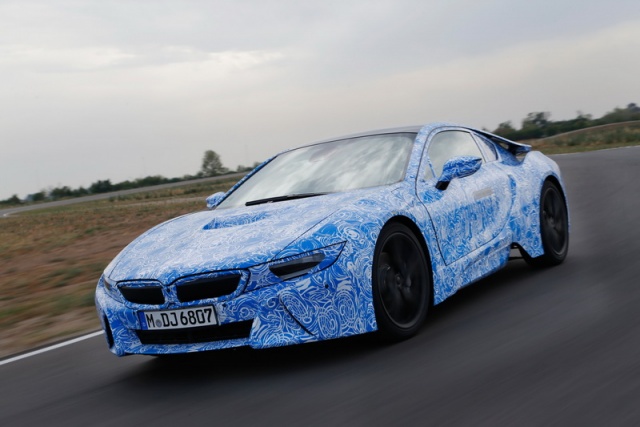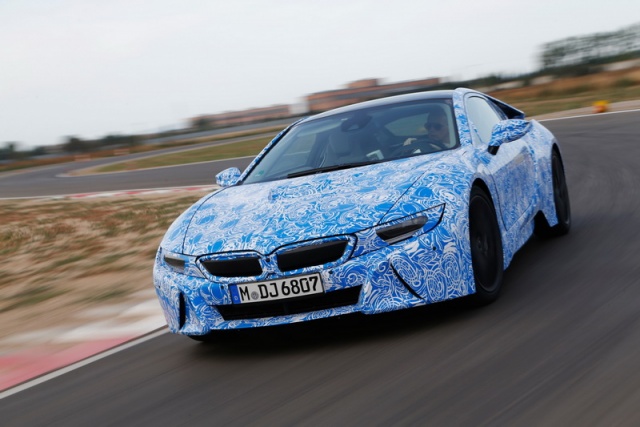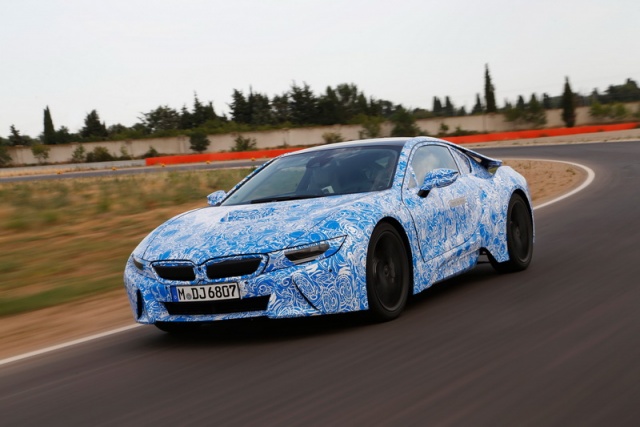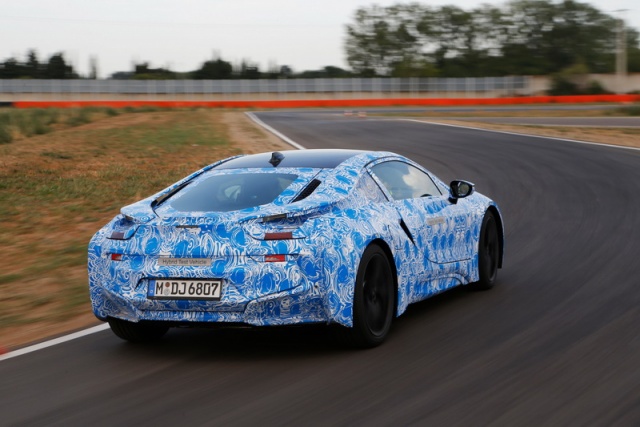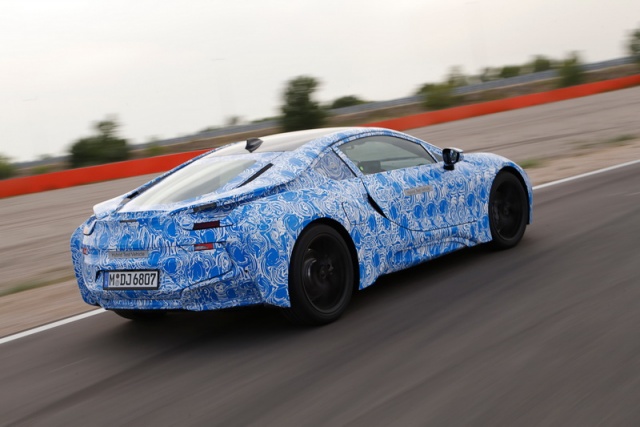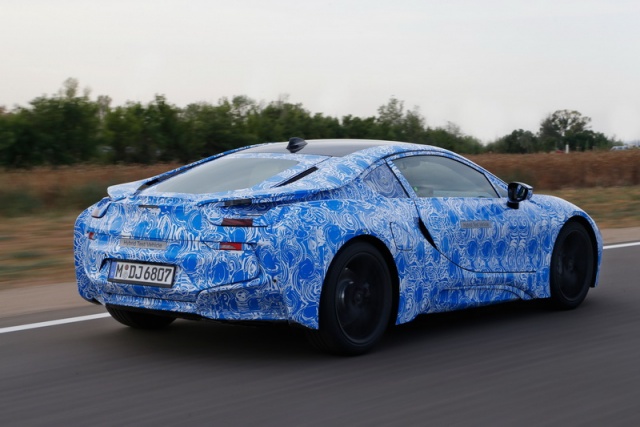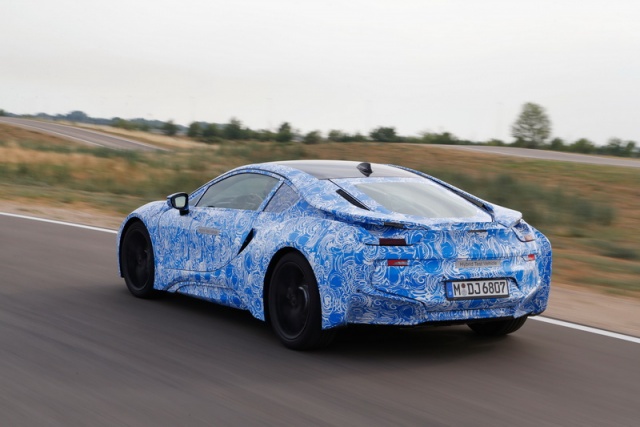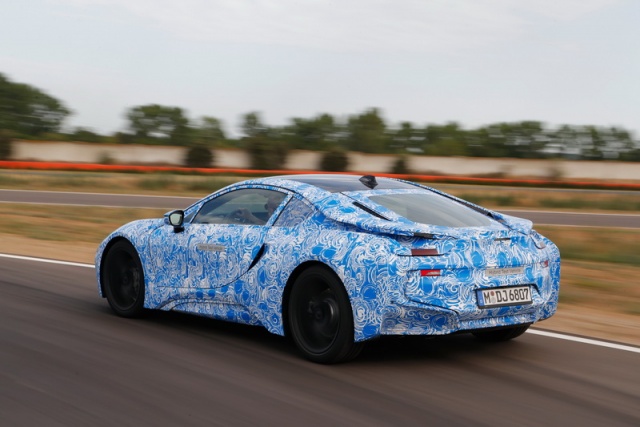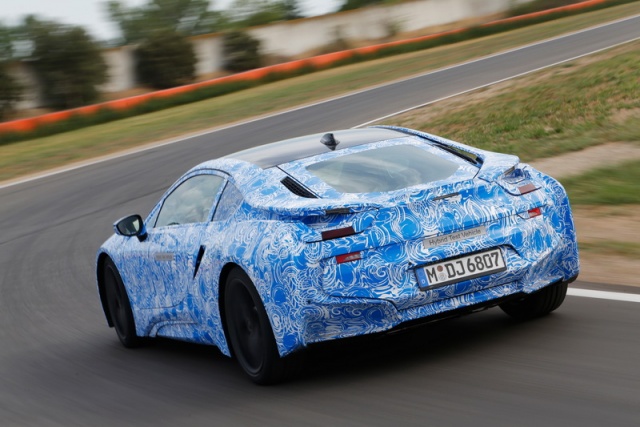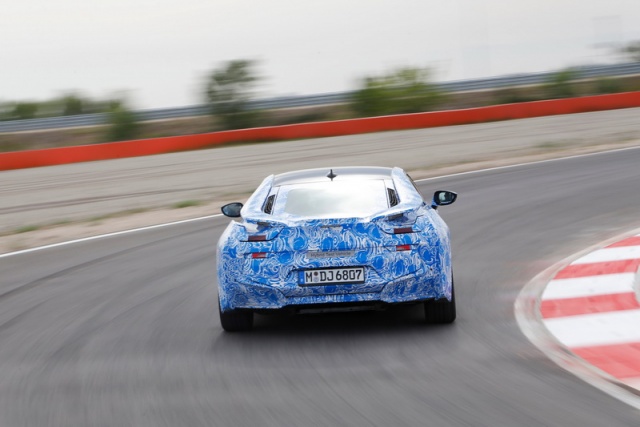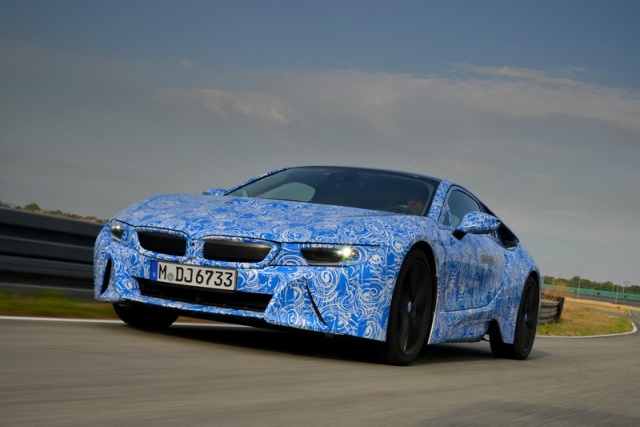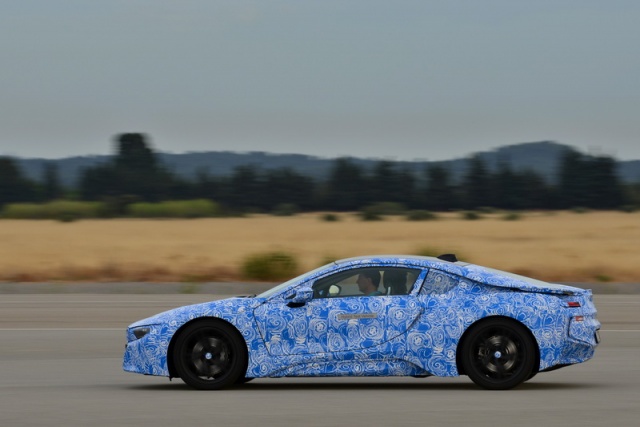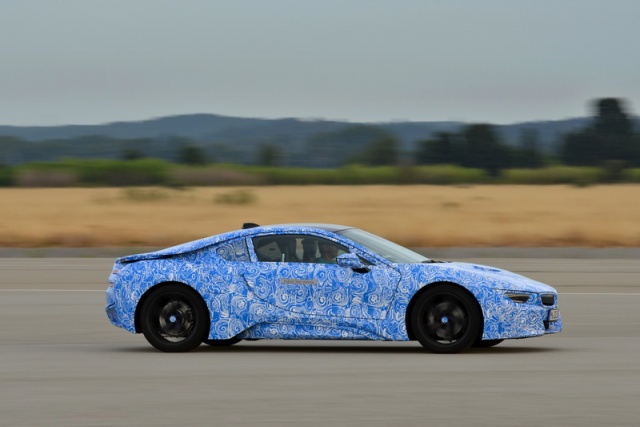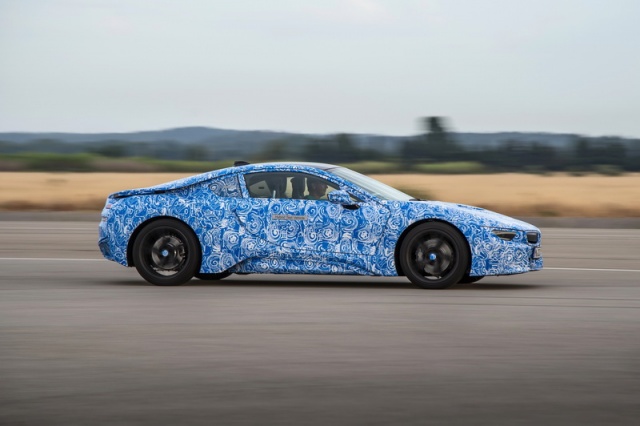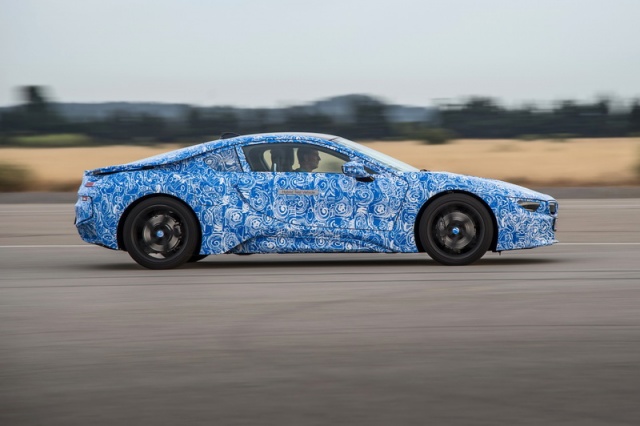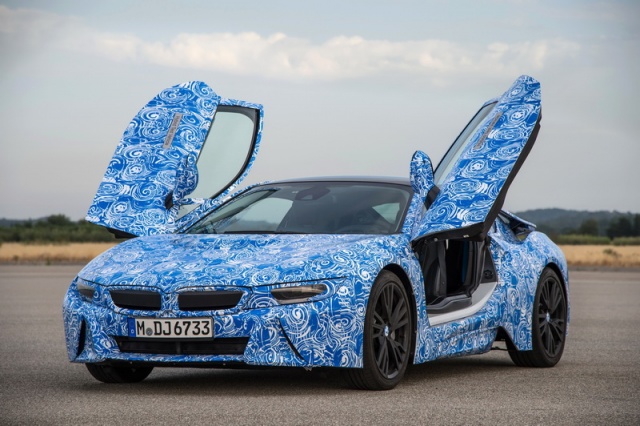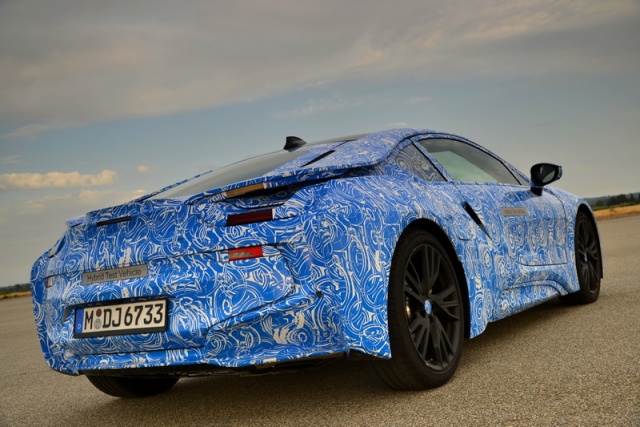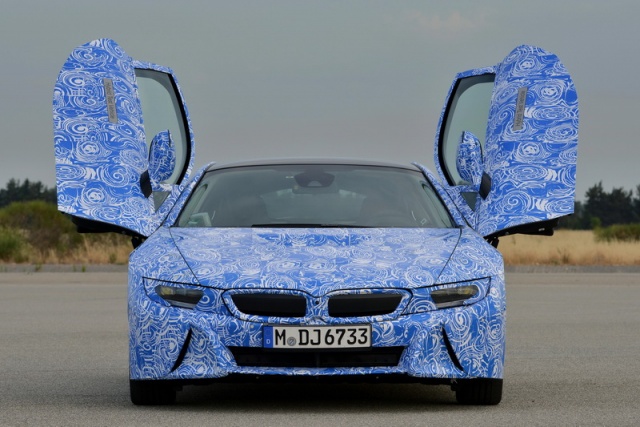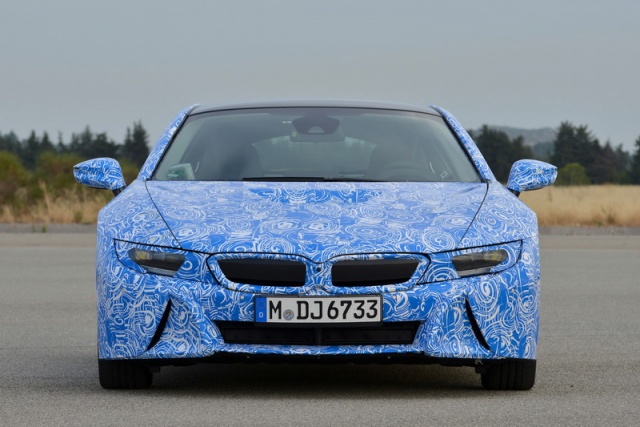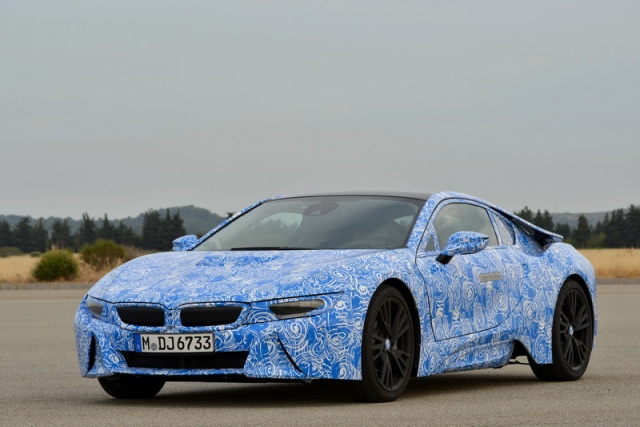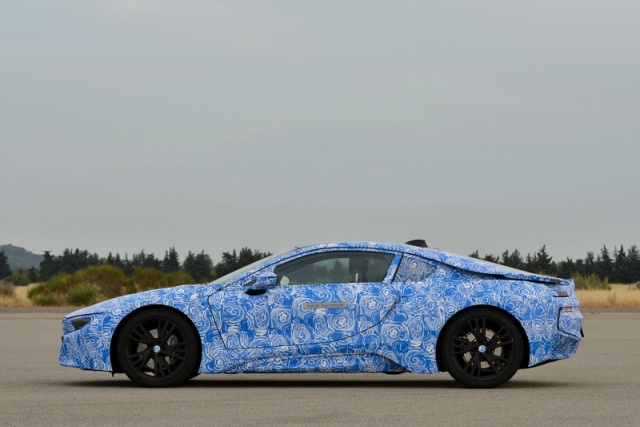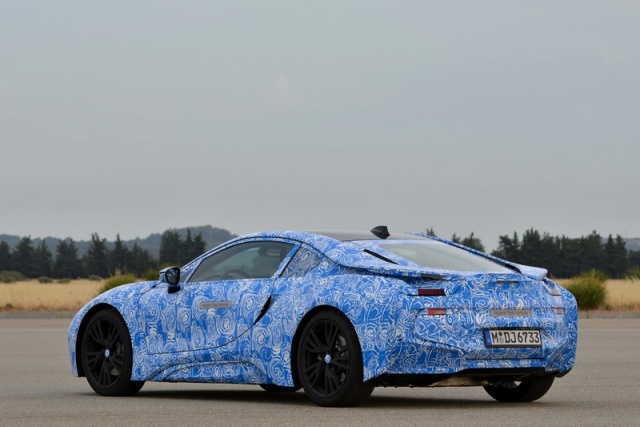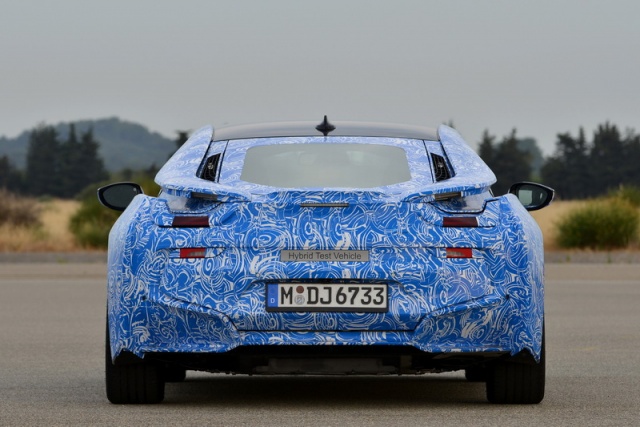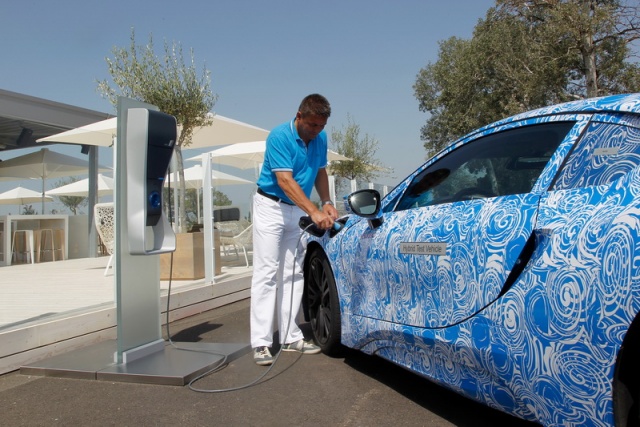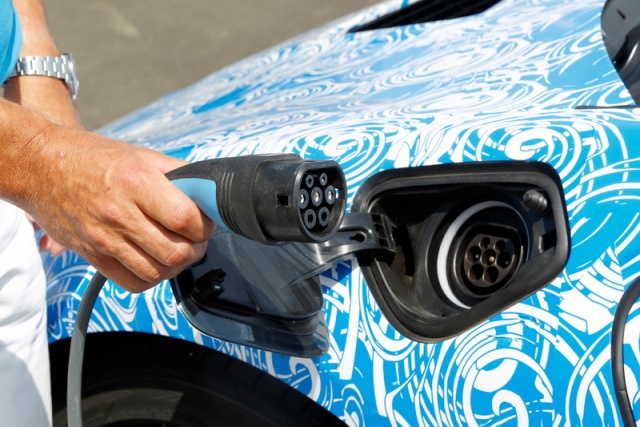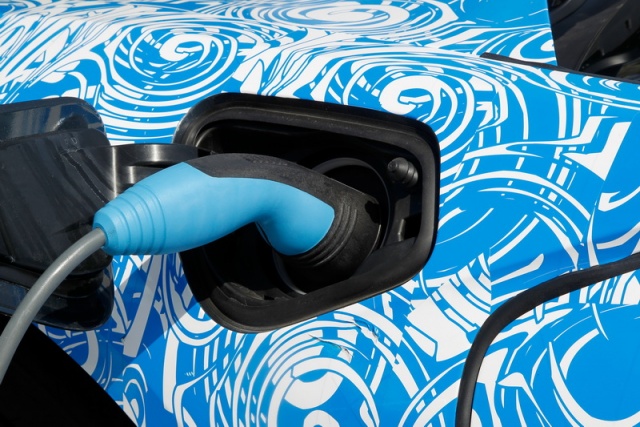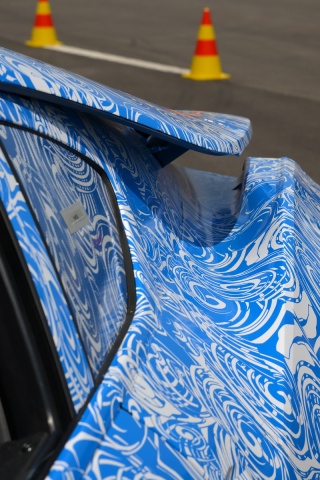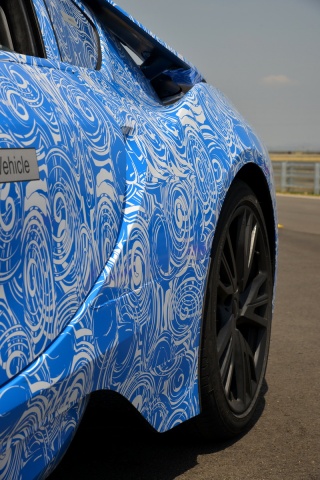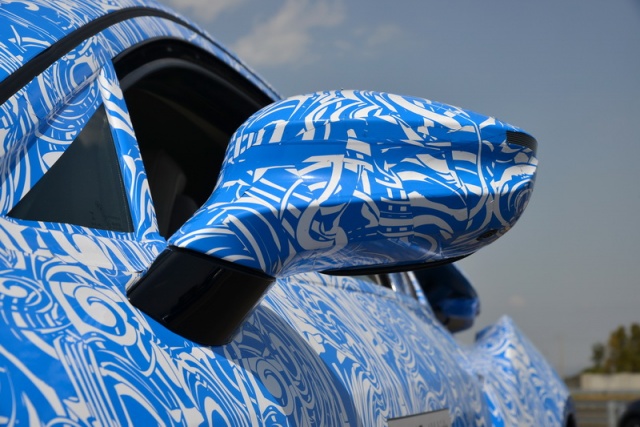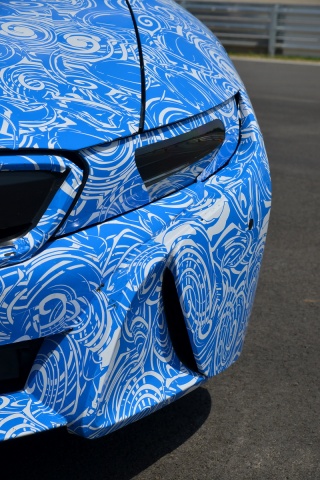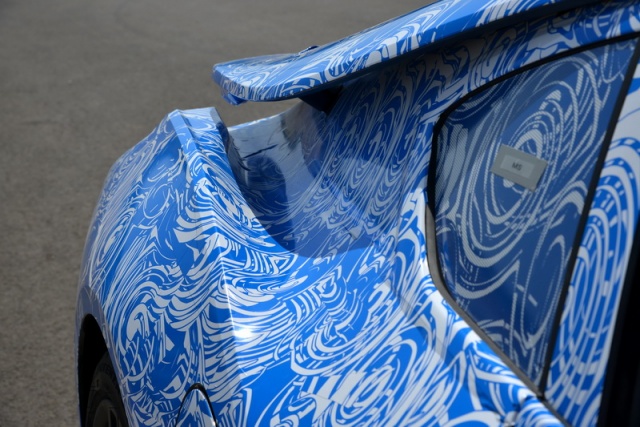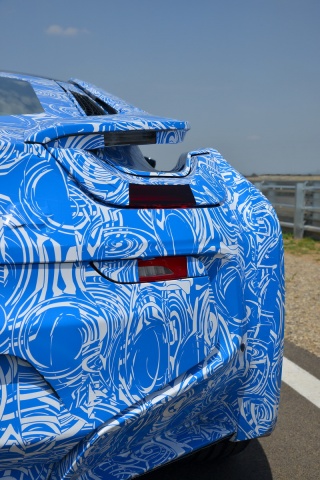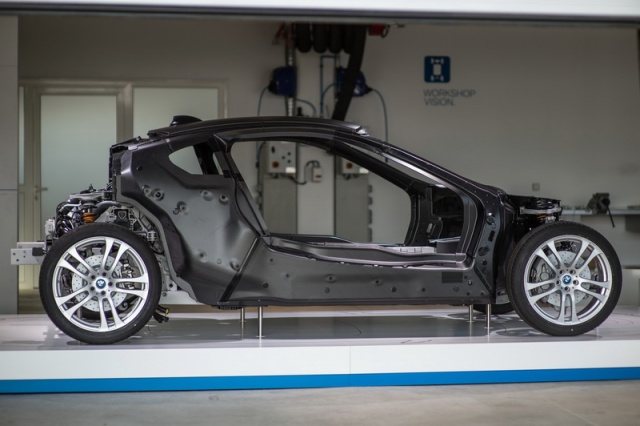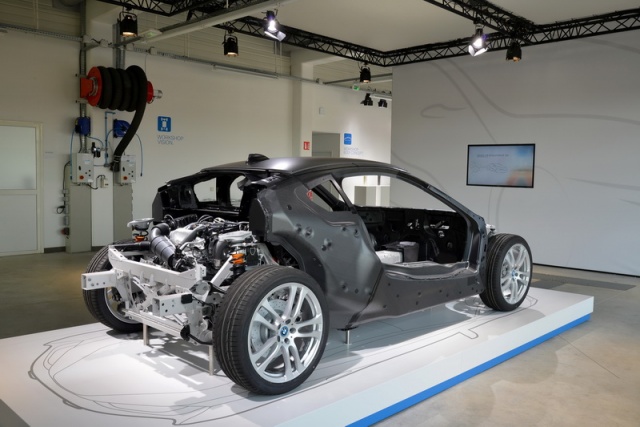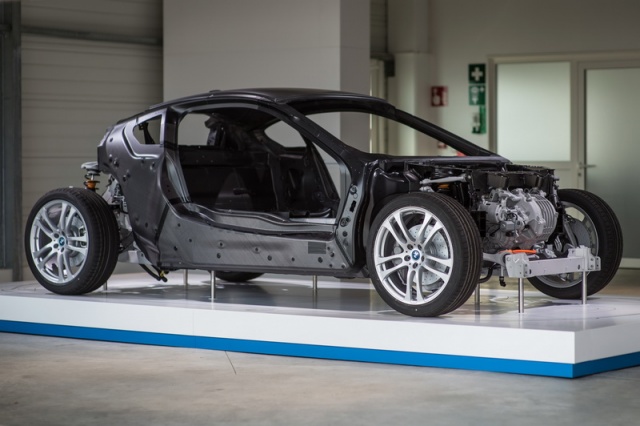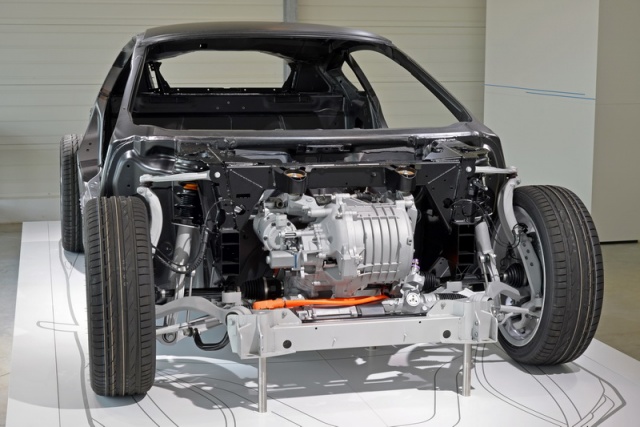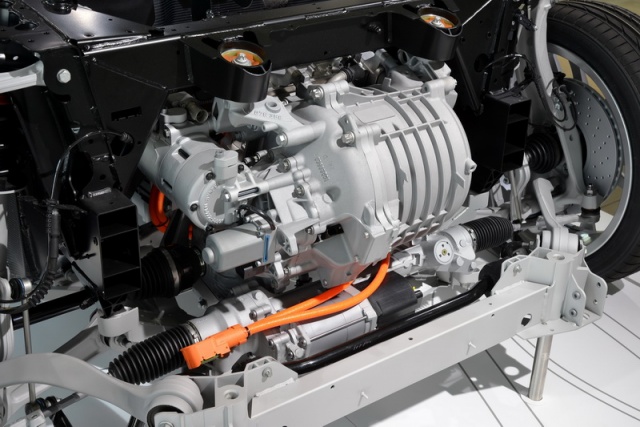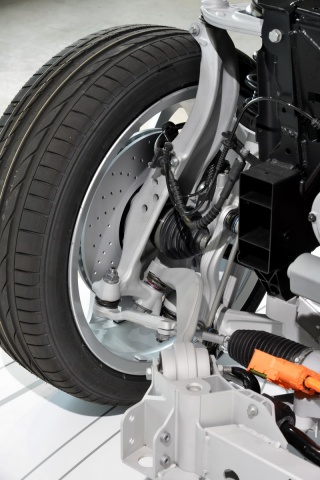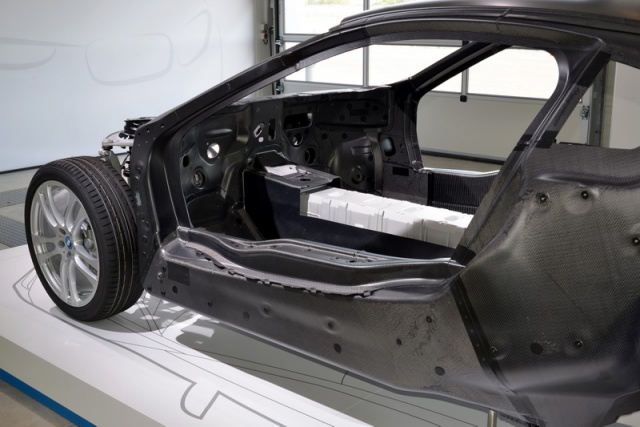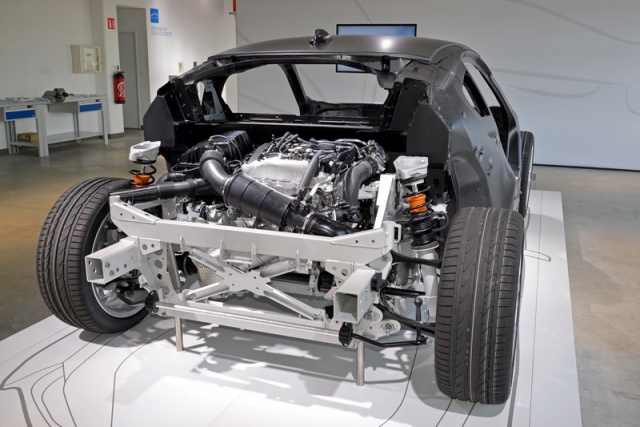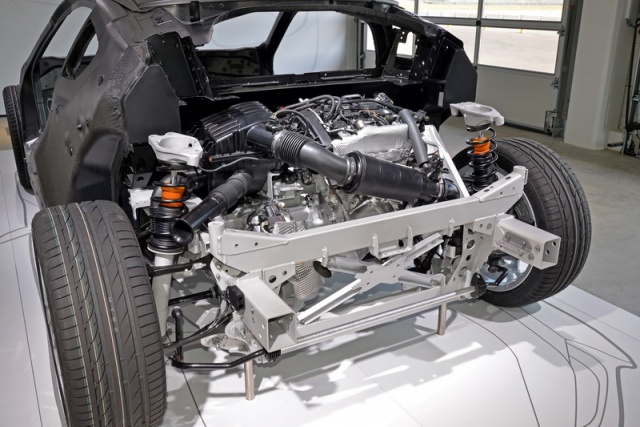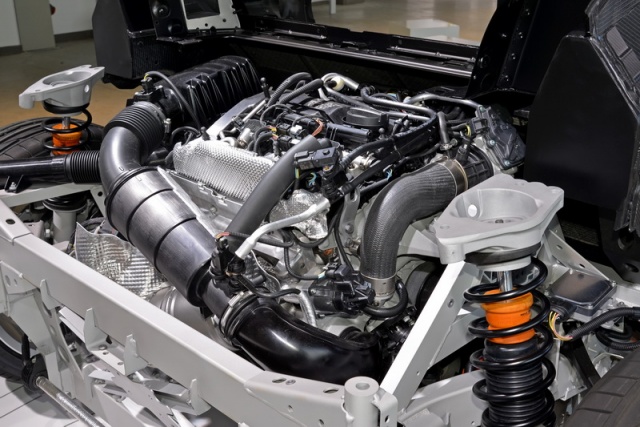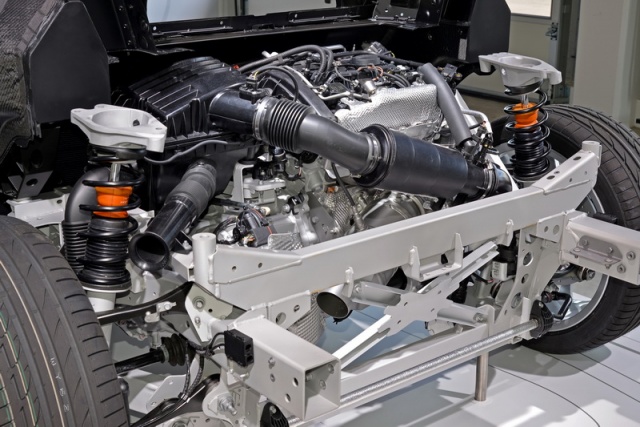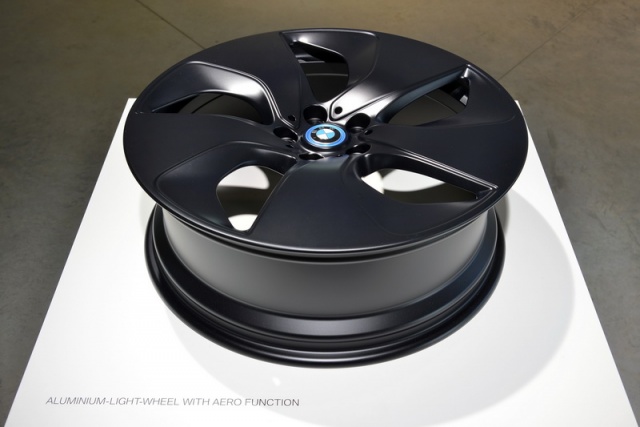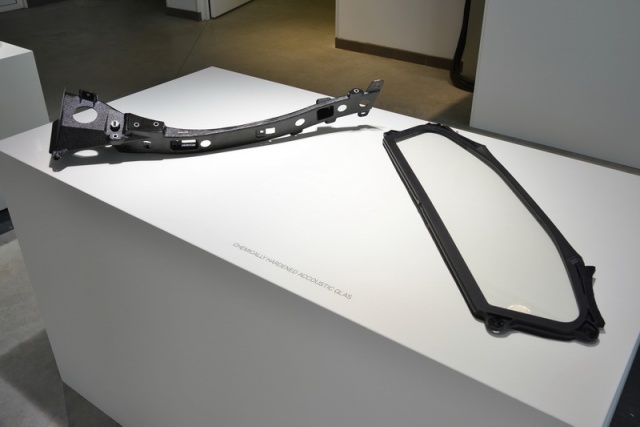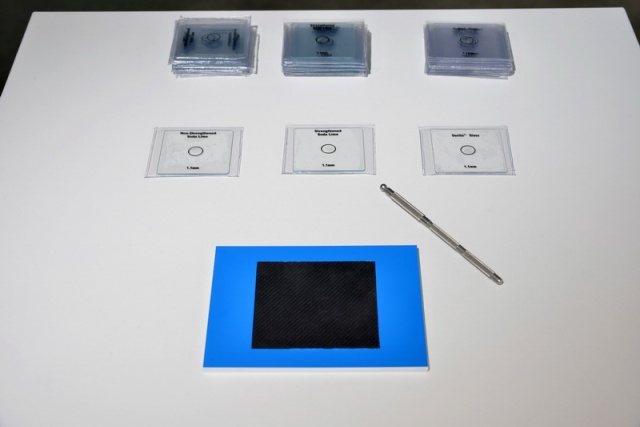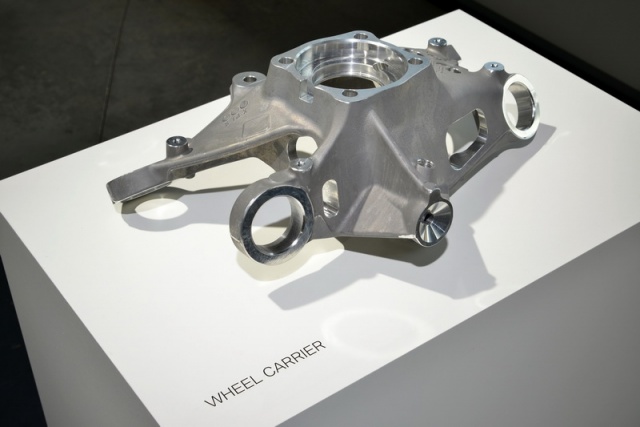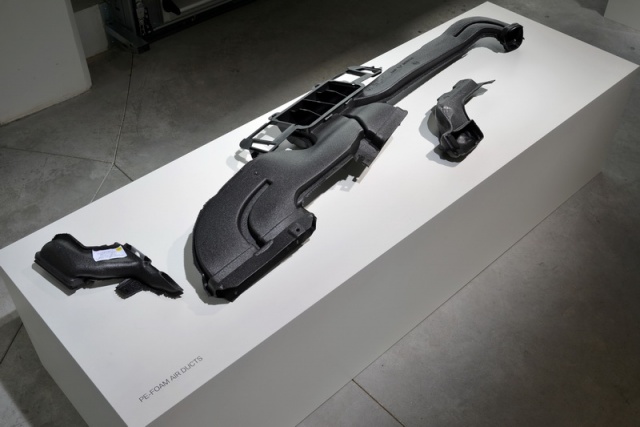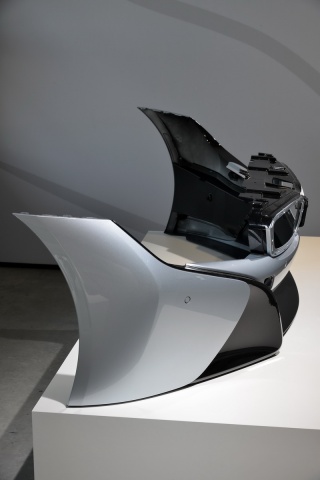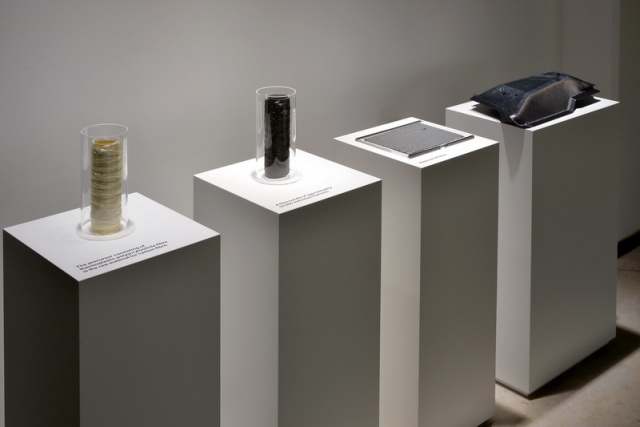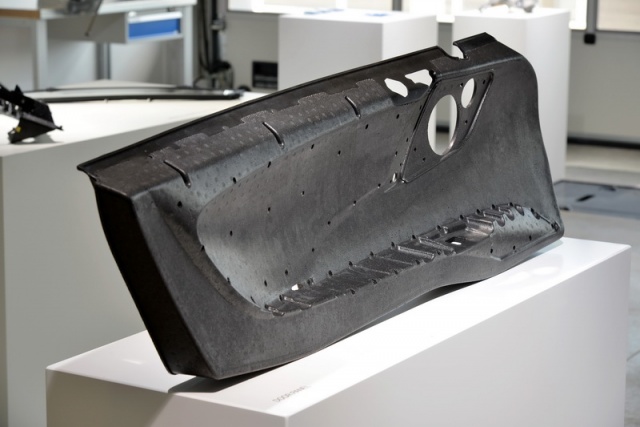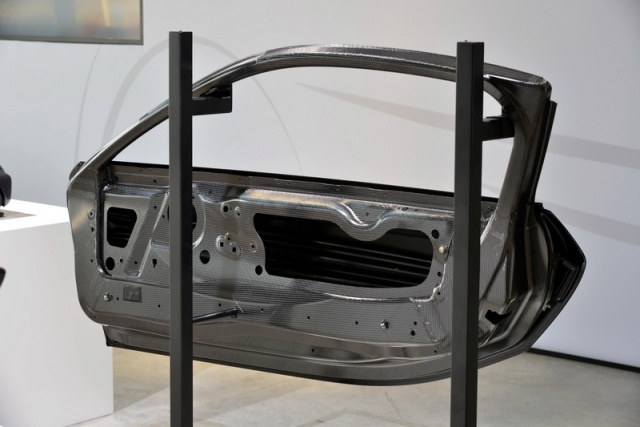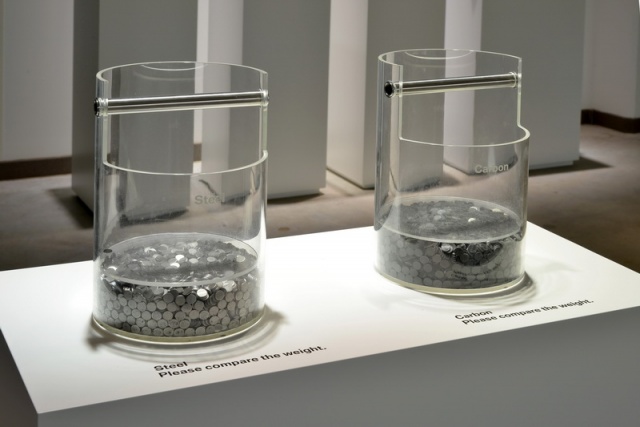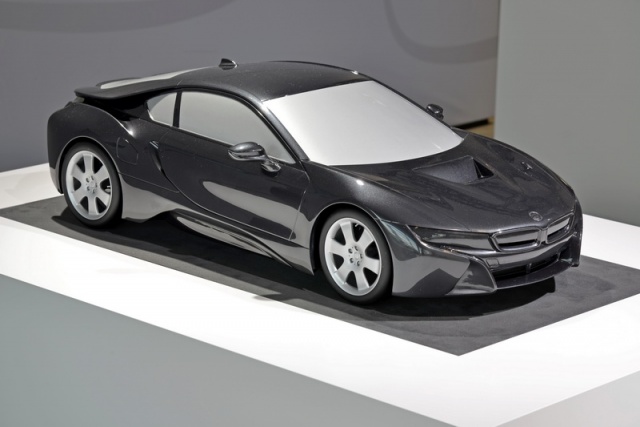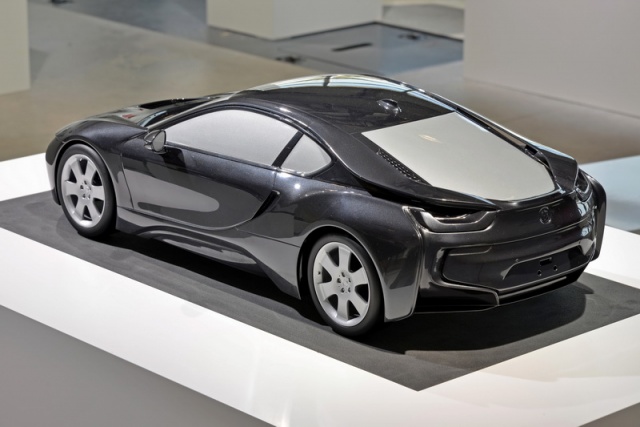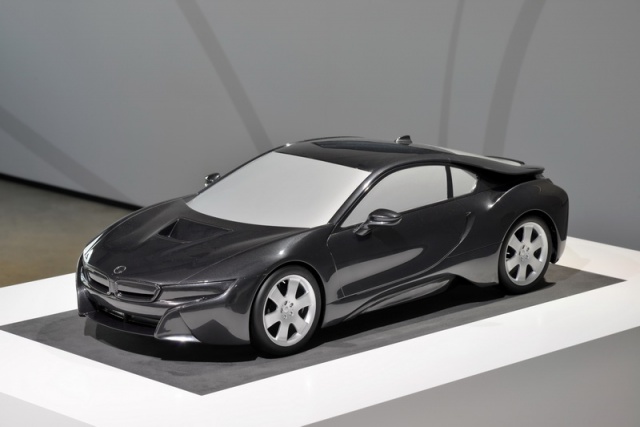Overall rating: 4.5/5
Following on from our first taster of the BMW i3 megacity hatch, the Munich marque gives us a much more alluring green car proposition - the i8 supercar, a plug-in hybrid with a mid-engined layout, heroic performance stats and super-clean emissions figures. Having driven a pre-production model at a French test facility, we're more than suitably impressed.
In the metal 5/5
There's no doubting that the BMW i8 is a hit on this score. Nearly two metres wide, not even 1,300mm high and with a long body incorporating a stretched wheelbase, the plug-in hybrid exudes menace. Even draped in garish disguise, the i8's looks are sure to be spectacular. In striving for a slippery coefficient of drag of 0.26, the designers wanted to get as close to a teardrop shape as they could without adorning the car with drag-inducing spoilers. This has led to some idiosyncratic design features - the 'Rear Aero Levels' running either side of the rear screen to the boot, and the innovative 'Air Curtain' hidden ducts in the front bumper being two of the more intriguing of them. Then, of course, the i8 has wing doors, which hinge up from the A-pillar. All in all, the sense of drama and futurism it possesses means the i8 passes the first supercar test: kerb appeal.
Inside is as yet incomplete, but again features typical BMW dash architecture, a superb driving position with seats mounted as low as possible and plenty of tech displays to show you what power sources the i8 is drawing its propulsion from. It's more conventional than the BMW i3, though, and even has a pair of diminutive rear seats in an effort to qualify as a four-seater, aiming to maximise market appeal.
Driving it 4.5/5
It can be difficult to fairly assess a car which, by the manufacturer's own admission, "isn't finished yet", so I was ready to find plenty of areas for fine tuning. The BMW i8 is further from market than the i3 was when we drove that last month, meaning it should have felt less resolved. If I'm nit-picking, the electric power steering system is once again too light, with weight trying to stand in for feel, and there's a sense that the front isn't as well-keyed in as the rear as yet, with turn-in just a little fuzzier than mid- to late-bend grip. But I'm clutching at straws here, because otherwise the i8 was superb.
If there's one word BMW wants to get over to us in its presentations on the structure of the i8, it's 'lightweight' and the best news of all is that you can feel this permeates every facet of the car's behaviour. The petrol engine is mounted behind the passenger compartment but just ahead of the rear axle, meaning it squeaks into the mid-engined category, but due to the clever construction of the i8, its centre of gravity is less than 460mm above the deck, which is phenomenal. All of this translates into joyous handling characteristics that would almost be befitting of an M-badged car, not an i. Understeer is absent if you get the car set up at the start of the bend correctly, while the way it shuffles available grip from wheel to wheel is unobtrusive and feels quite natural to the driver. The rear end of the car is very, very lively, too - one drivetrain engineer was only too keen to confirm the i8 is happy to oversteer if provoked, but the real benefit is the large amount of adjustability it affords you mid-bend. All-wheel drive the i8 may be, but it feels rear-biased and all the better for it.
It doesn't lack for pace, either, with monstrous shove from low speed thanks to the e-motor's instant torque coupled with some high-end fireworks from the combustion unit at the back all equating to a car that's properly quick. Speaking of the petrol engine, the three-cylinder unit is really appealing, a pleasingly gruff engine note permeating the cabin under hard acceleration. In simple terms, it's essentially half a 3.0-litre BMW straight-six with a turbo bolted onto it, and as you'd expect of a company with an enviable track record in the powerplant department, it's a corker. Expect to see it in MINIs and 1 Series in the future, albeit in lower states of tune than this epic 231hp output.
When not driving the i8 so hard, it's a serene ride. Compliance is good, the drivetrain as a whole is smooth in its delivery of the usable power, and the brakes - which use regenerative technology to charge the lithium-ion battery where possible - are very capable in all situations. There's a clever control system similar to xDrive, which marshals the four-wheel drive provided by the e-motor driving the front wheels while the petrol engine propels the rears; there's no mechanical link between the two axles. Driving it in electric-only mode, the car is perfectly accelerative and smooth, and needless to say silent too - but this isn't its forte, as it has a range of just 35 kilometres without the petrol engine's help. Most of the time, in most of its modes, the i8's three-pot will be burning fuel, giving that amazing quoted economy figure of 113mpg and a combined range in excess of 500 kilometres.
Finally, in terms of charging, vitality can be restored to the i8's battery in less than two hours using one of BMW's i Wallboxes, and it'll only take three hours via a basic domestic socket. The petrol powerplant charges the battery in most driving modes when the car is cruising, BMW assuring us there will not be a situation in any road driving where the battery is exhausted before the fuel is - meaning you should never find yourself running on the petrol engine alone. Therefore, in order to be a realistic proposition for purchase, the i8 is less dependent on a suitable public charging network being in place than the i3 will be.
What you get for your money 3/5
Ah, once again we come to price - made of exotic materials and to exacting weight reduction processes, and featuring hugely complex drivetrain technology to ensure its civil driving manners, it's clear the i8 won't be cheap - especially as we now know the i3 will cost €33,160 to buy come November - even with €10,000 from the Government in your back pocket. Pushing a senior BMW chief at the event, he wouldn't give a ballpark figure but did say "in excess of €100,000 and considerably less than €200,000". Gulp...
However, there's nothing really quite like it available. The i8 offers genuine usability and cheap running costs, and - now the R8-based Audi e-tron has bit the dust - it looks like it has this particular section of the market all to itself for the foreseeable future. It should also be reasonably well-specified as standard, given it is a truly premium product with a price tag to match.
Worth Noting
While the i3's e-motor - which actually runs a slightly higher state of tune (for want of a better word) than the i8's - makes do with a single reduction gear for motive power, the i8's has to have a two-speed example. This is because, in full power modes, the car is capable of 250km/h and if the e-motor had a single gear capable of that speed, the i8 would have been very sluggish in full electric mode. This way, only the shorter 1:11 'first' gear is used in full electric mode, meaning a 120km/h limited maximum speed, with the software switching into the longer 'second' once the petrol engine fires up at the back.
Summary
BMW uses phrases like 'Urban Escape' and 'Driving the Revolution of Joy' when talking about the i8, and it's also going to ask the thick end of €100,000 for what is, in essence, a 1.5-litre, three-cylinder car when it finally goes on sale in early 2014. Yet this really is a watershed moment, requiring a new way of thinking to fully appreciate it - because, if you cut through the spiel and put your small capacity preconceptions to one side, what you're left with is a sensational car, full stop. The boss of the i8 project, Dr Carsten Breitfeld, said he wanted people to realise the i8 drove well precisely because it is a hybrid, not despite this fact, and going on these pre-production examples, he'll be vindicated; the i8 has all the accelerative punch you could want from a car boasting 243hp-per-tonne, it has ridiculously entertaining dynamics provided by its twin-motor drivetrain and it will look sensational. We said only a few weeks ago that the i3 was promising - we think the i8 is the proof that BMW is onto another game-changing automotive brand. It really is that good already, so we cannot wait to drive the finished article next year.

